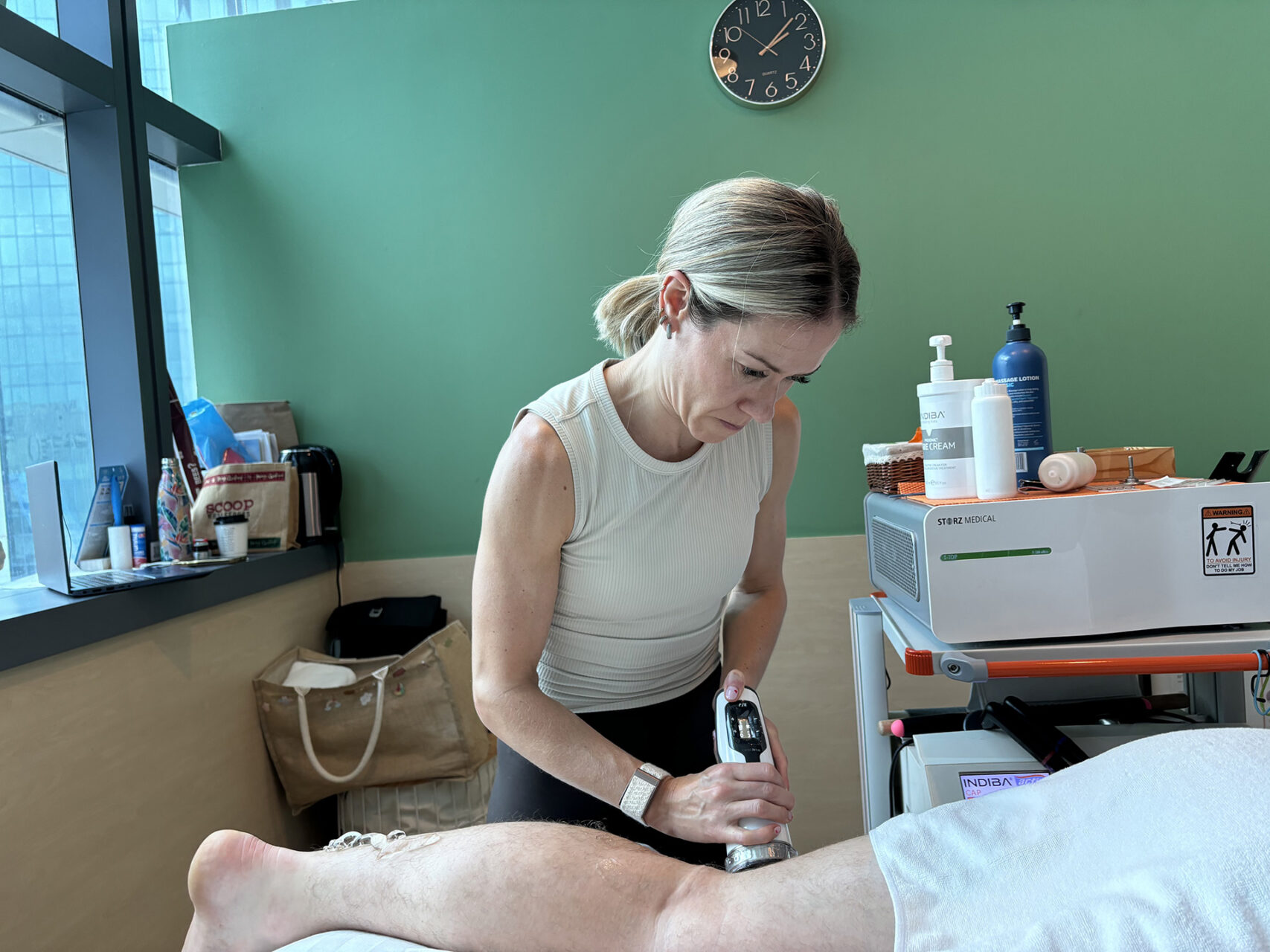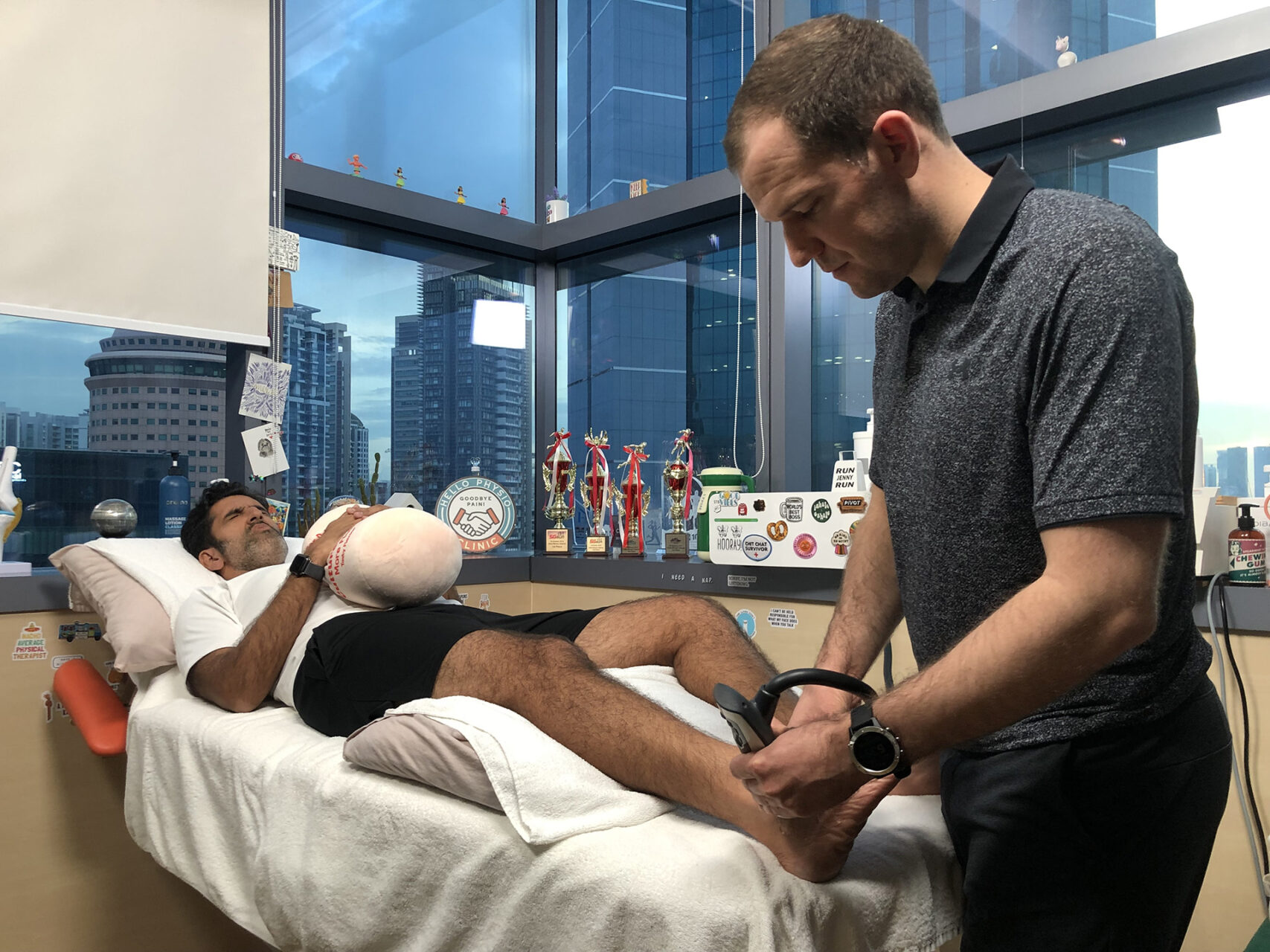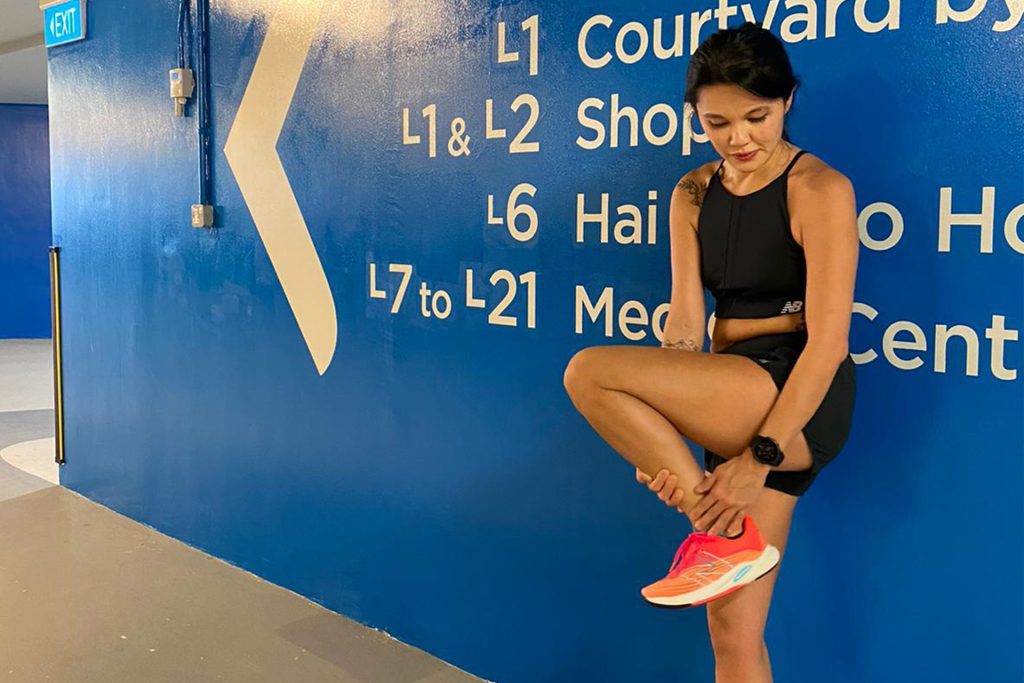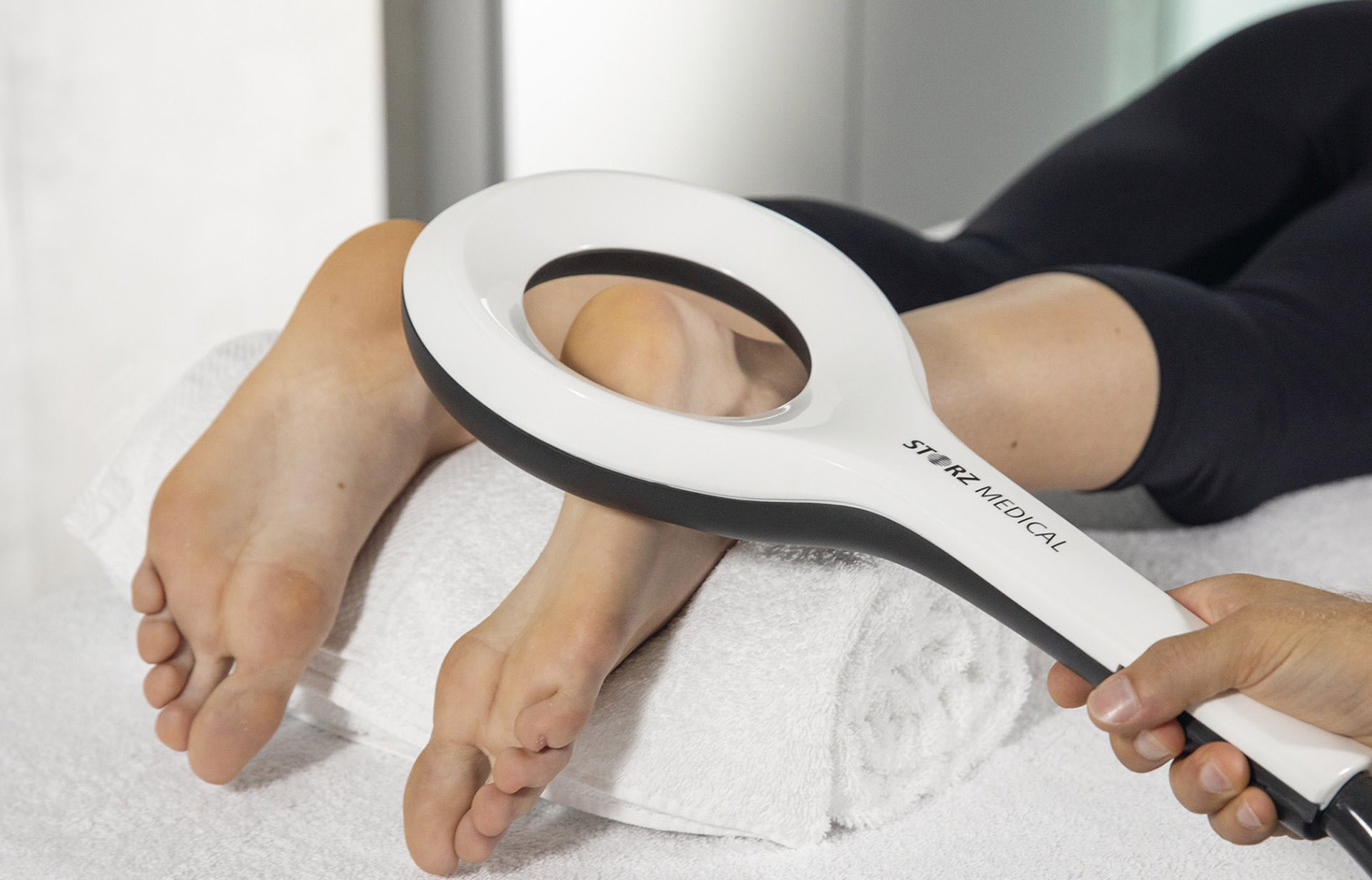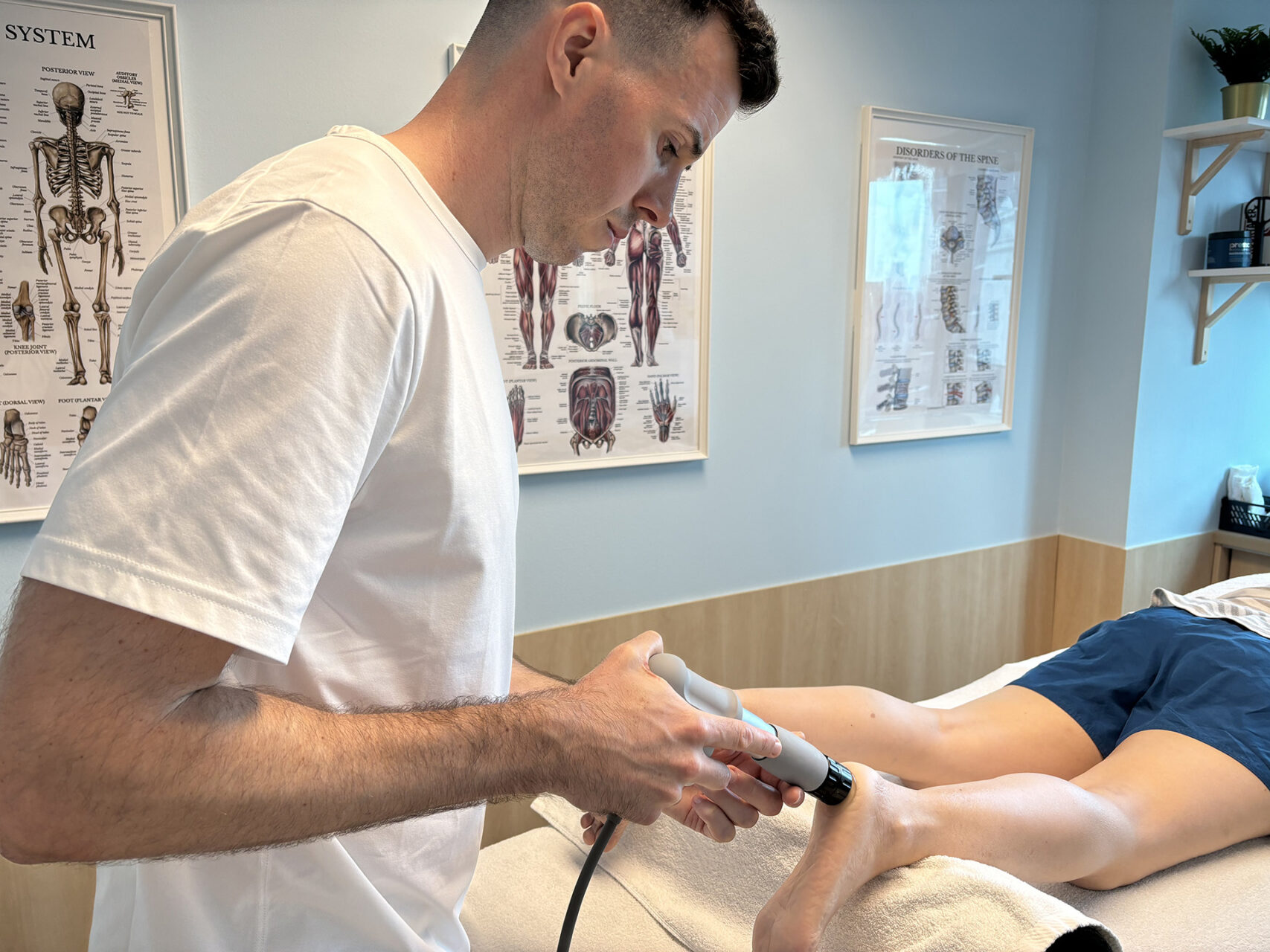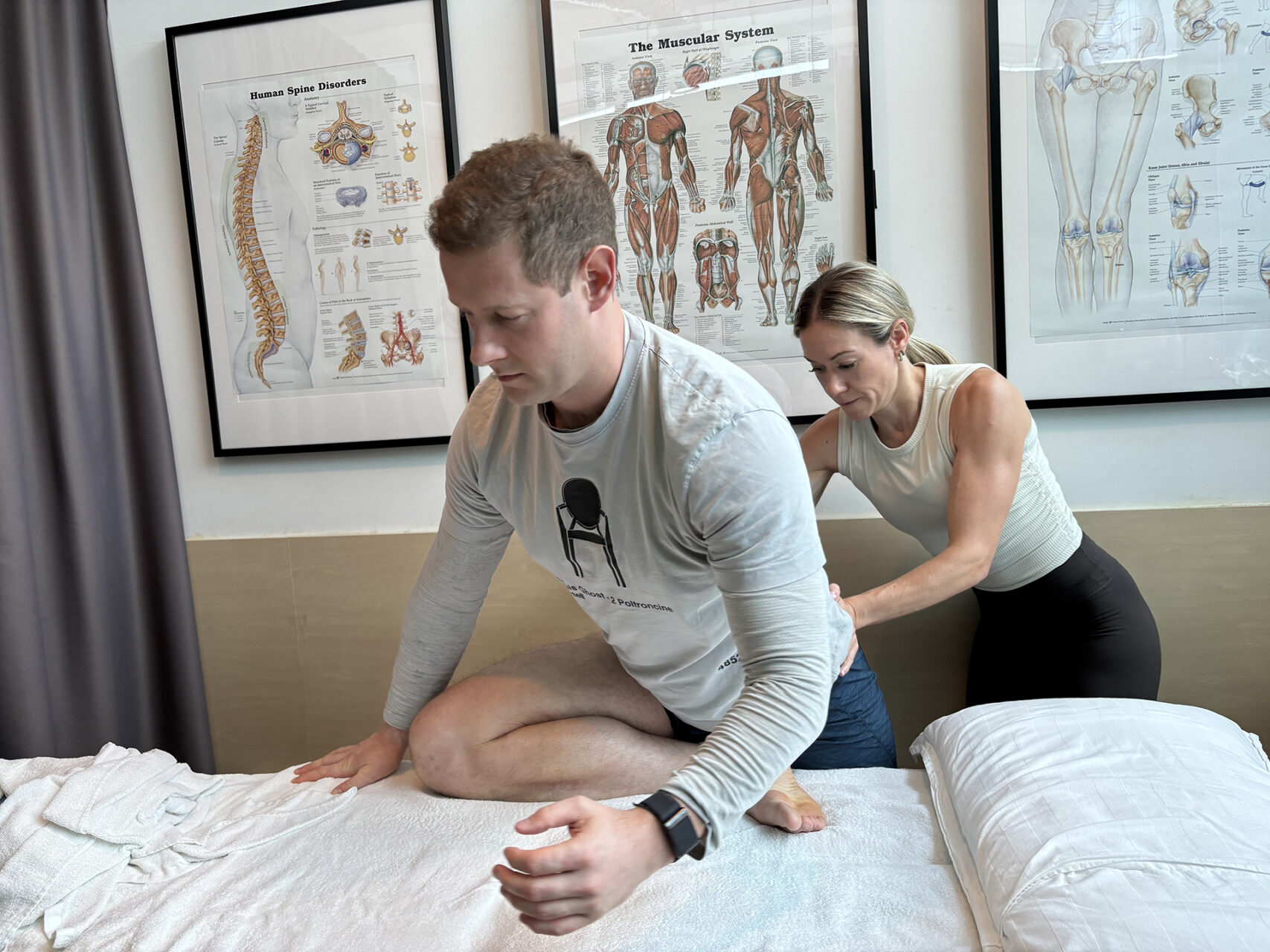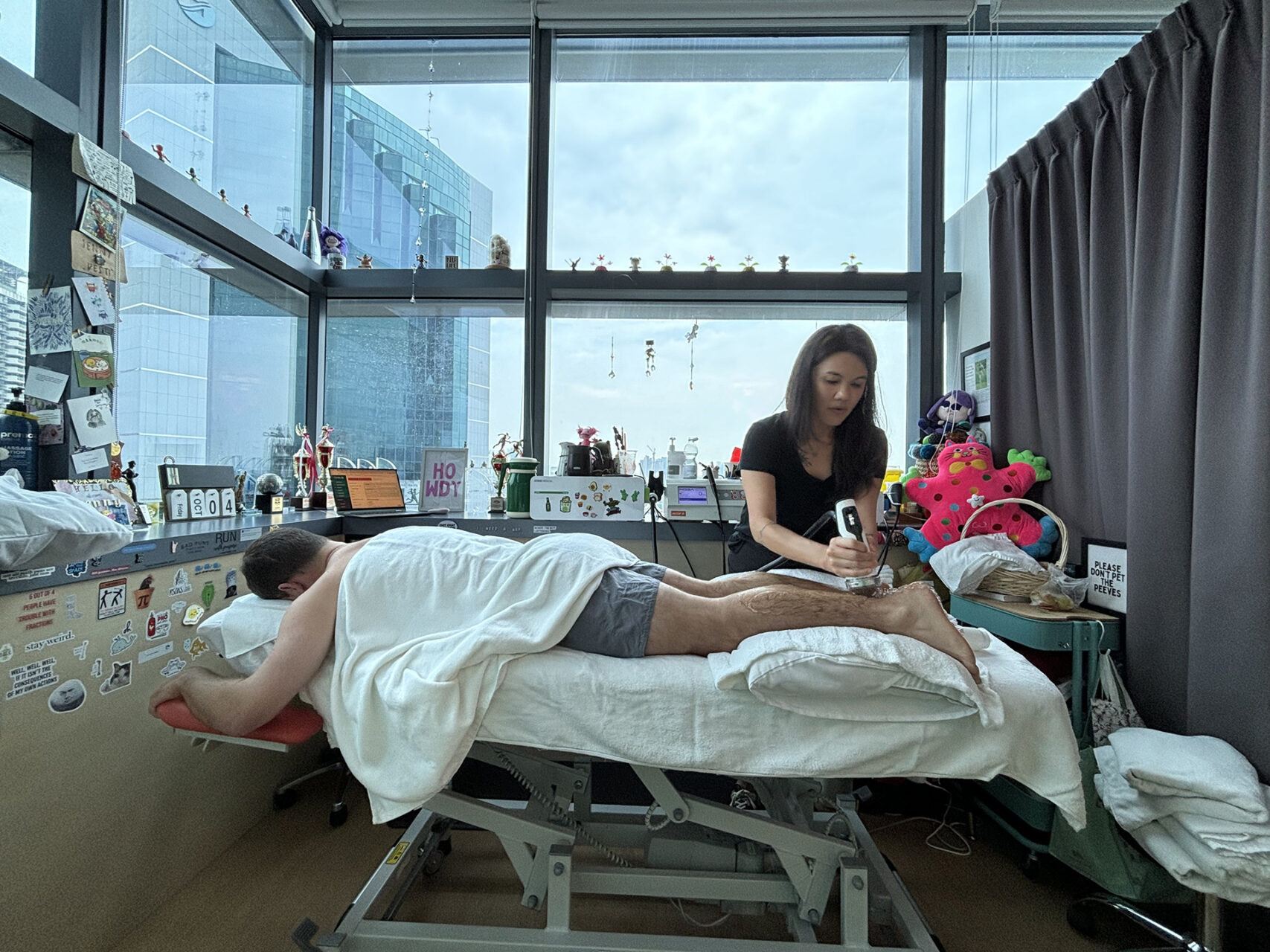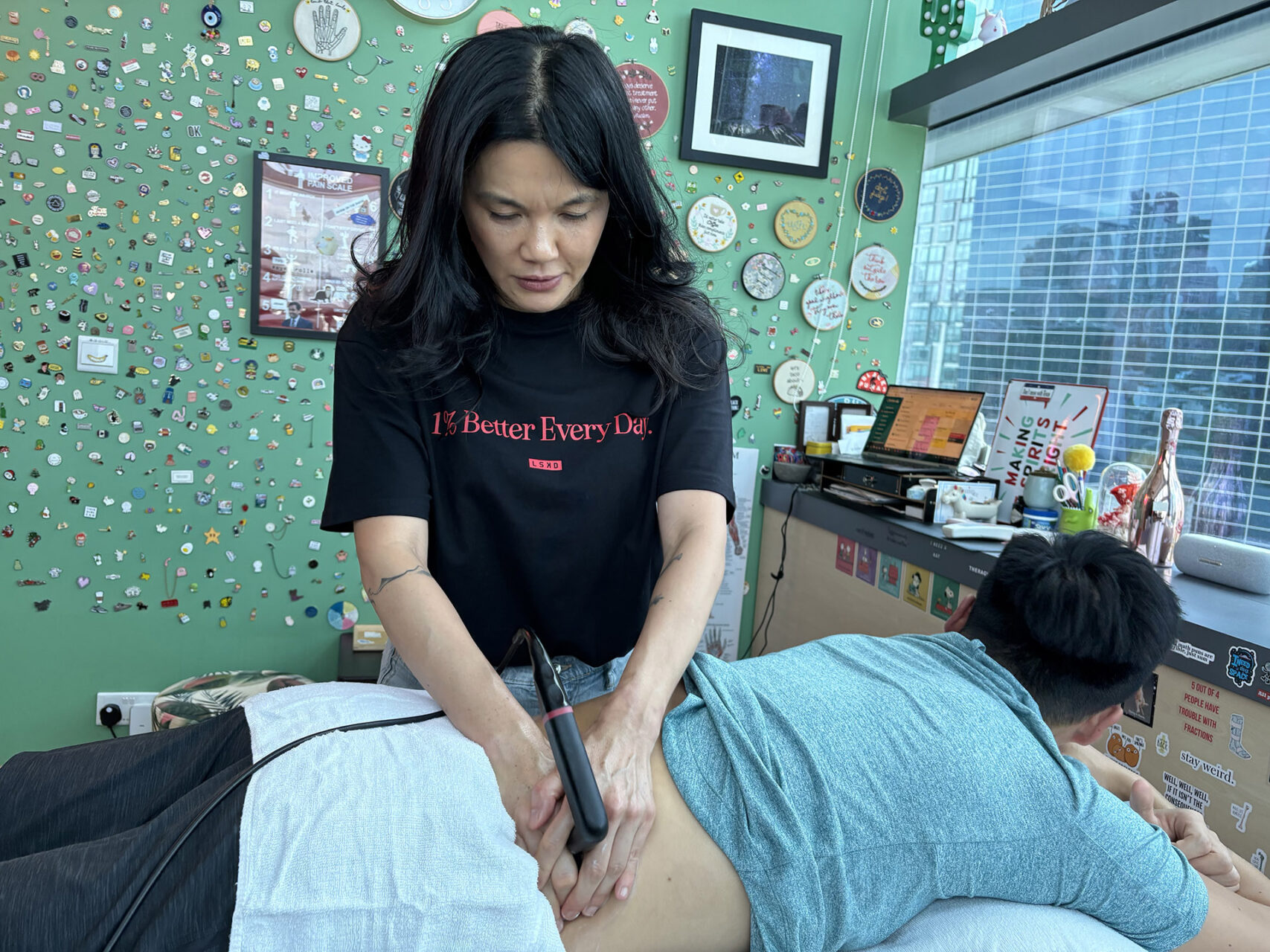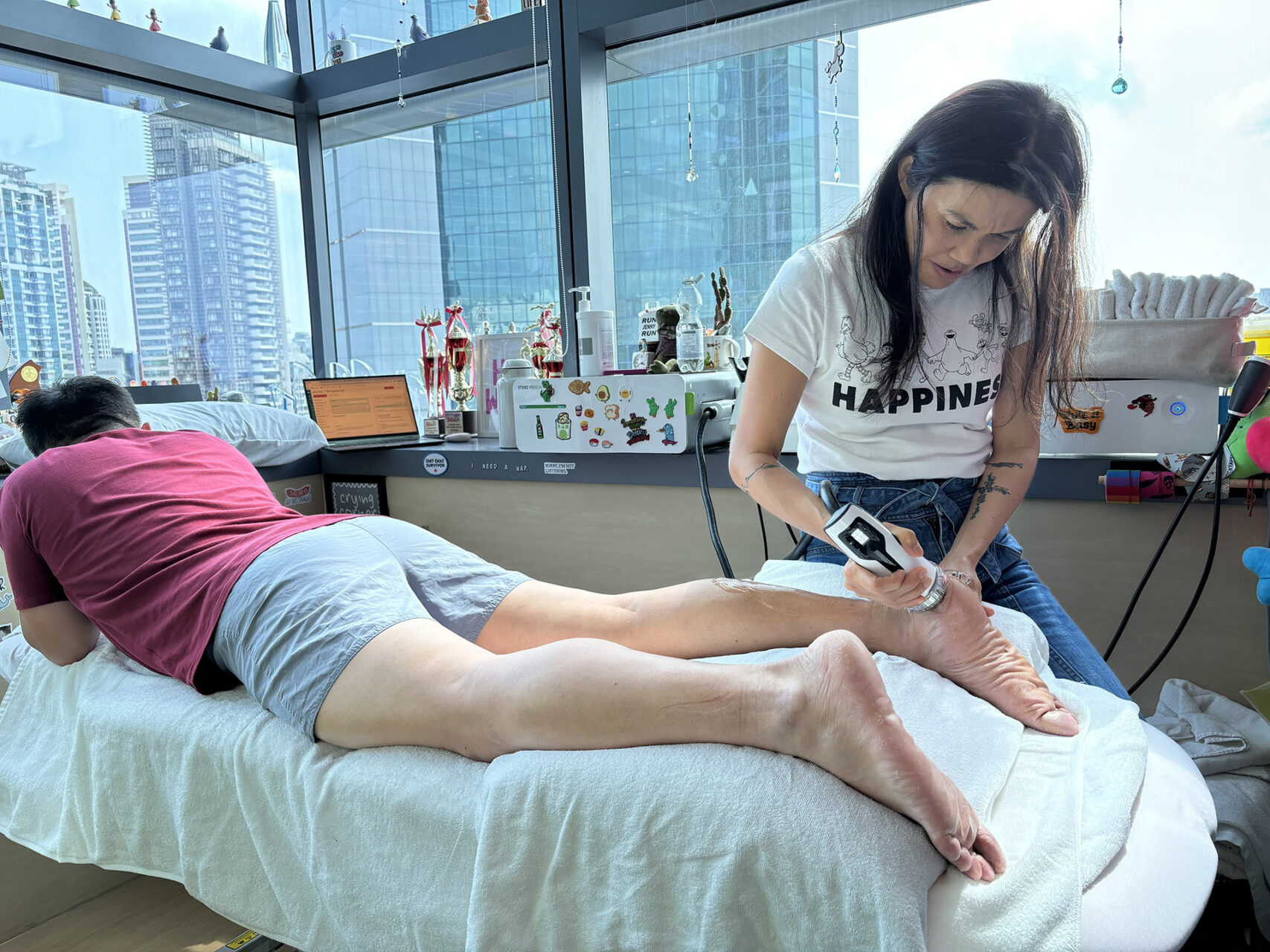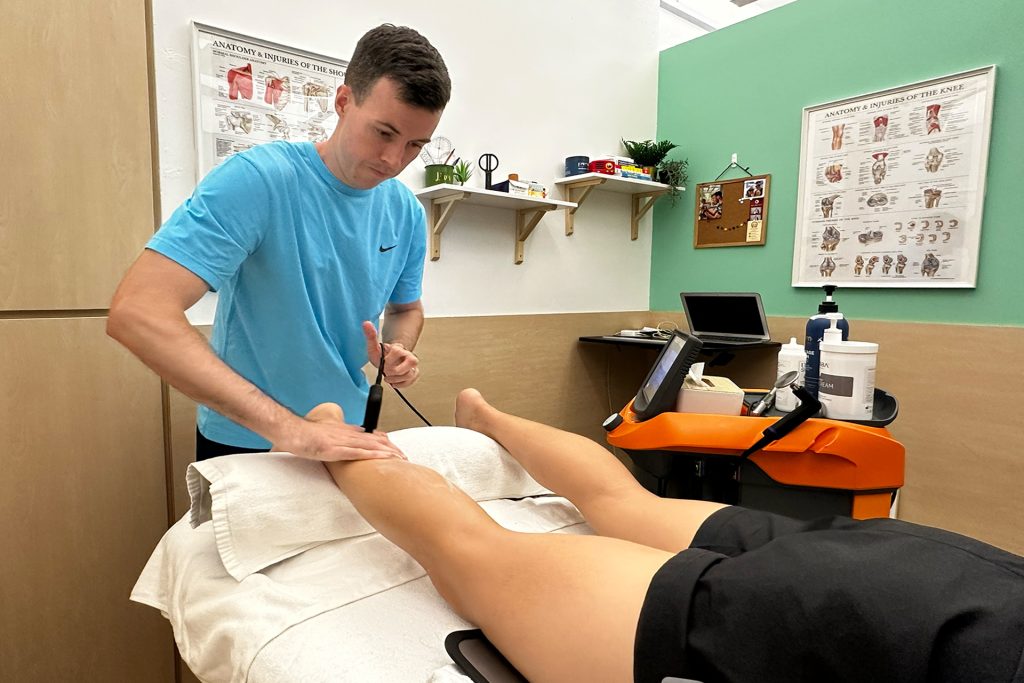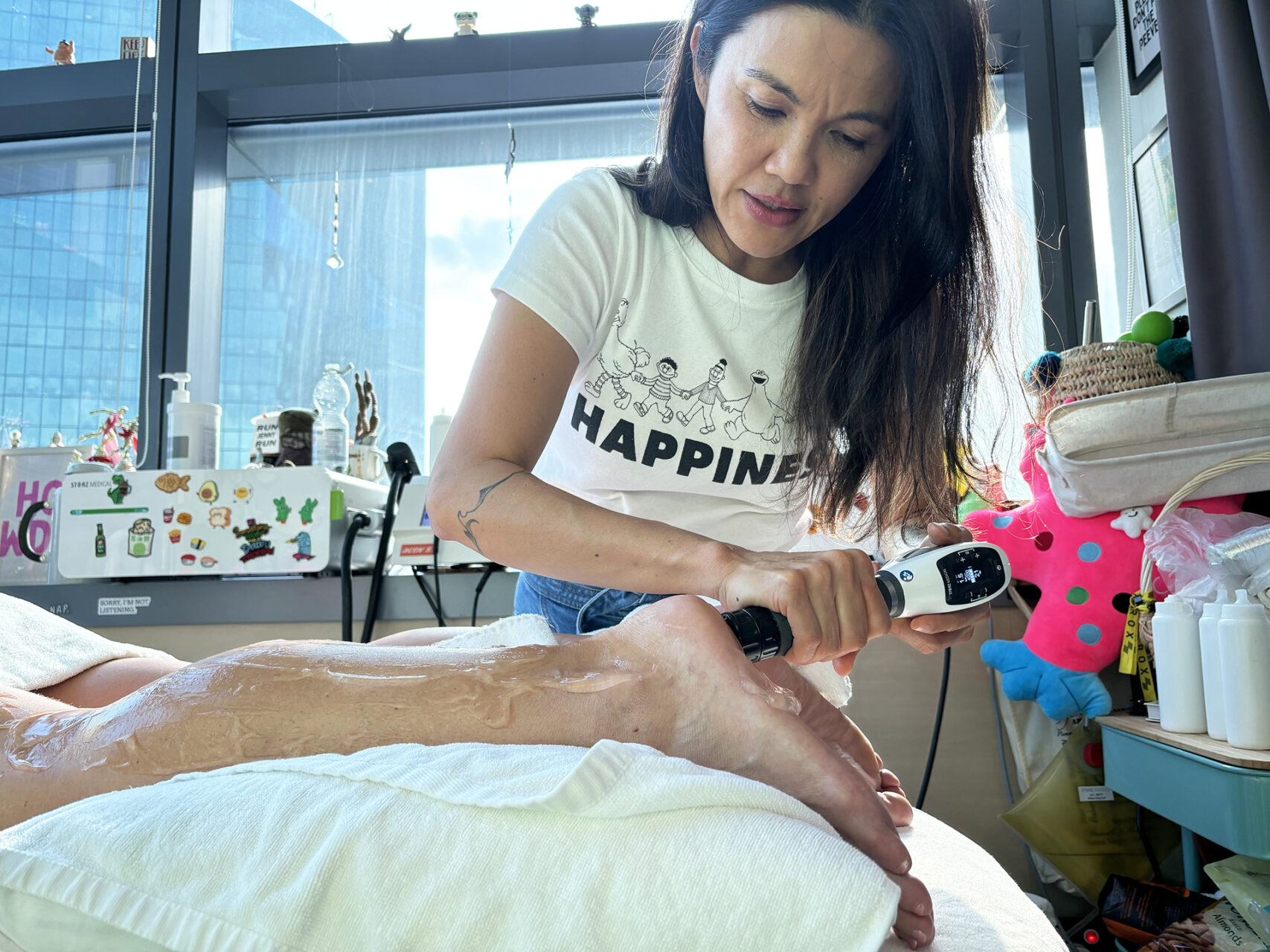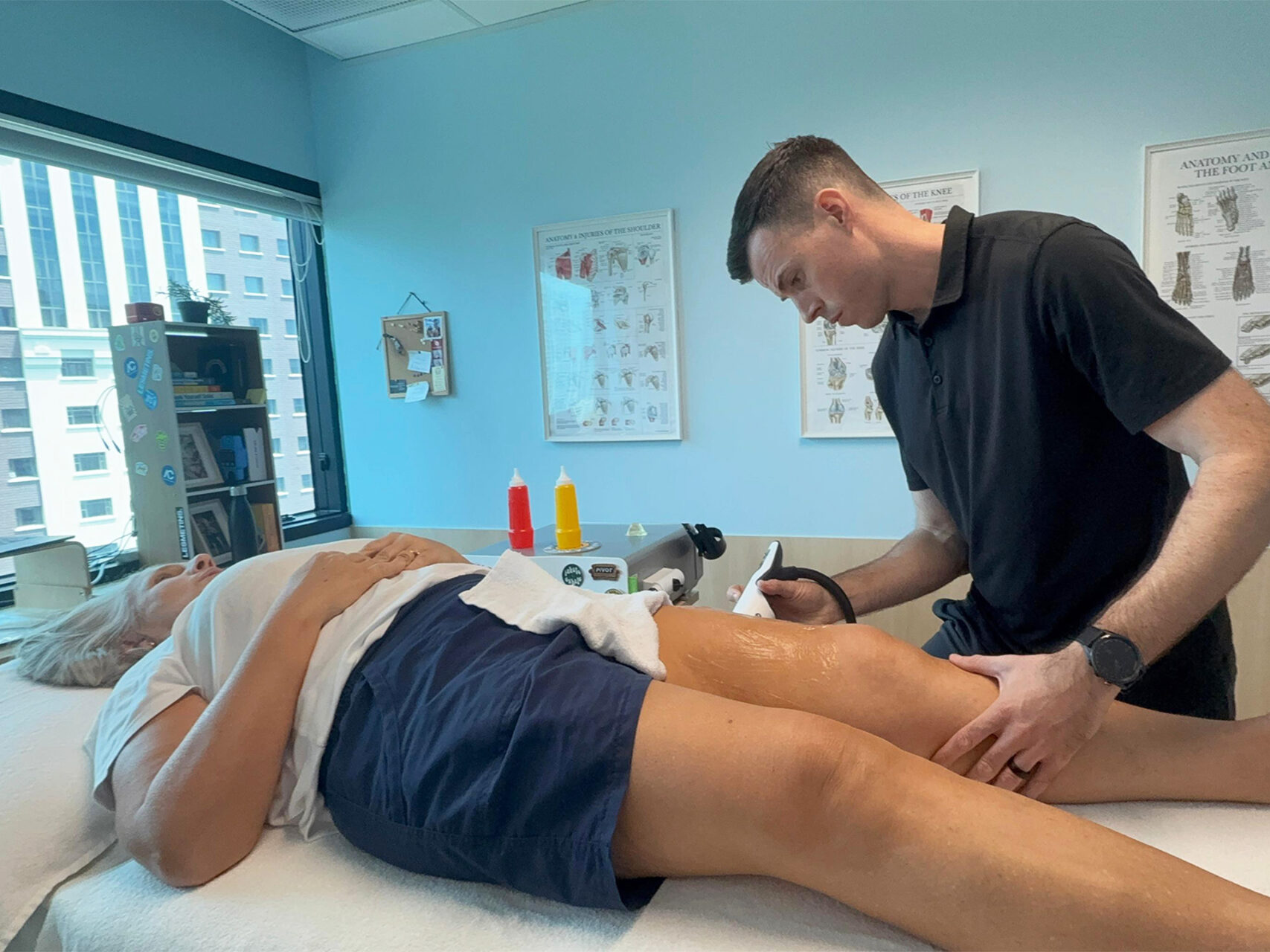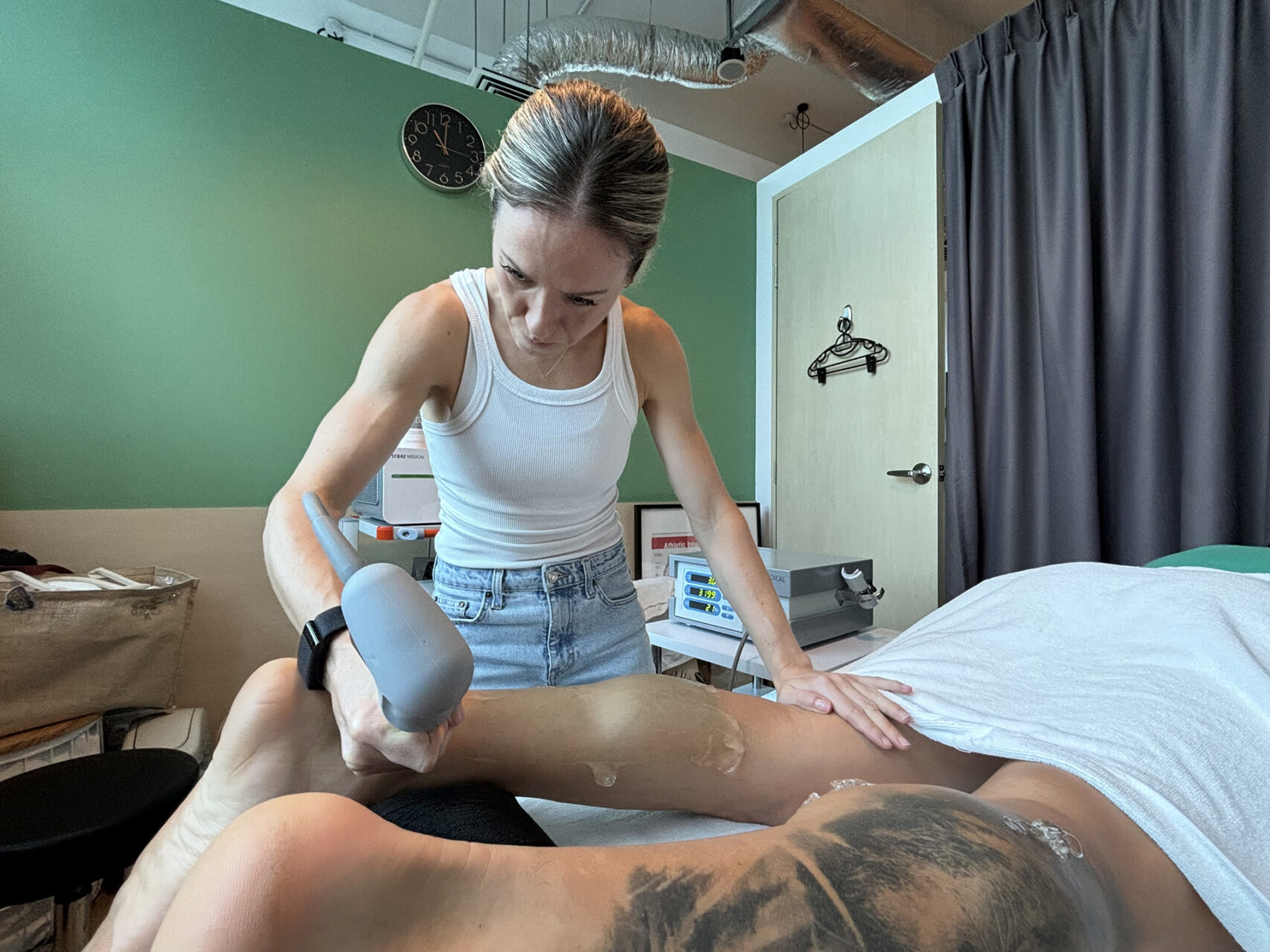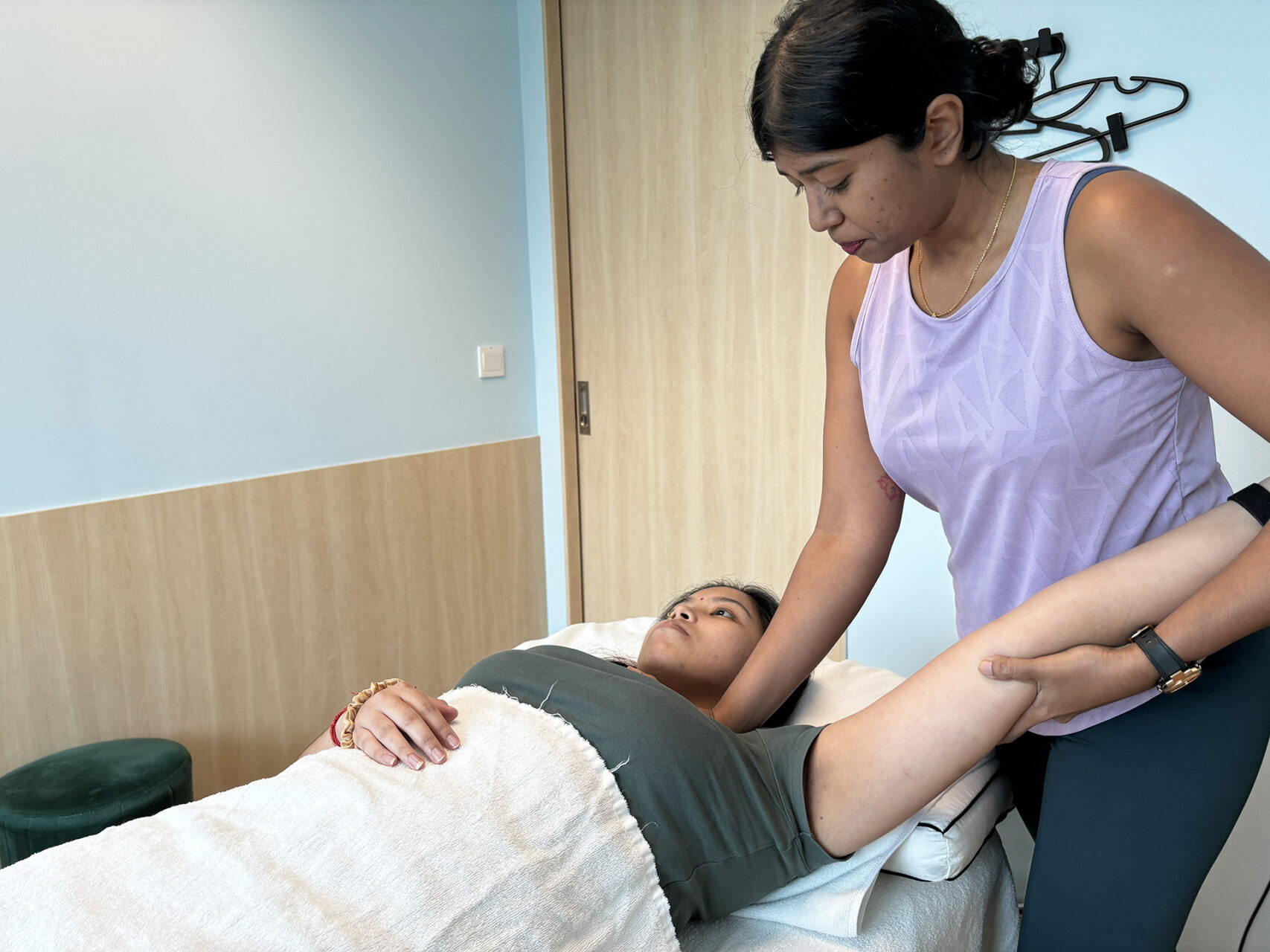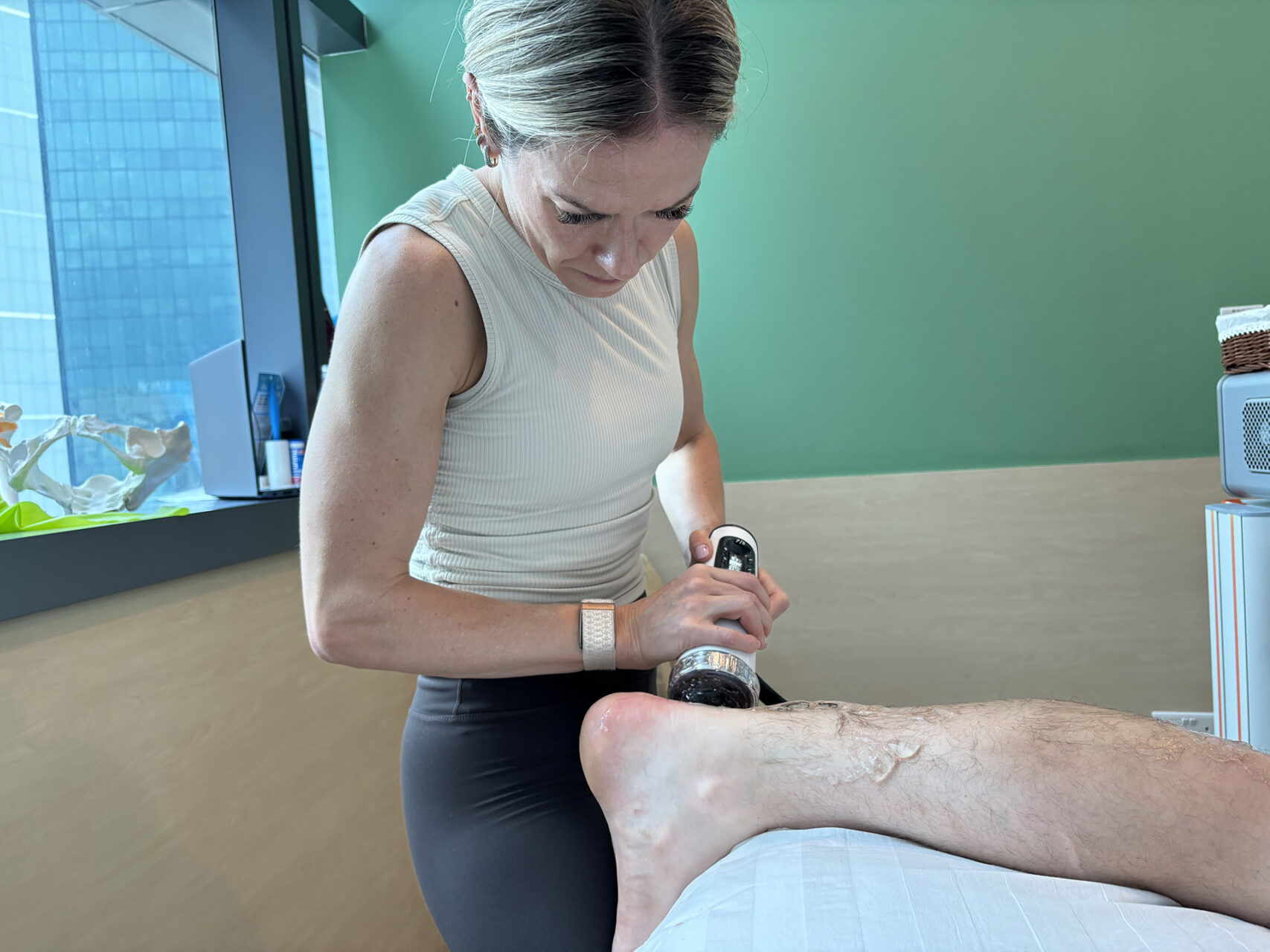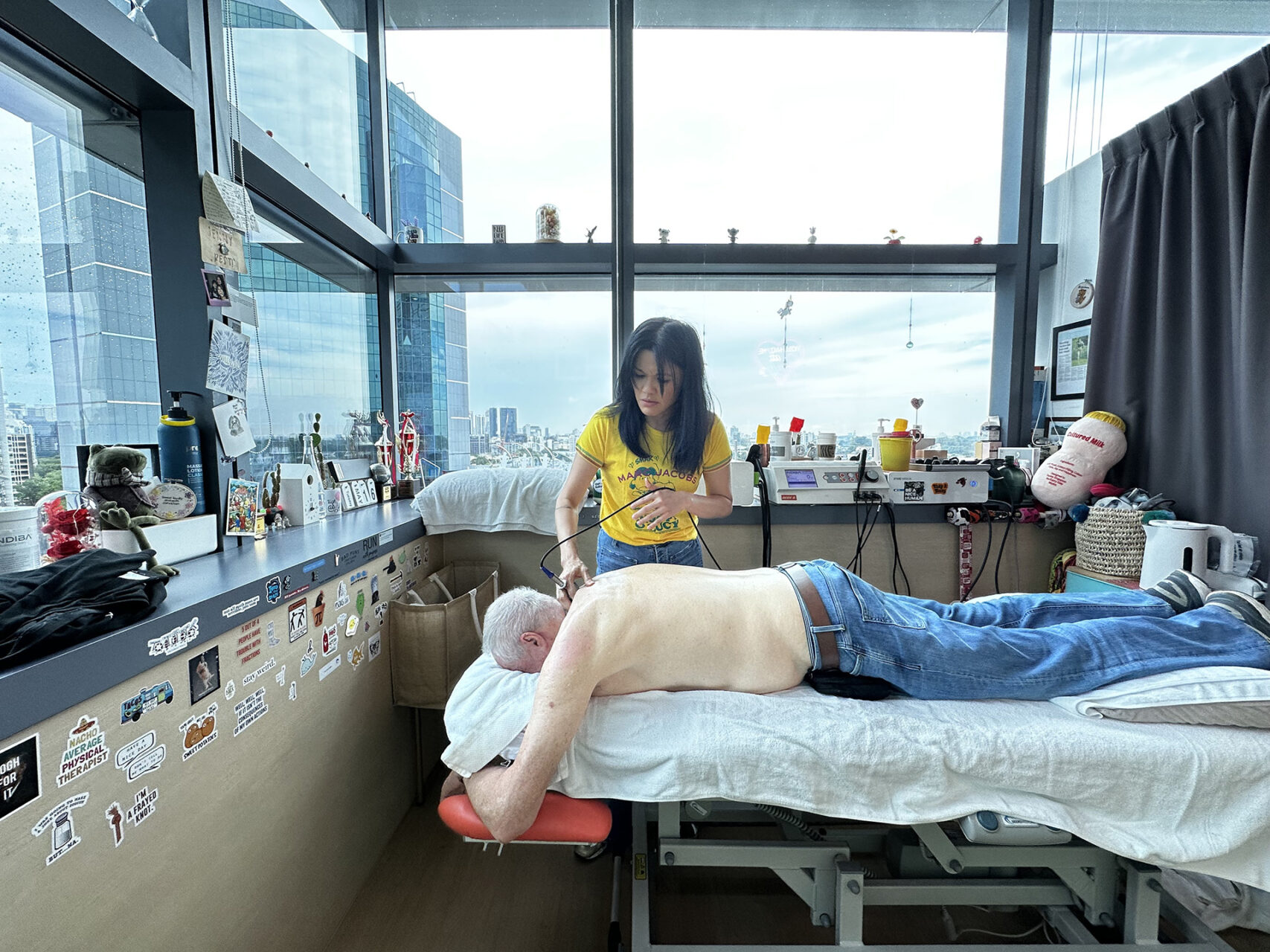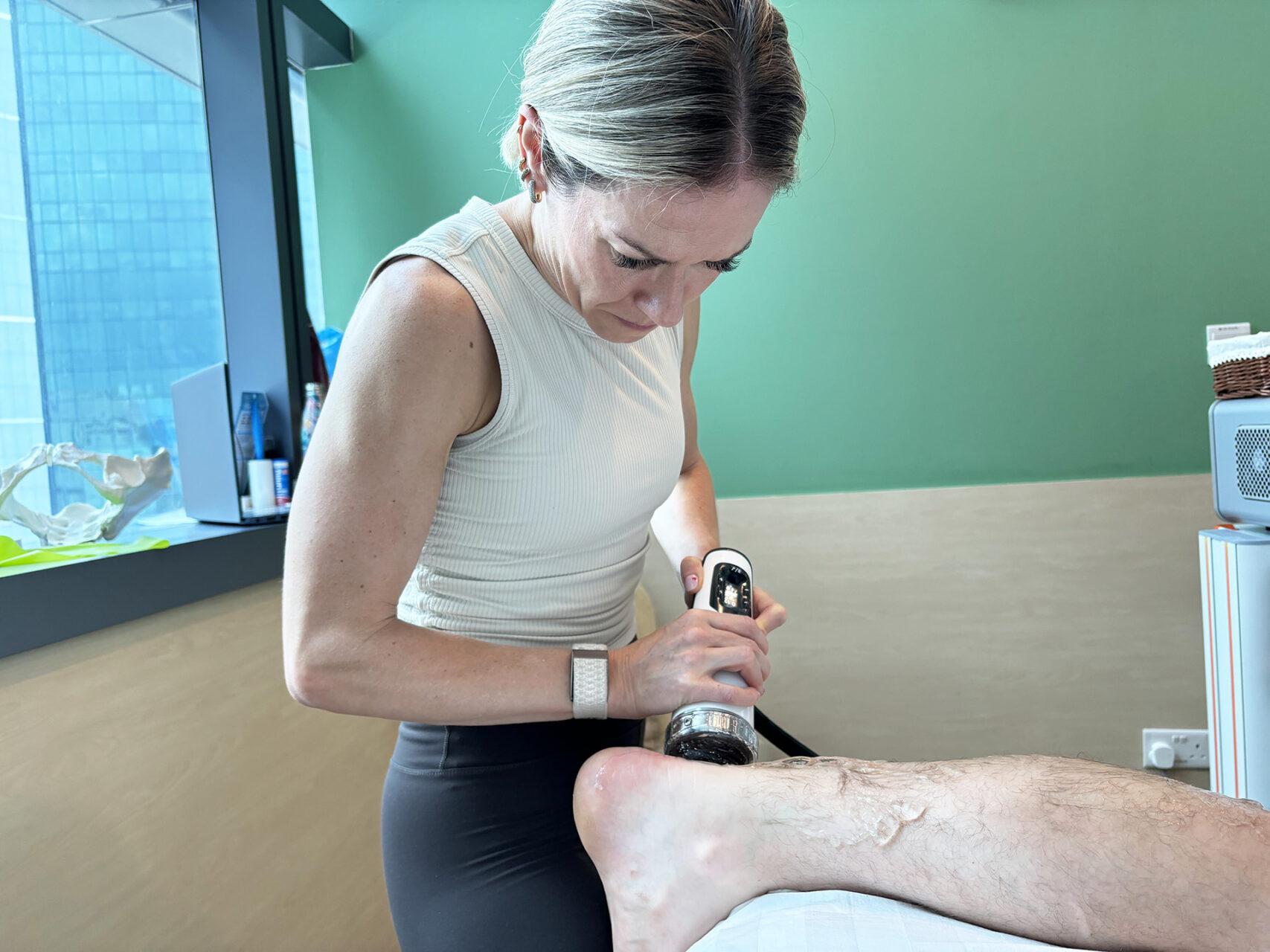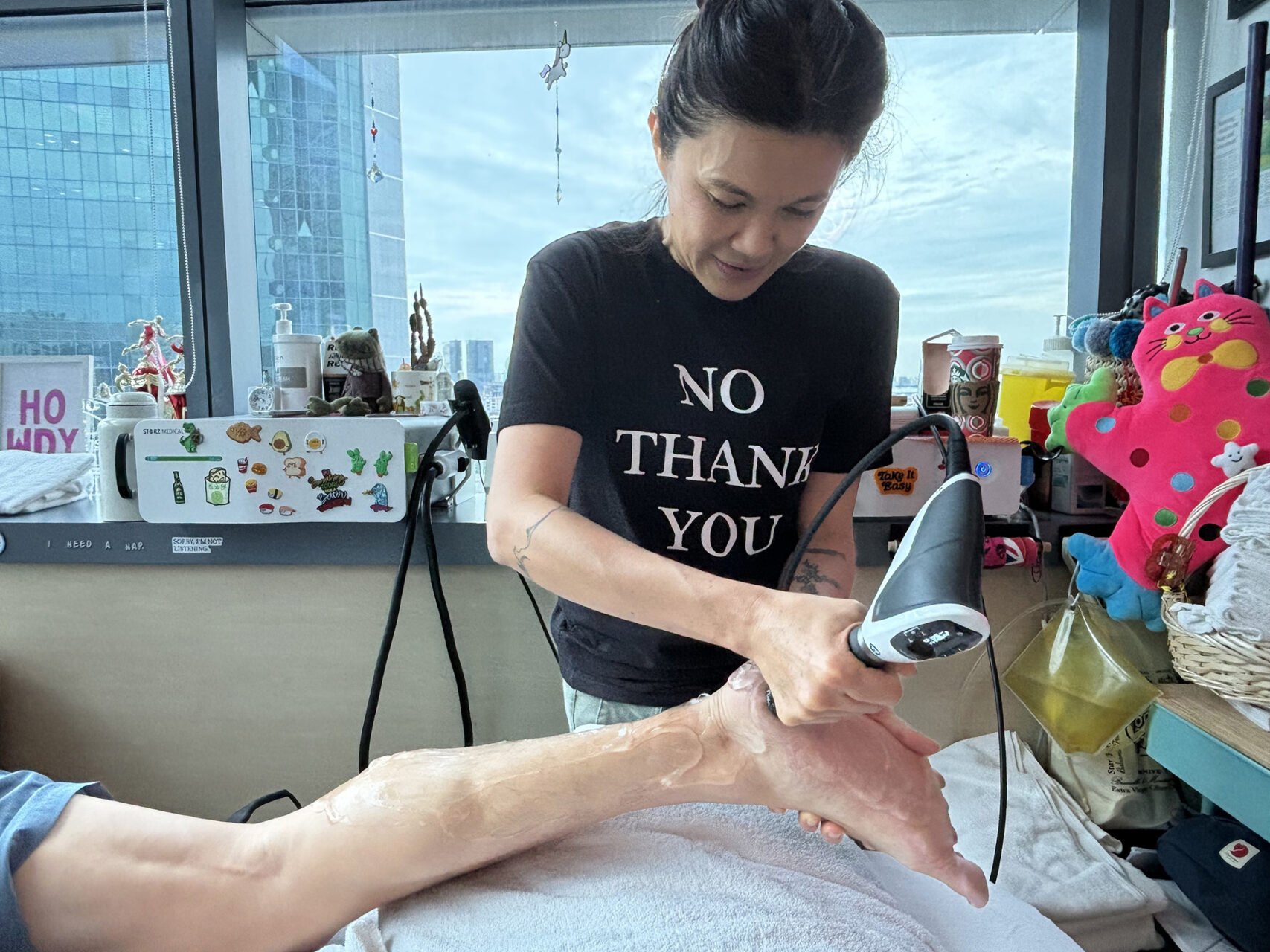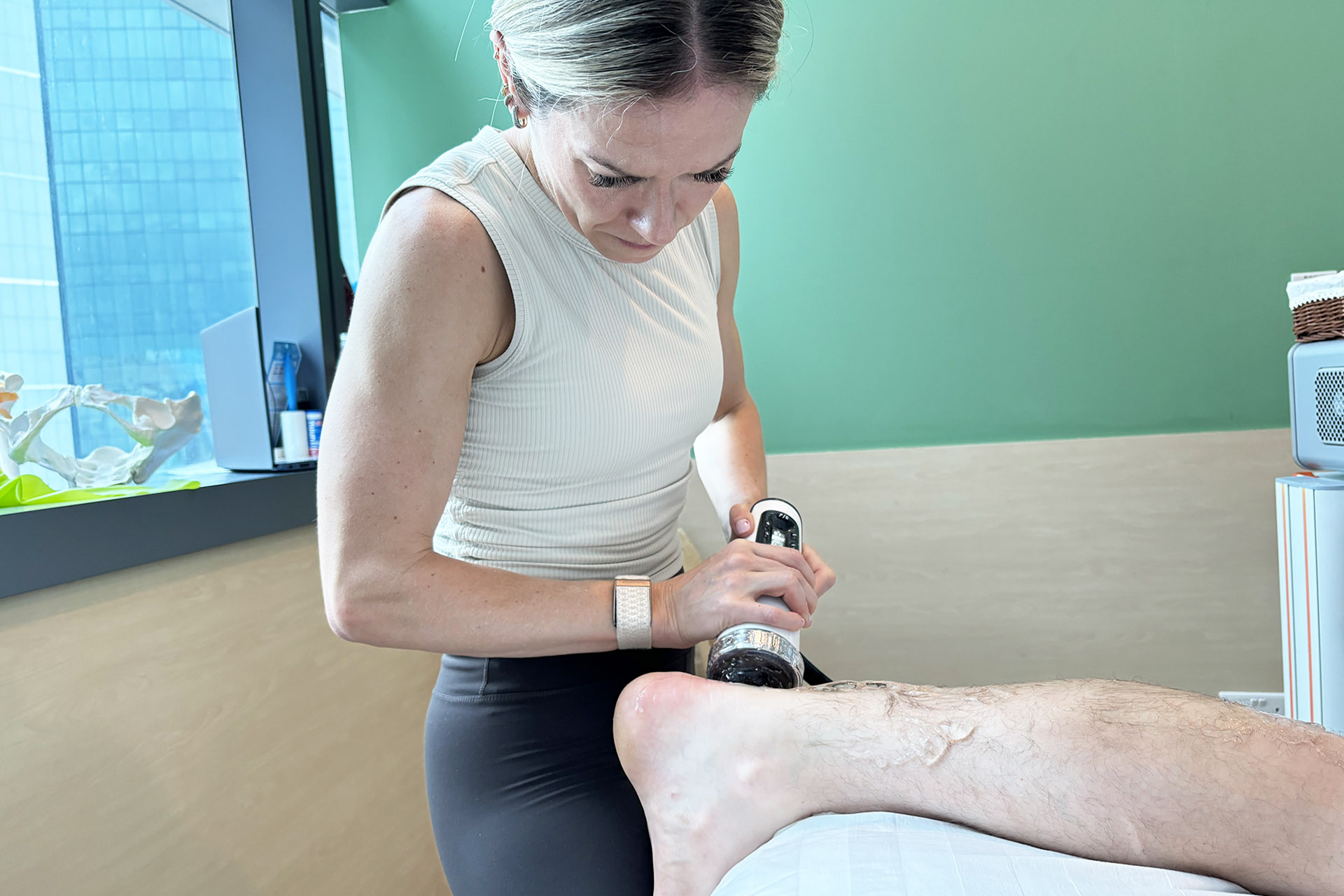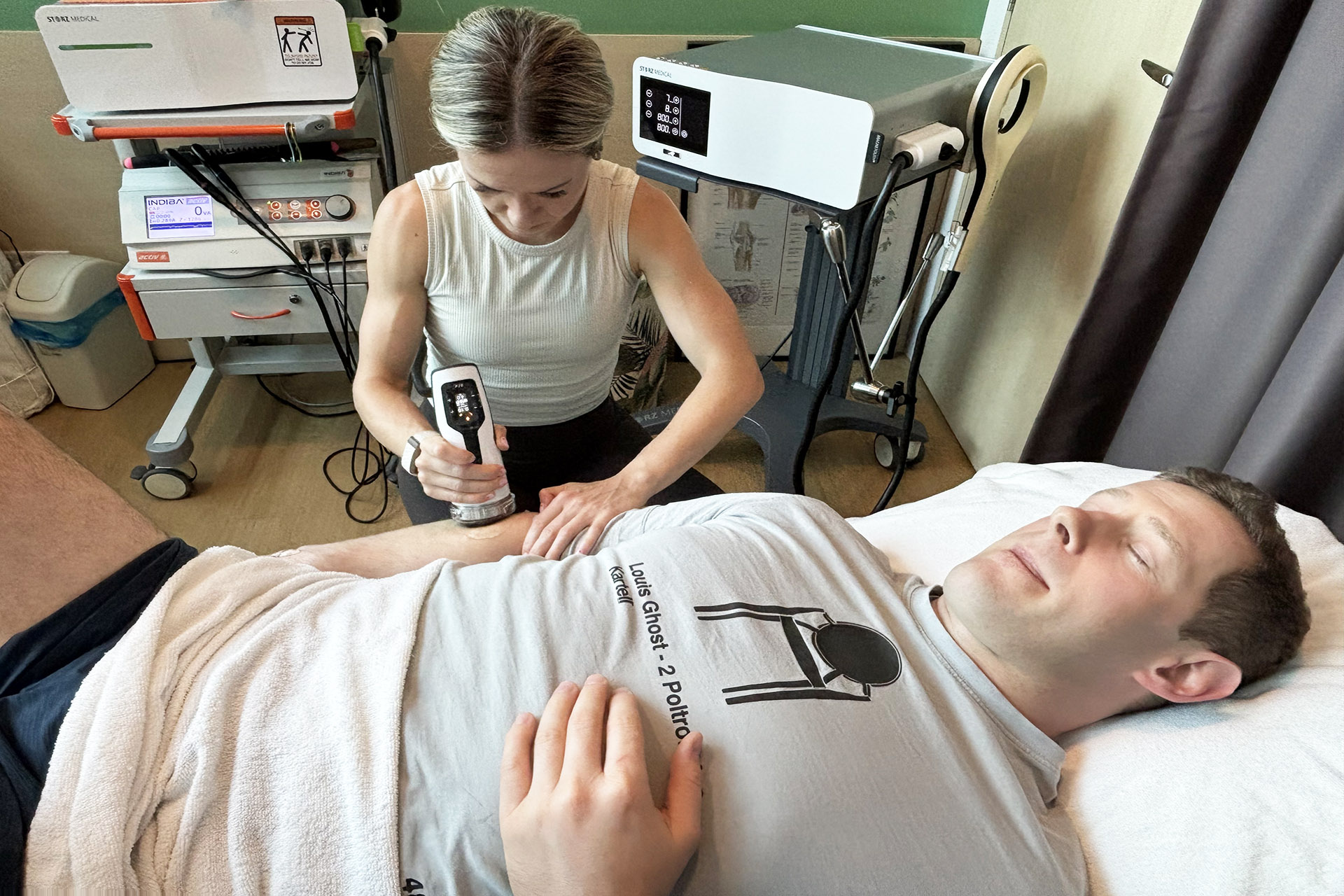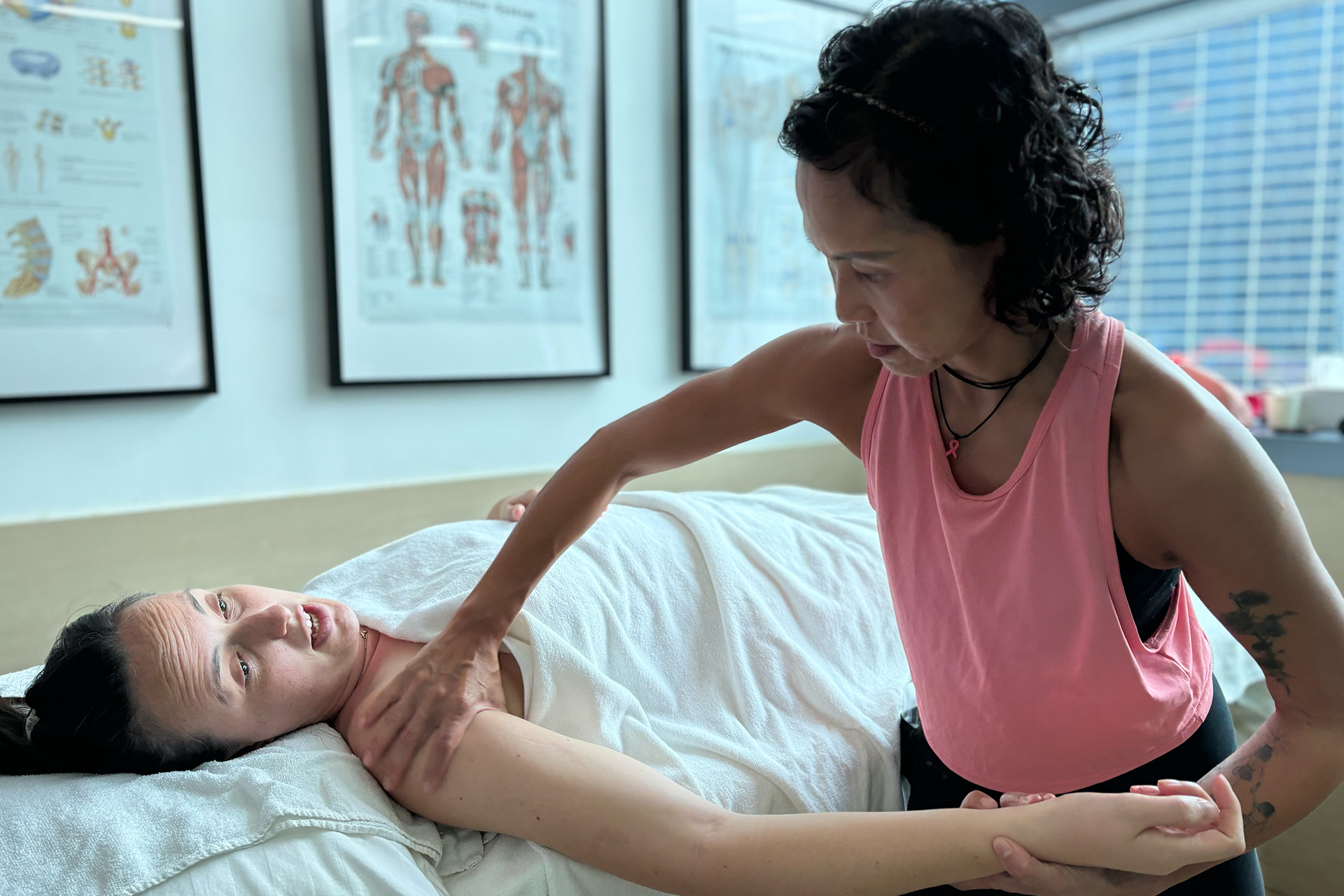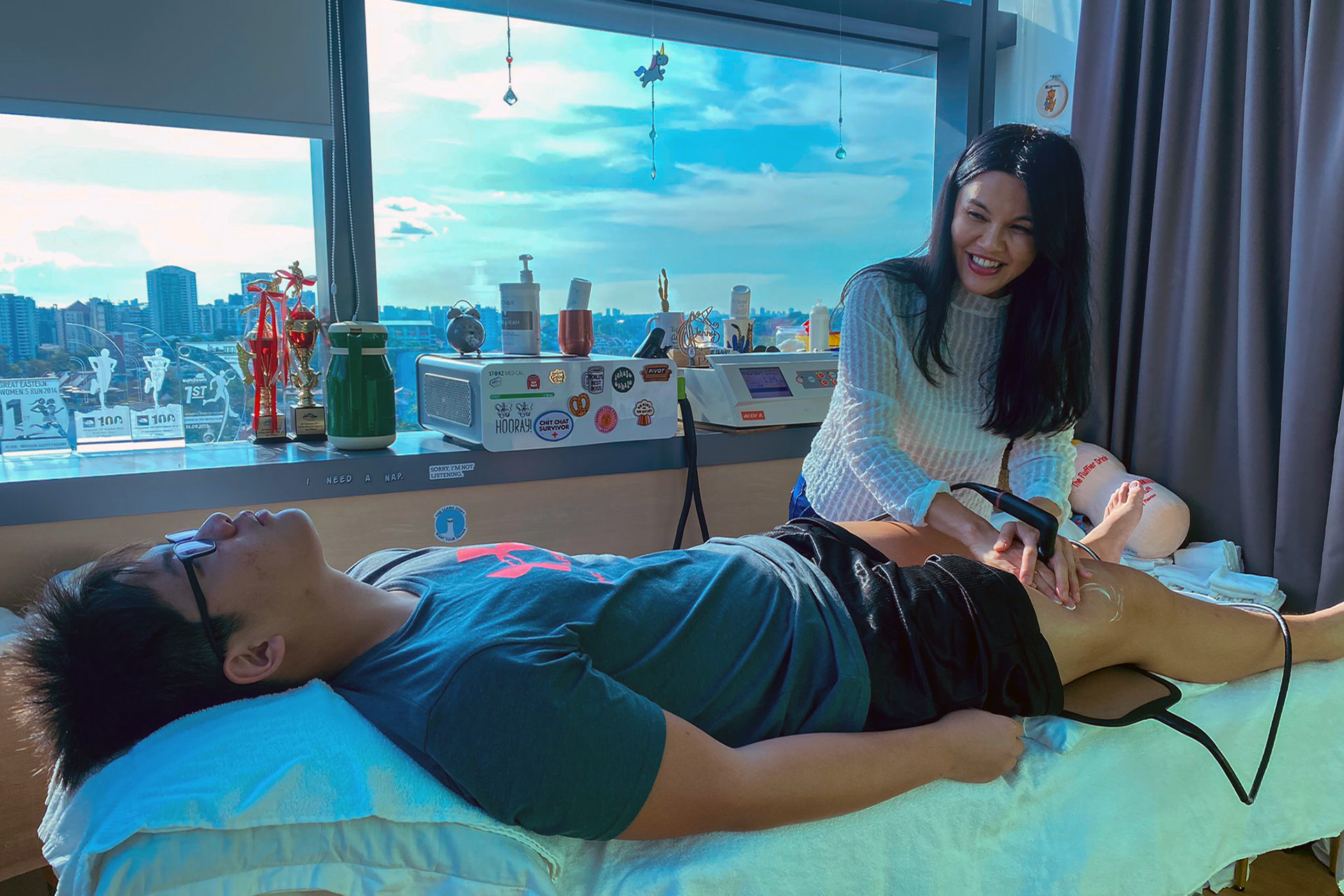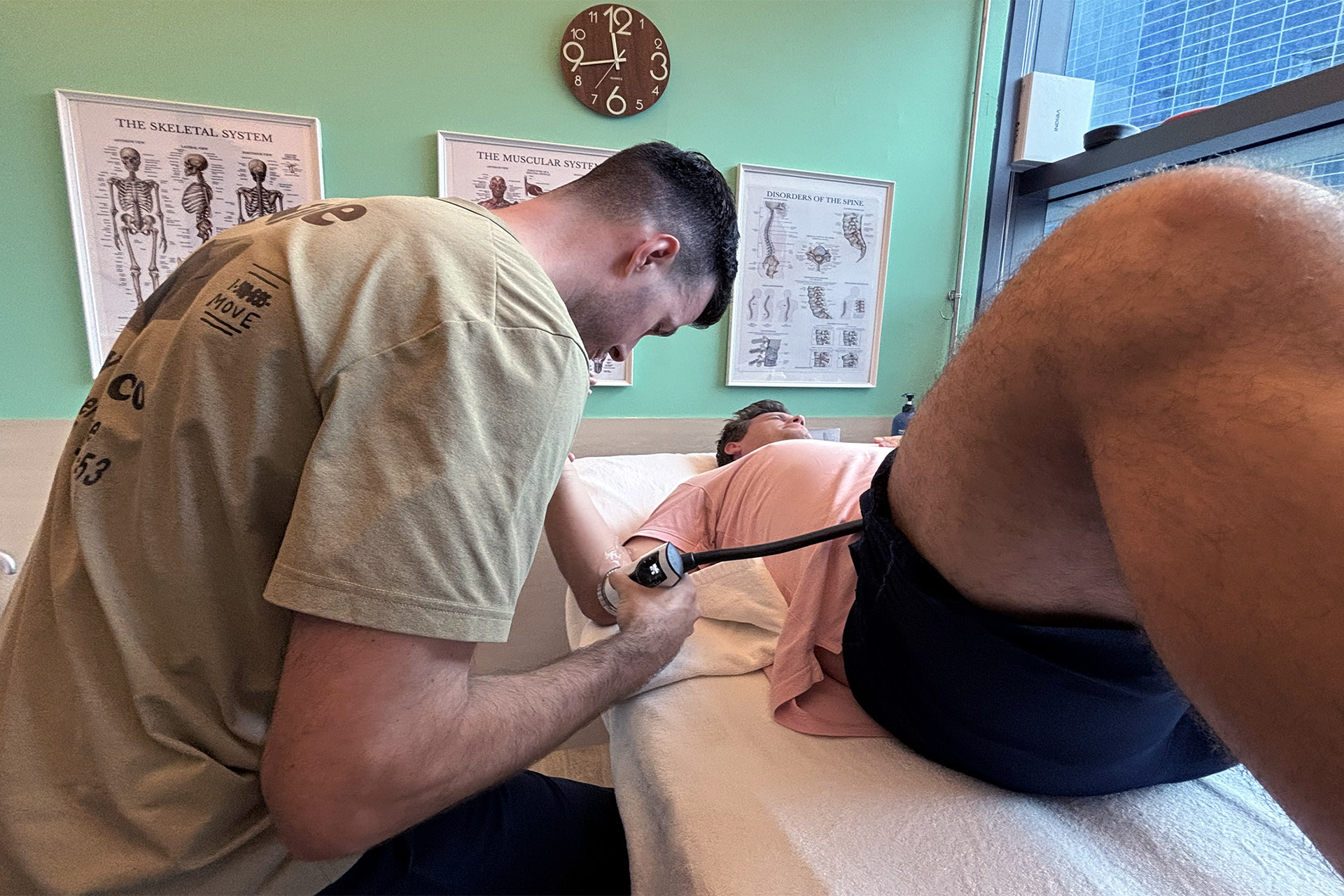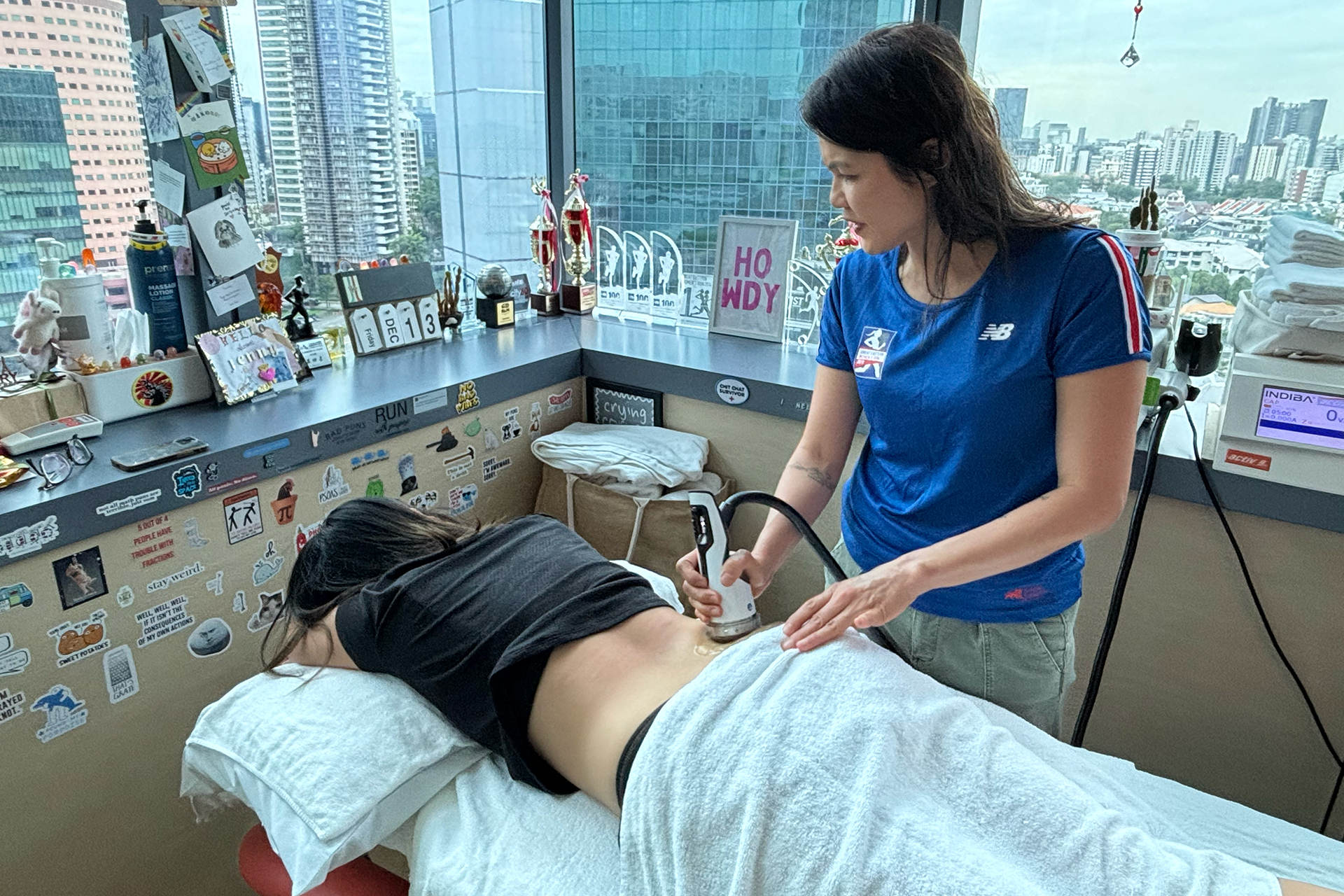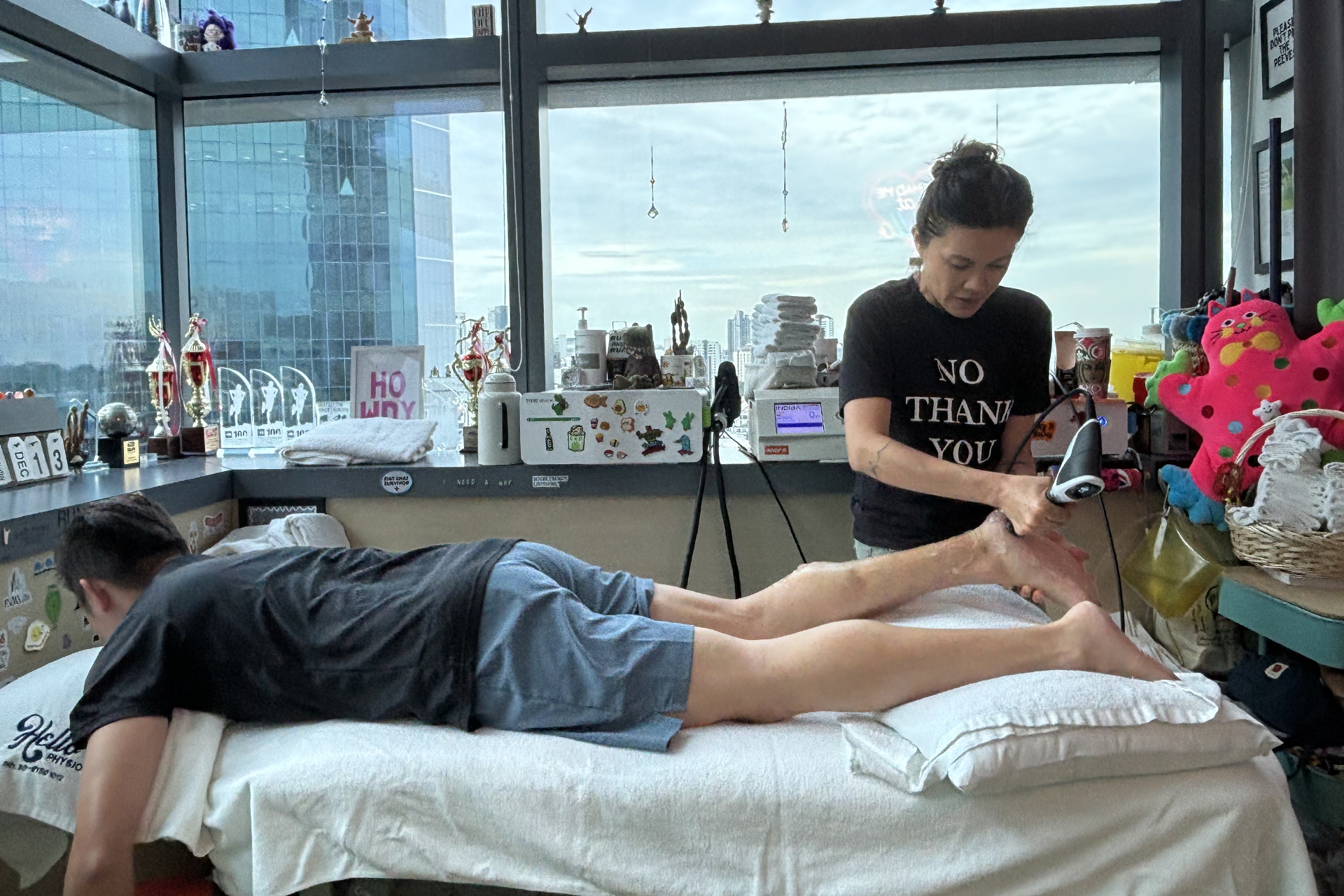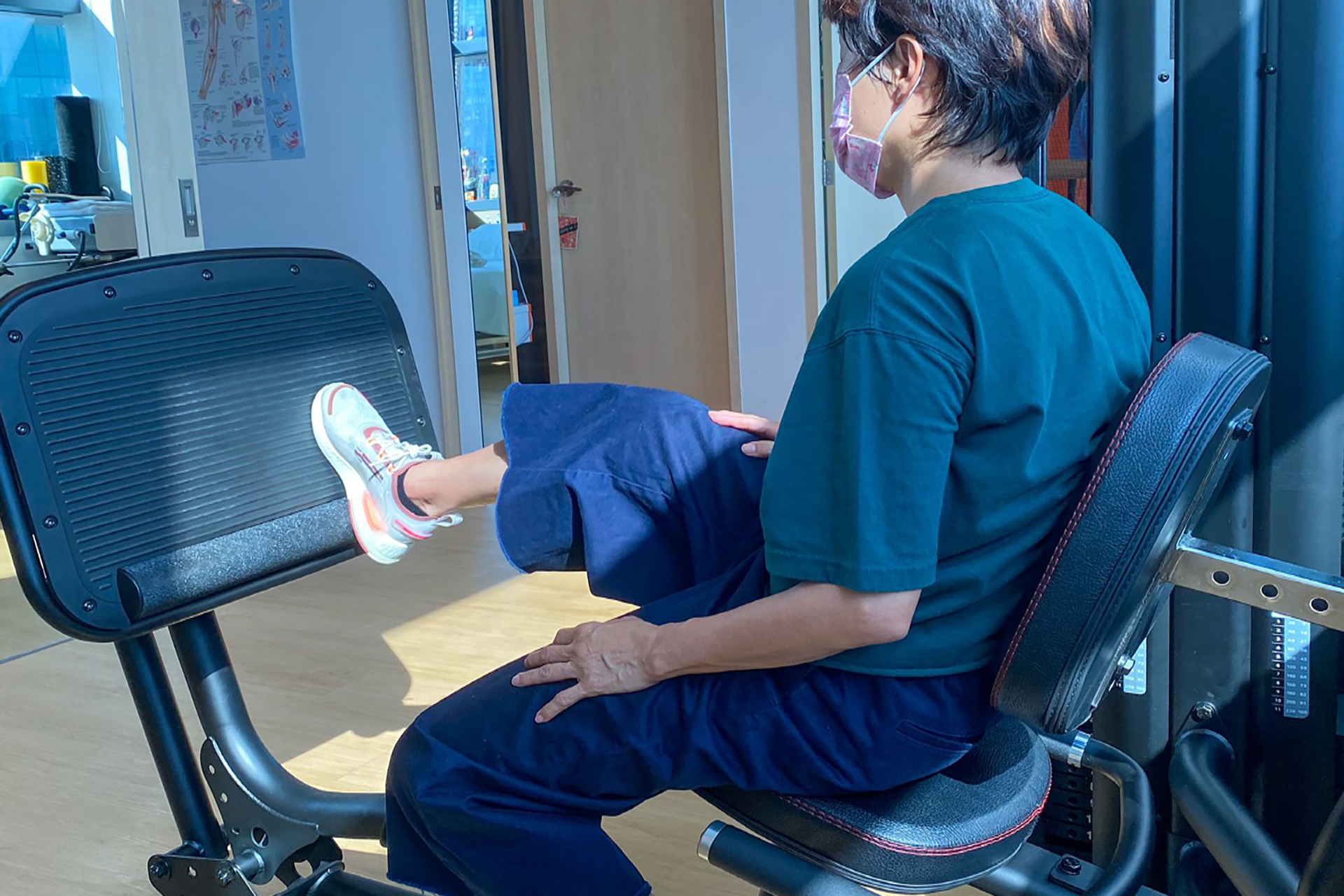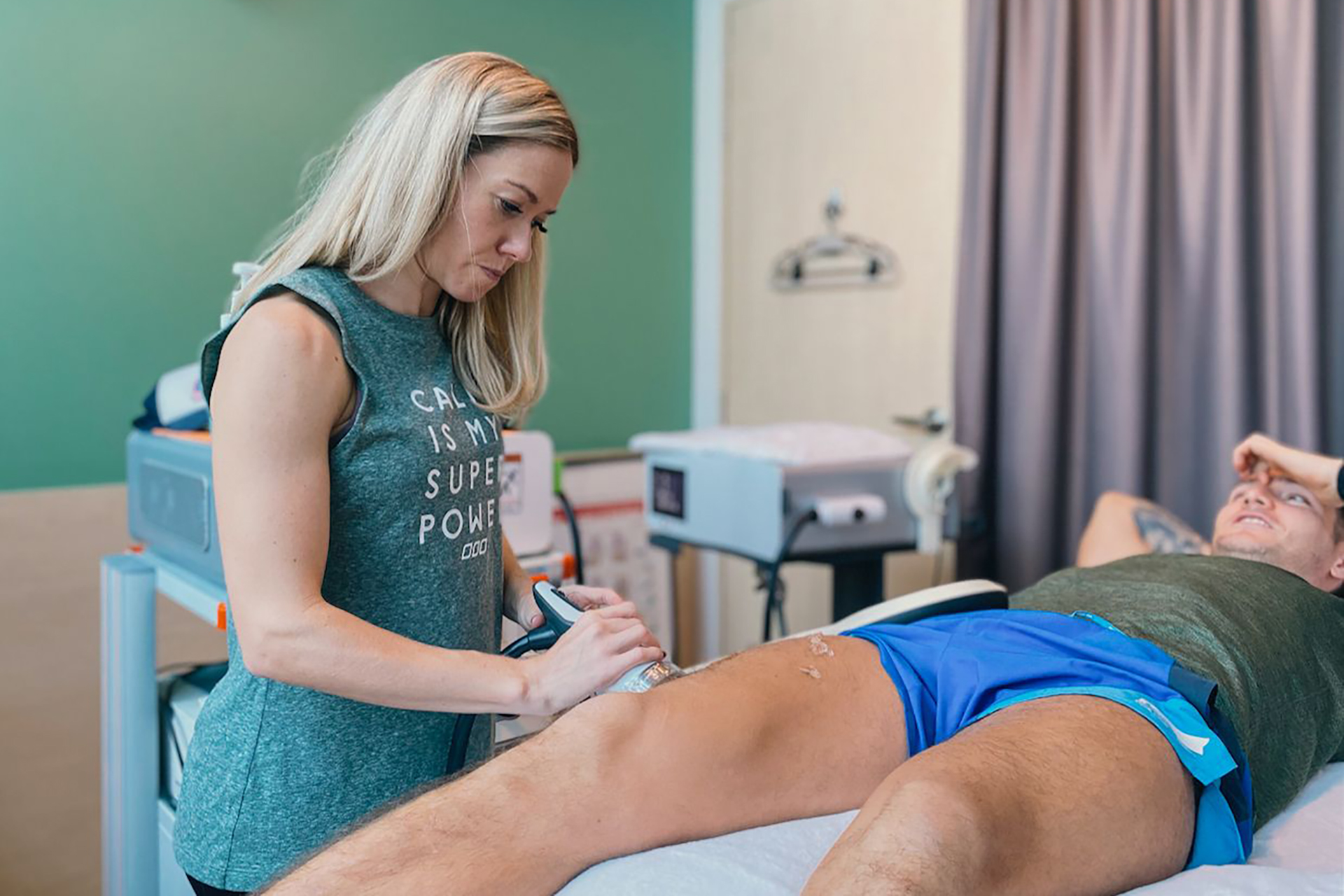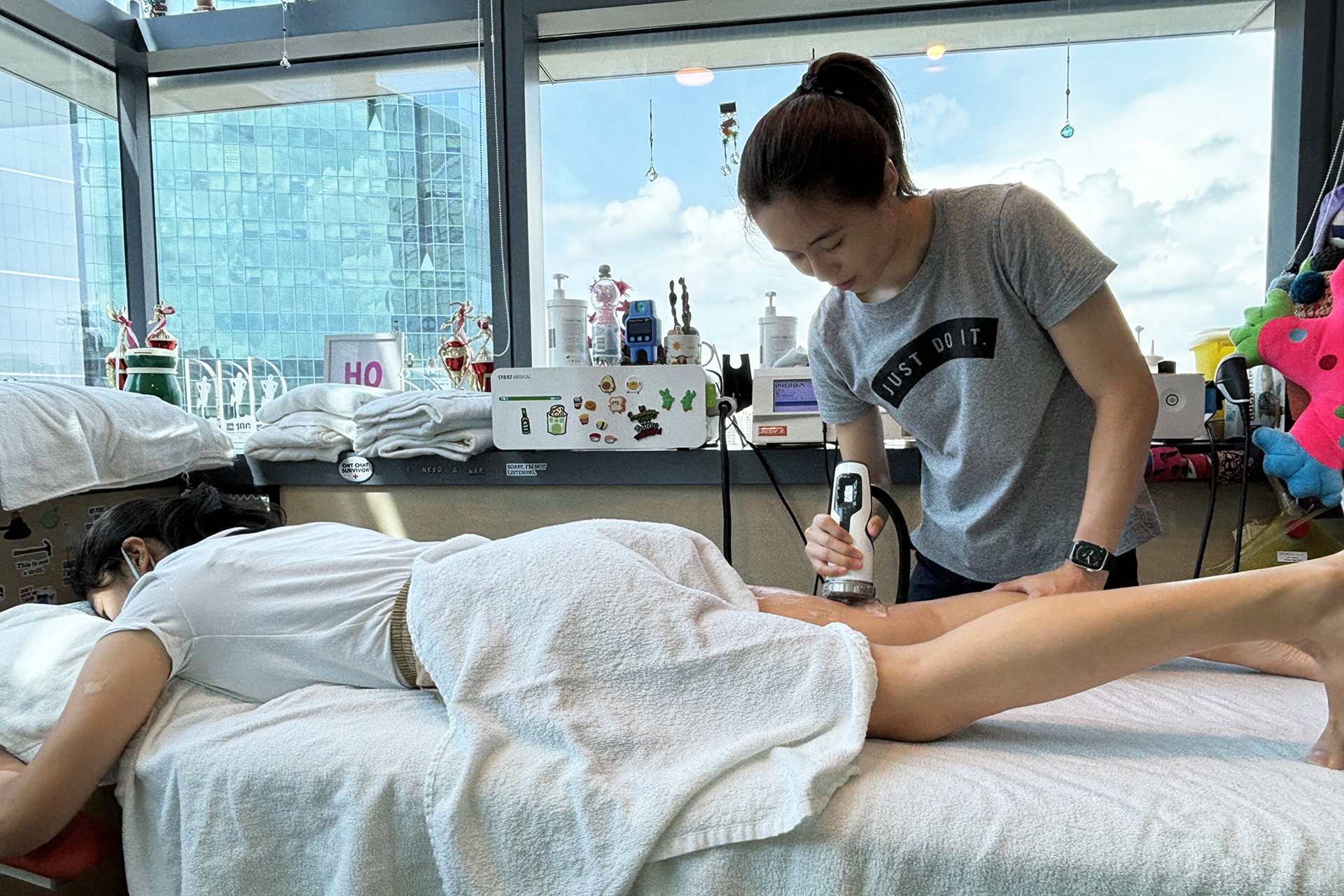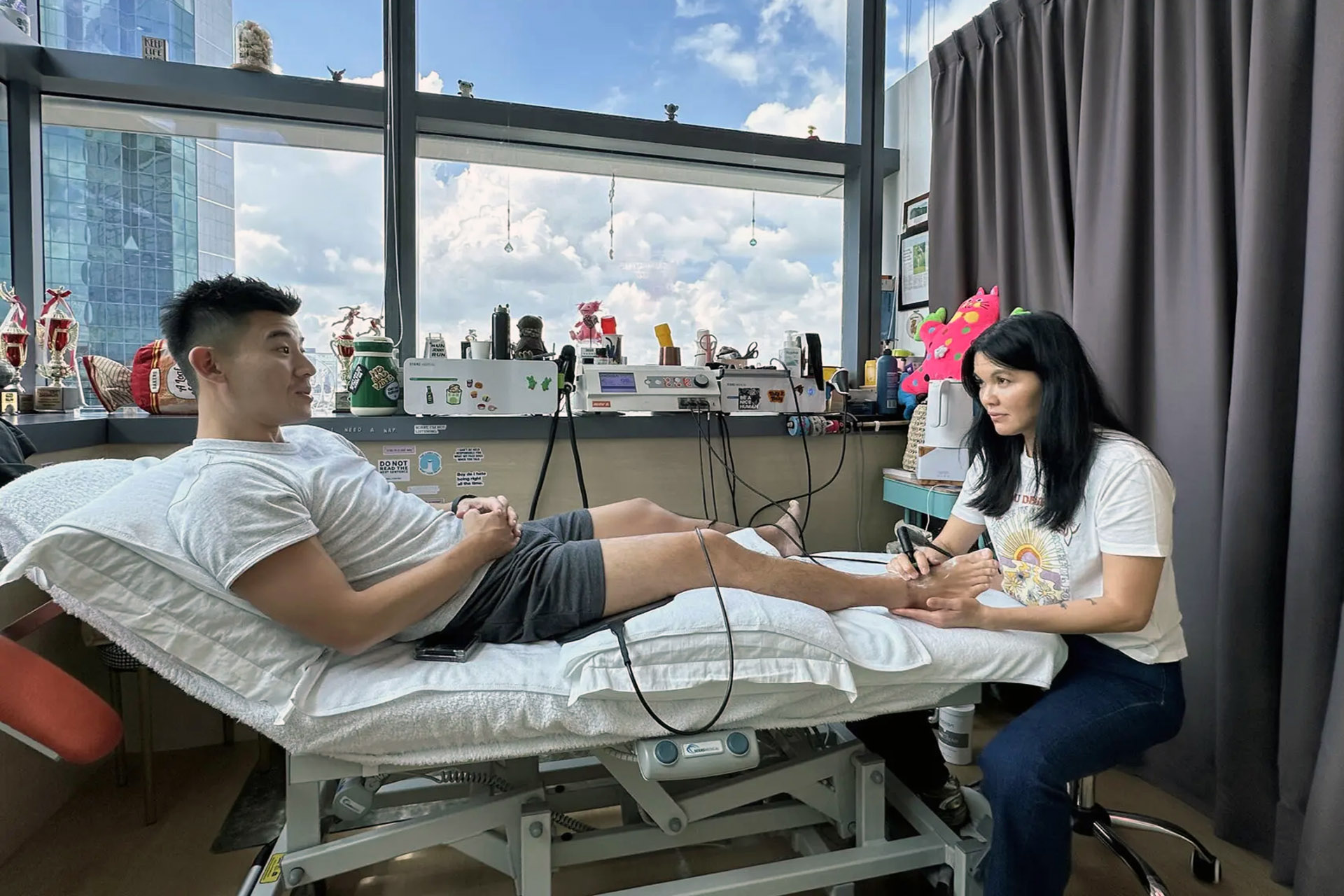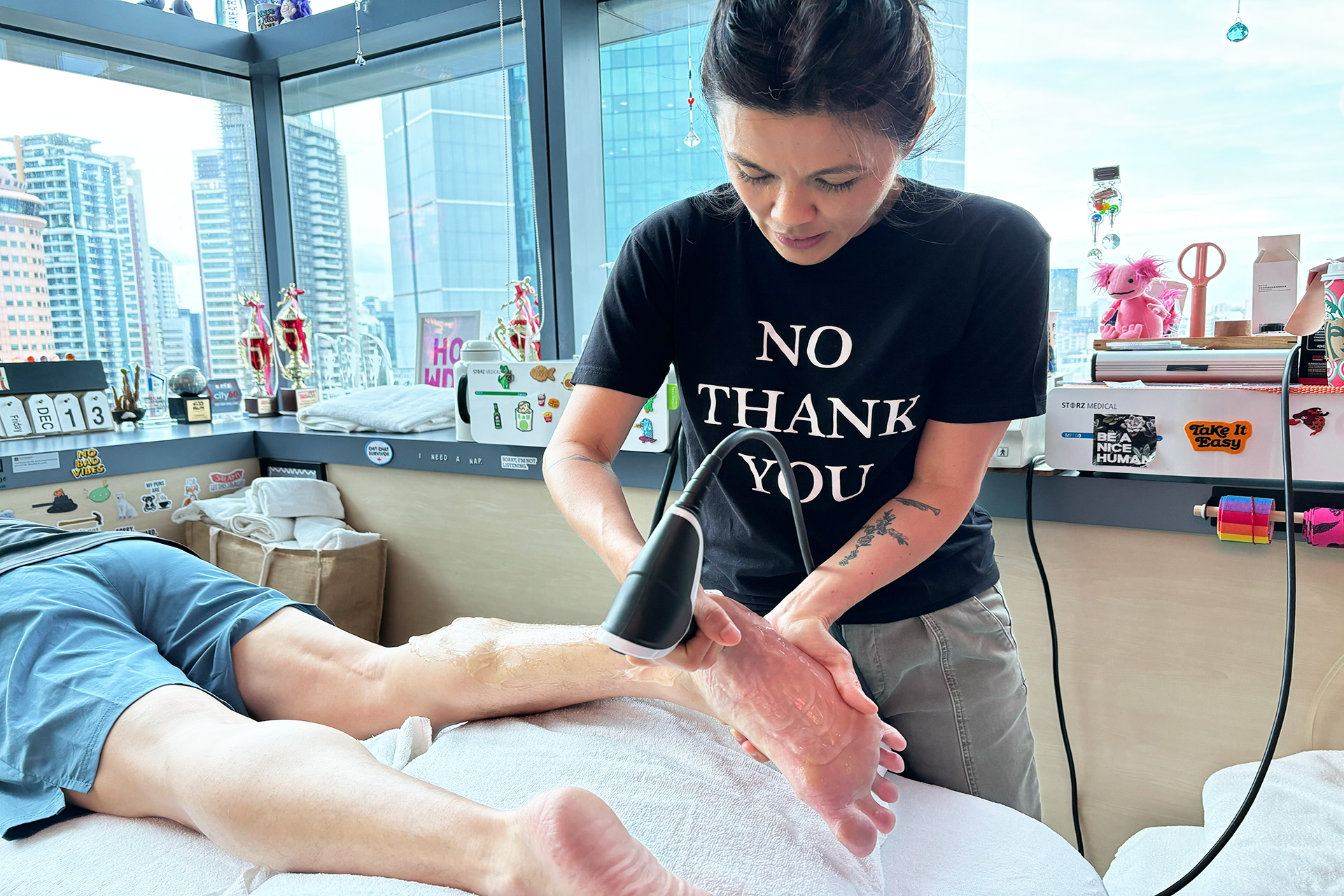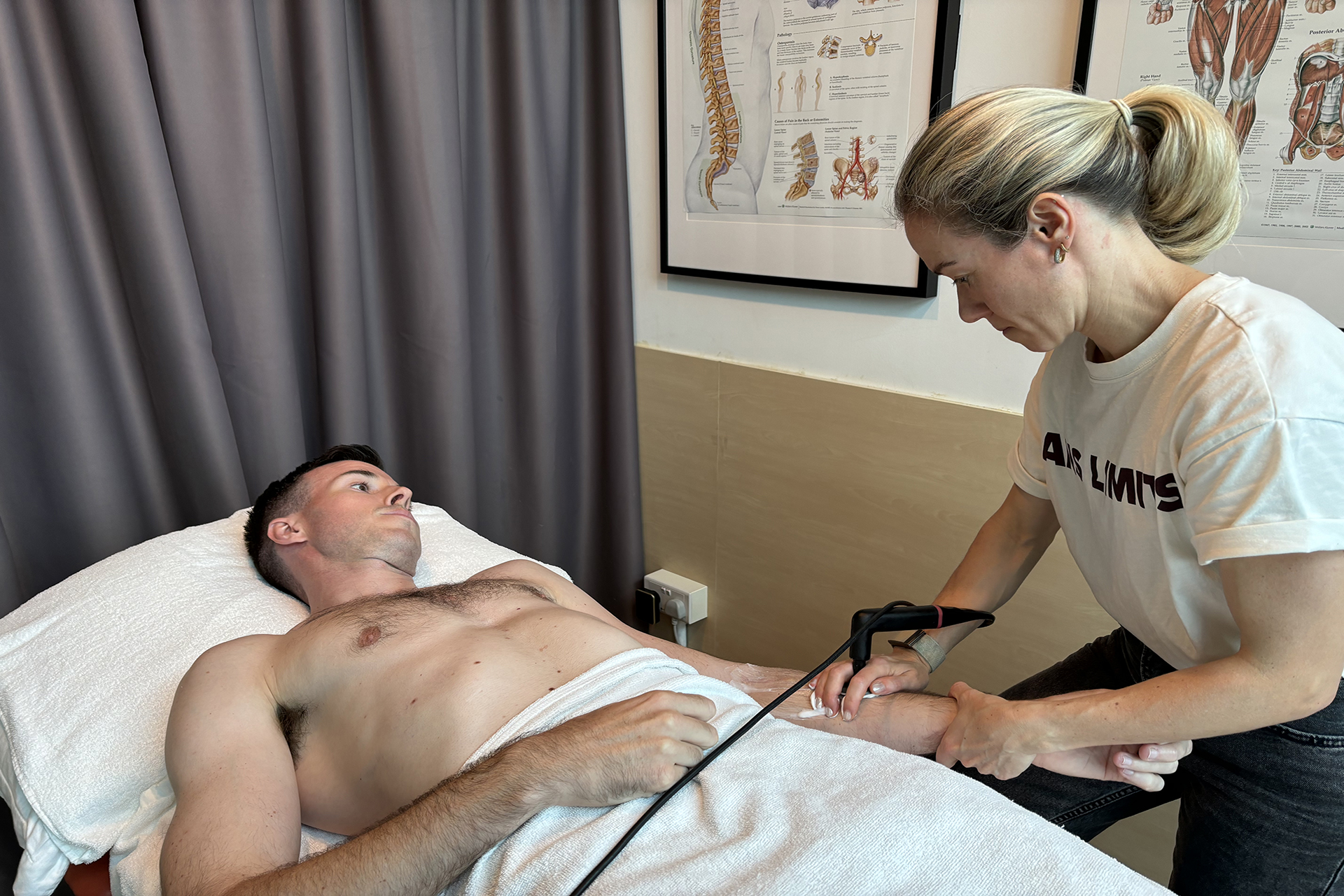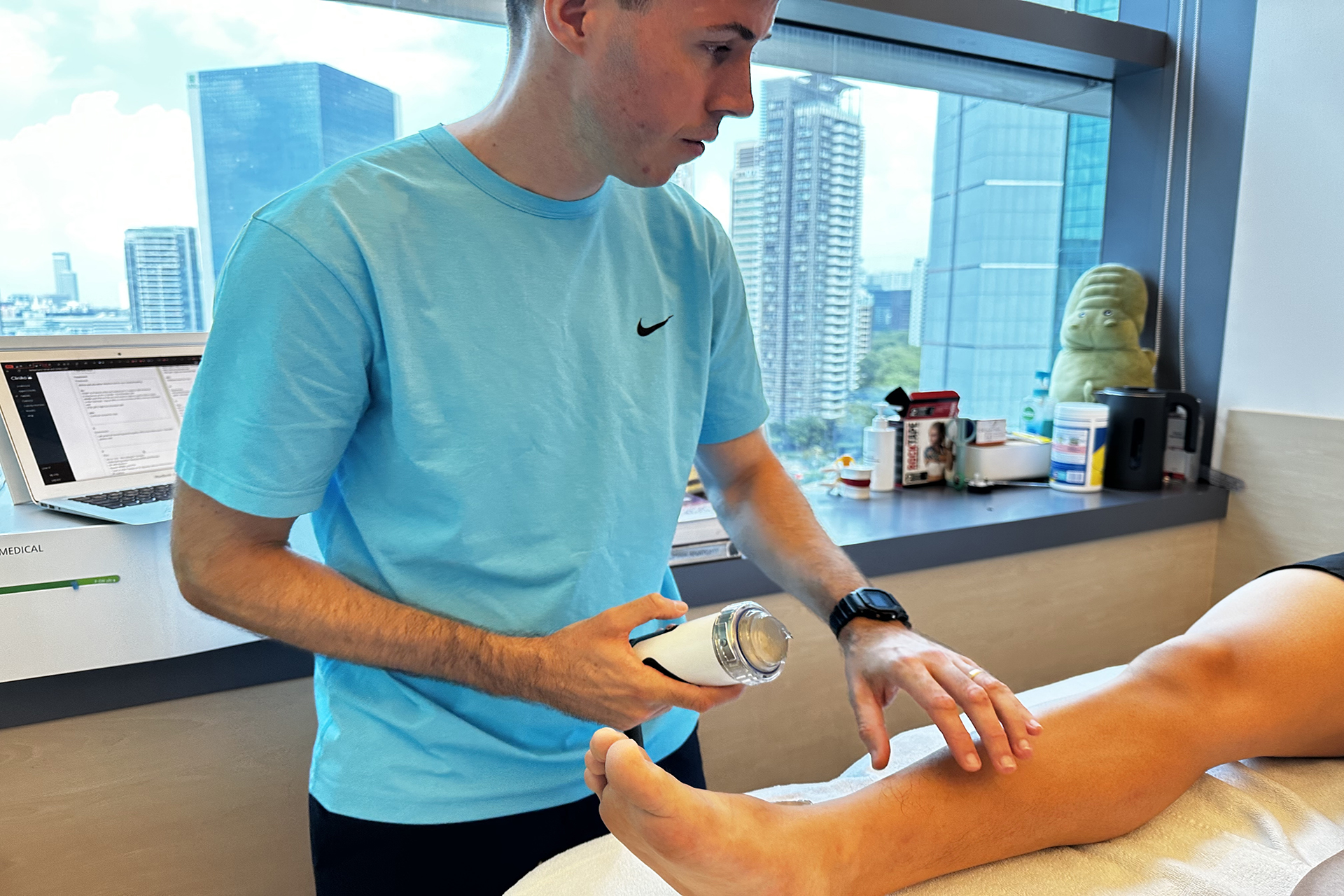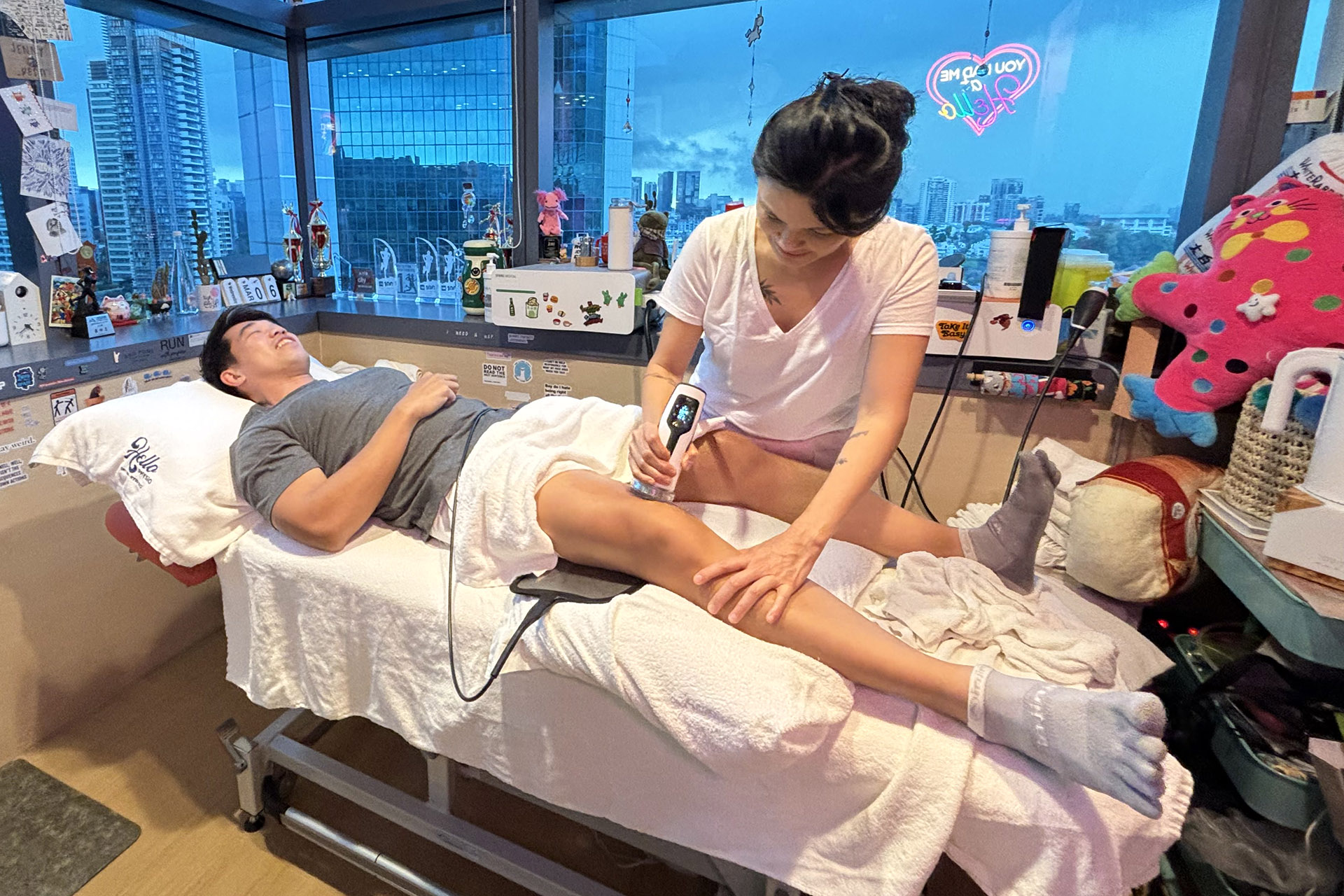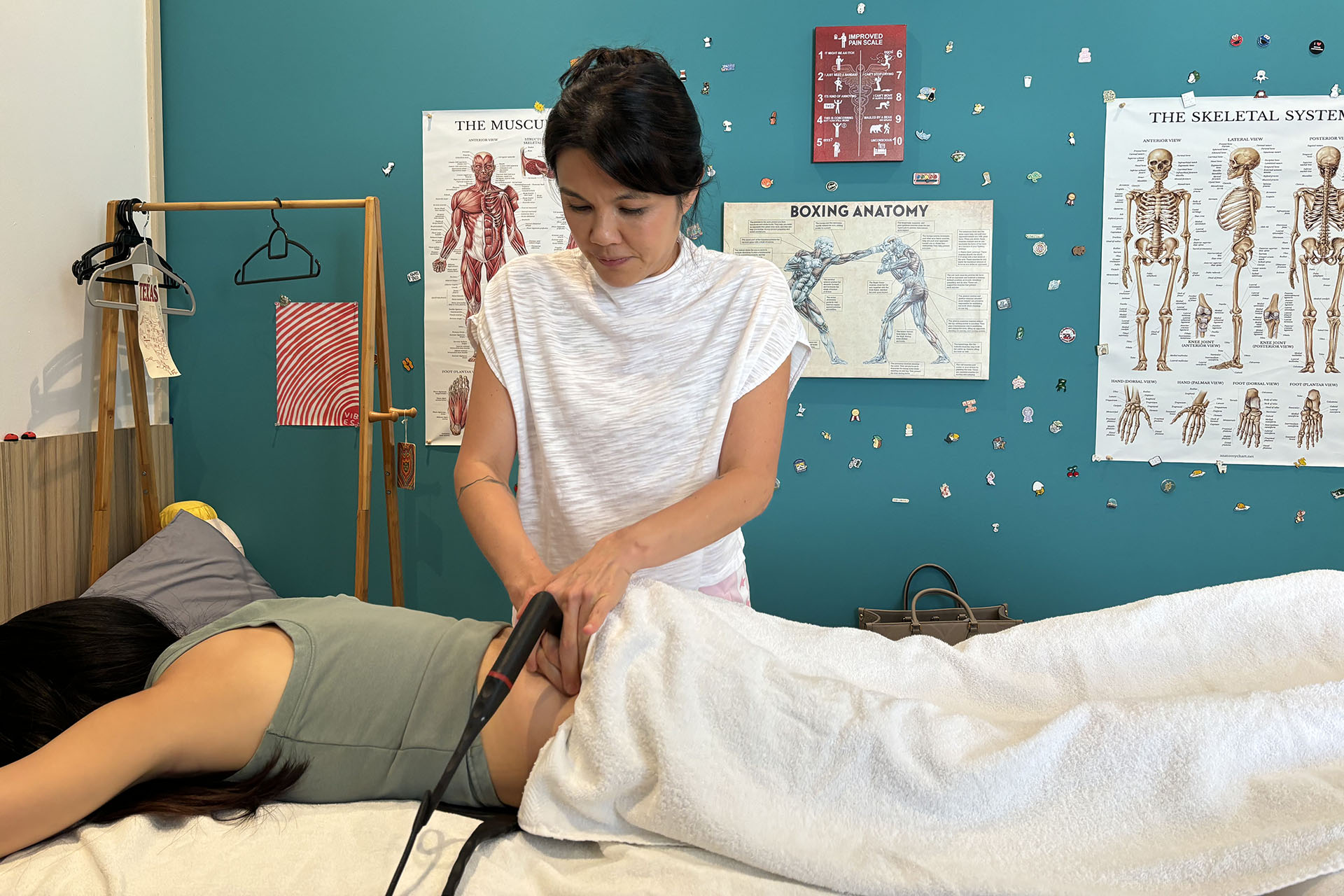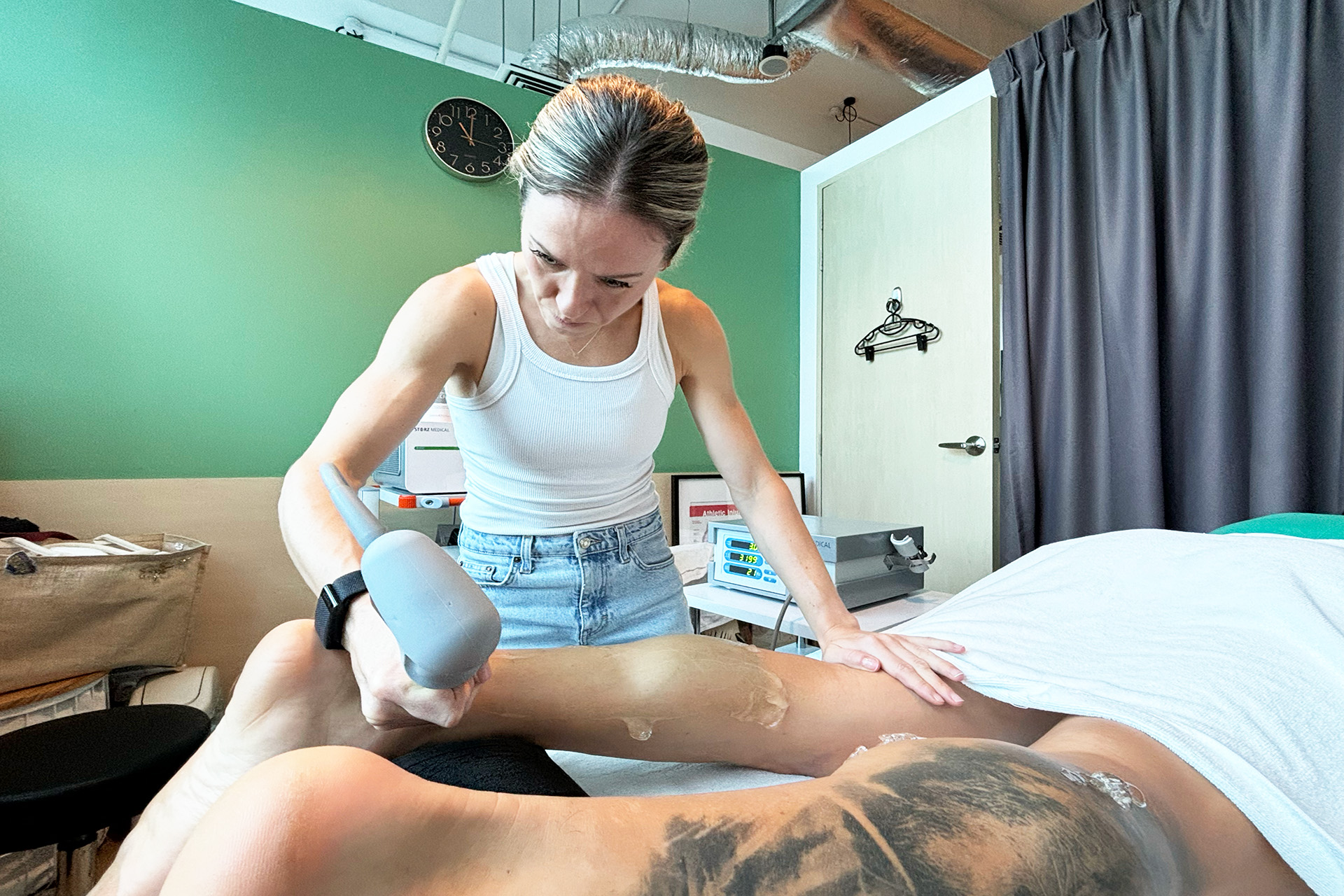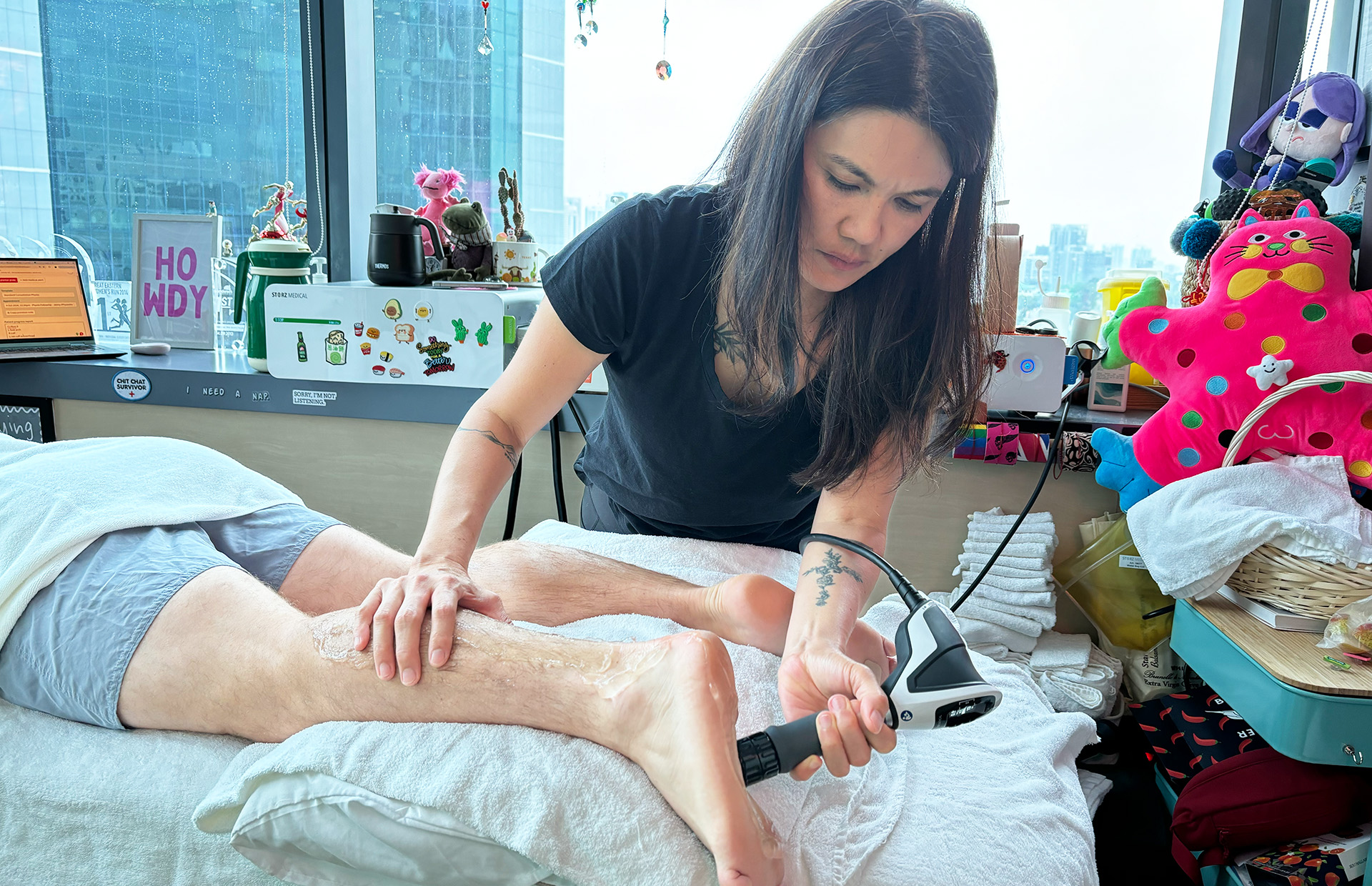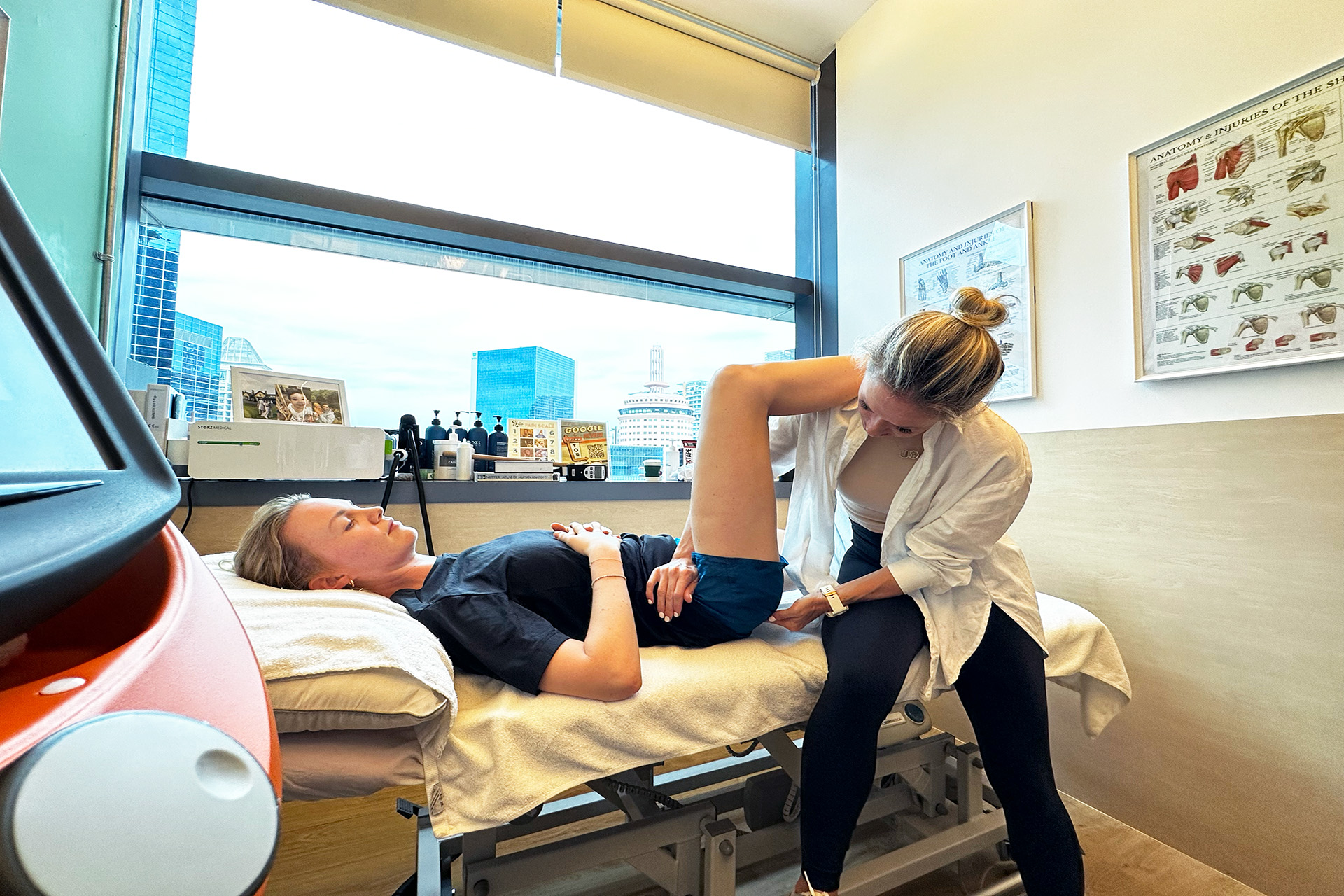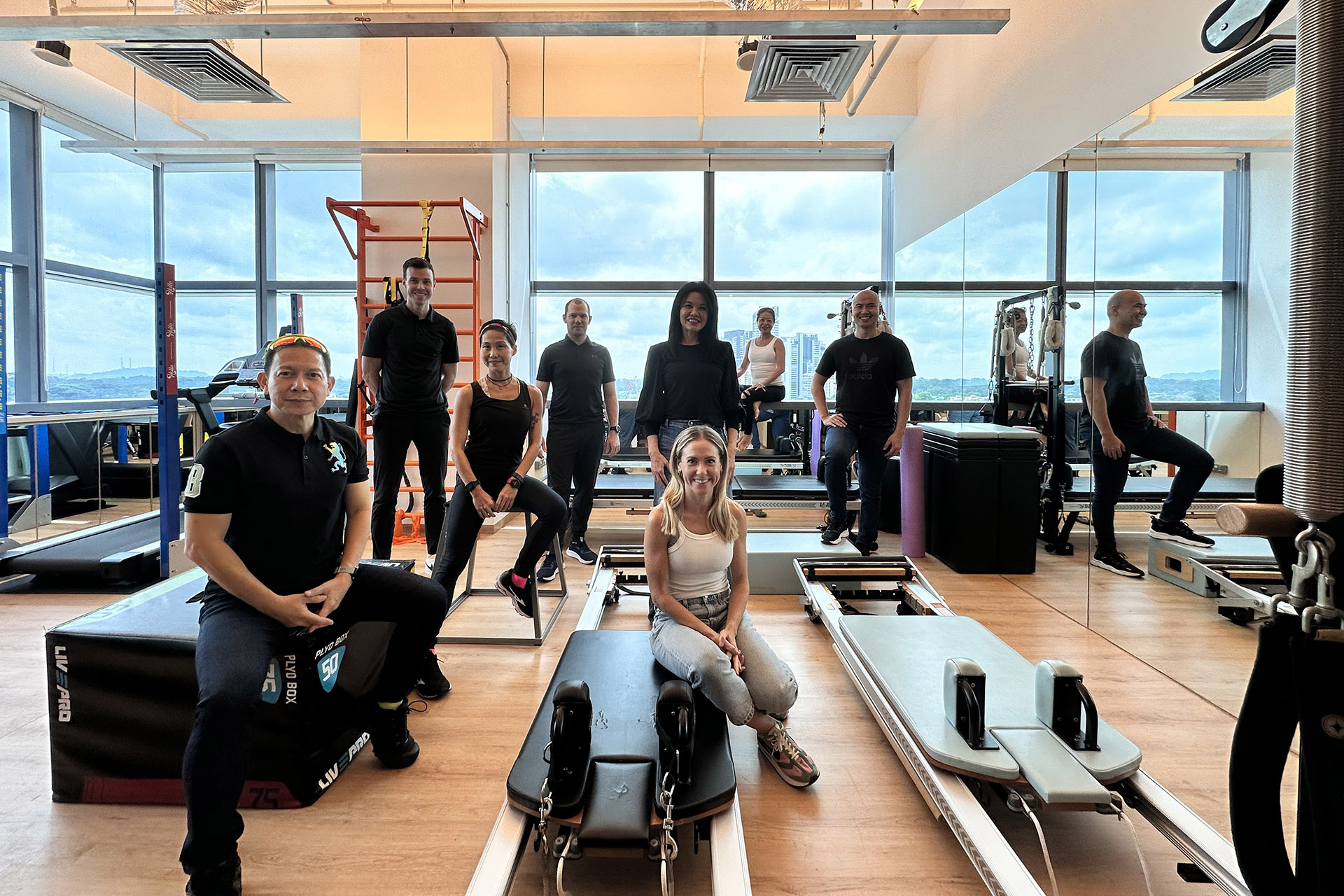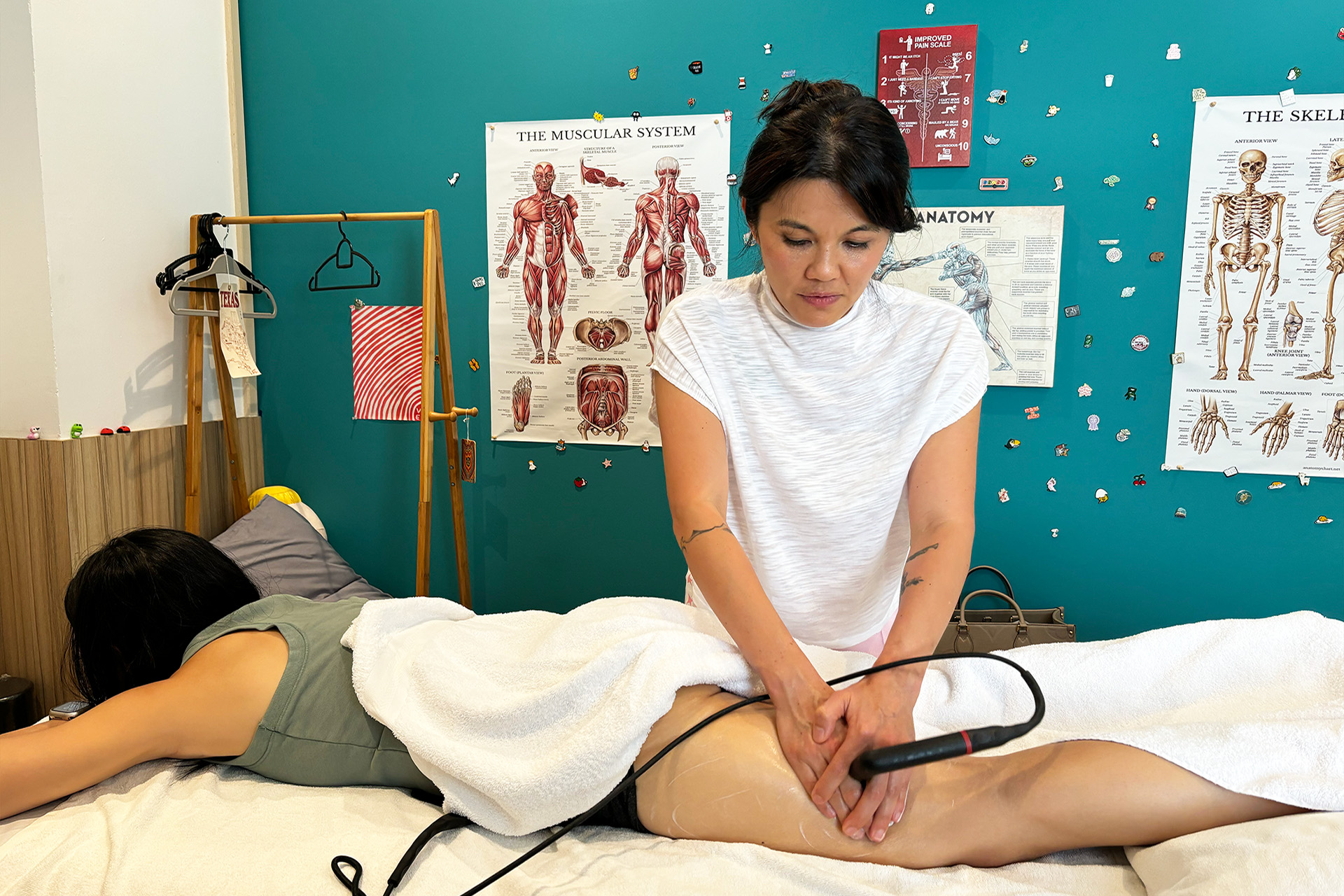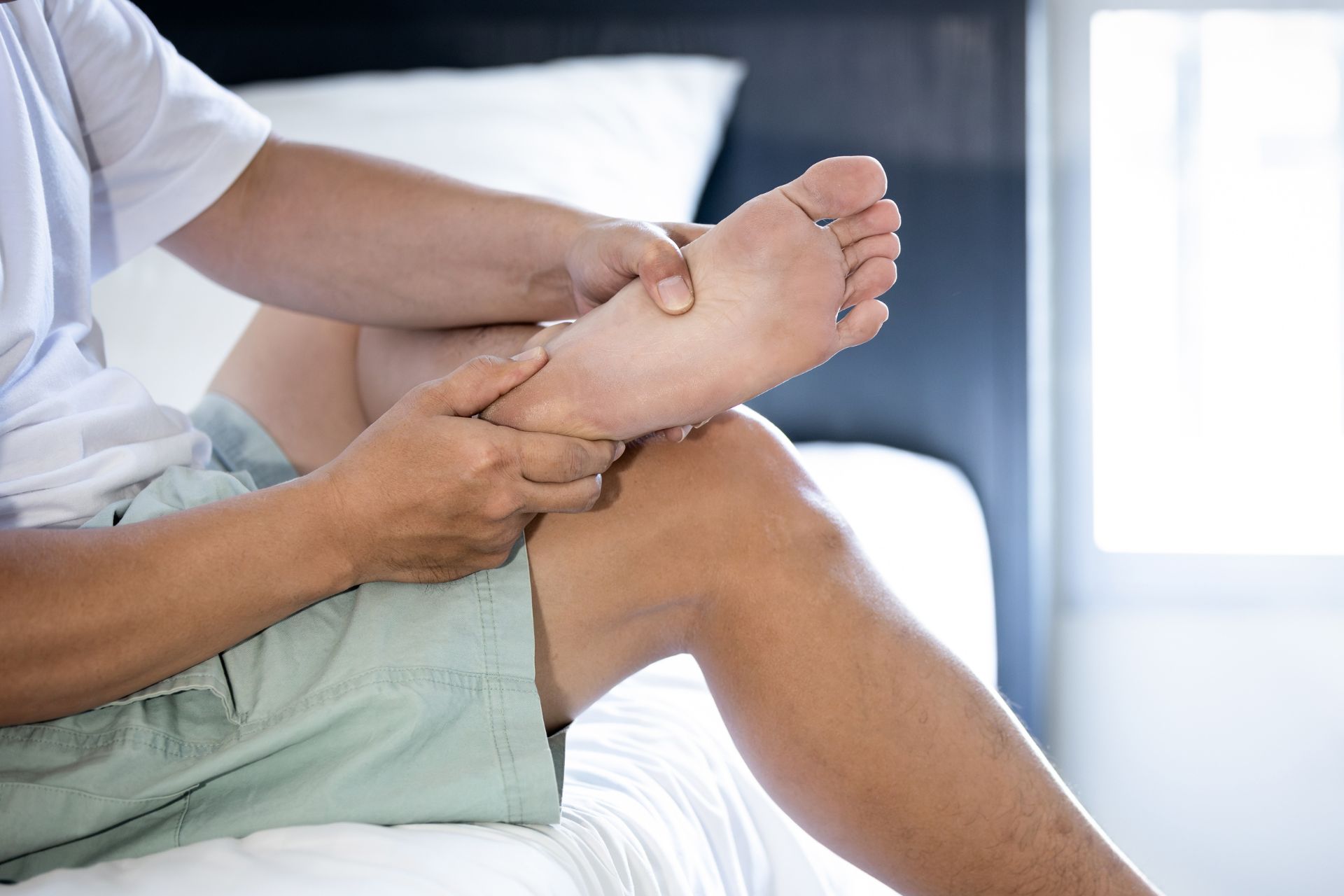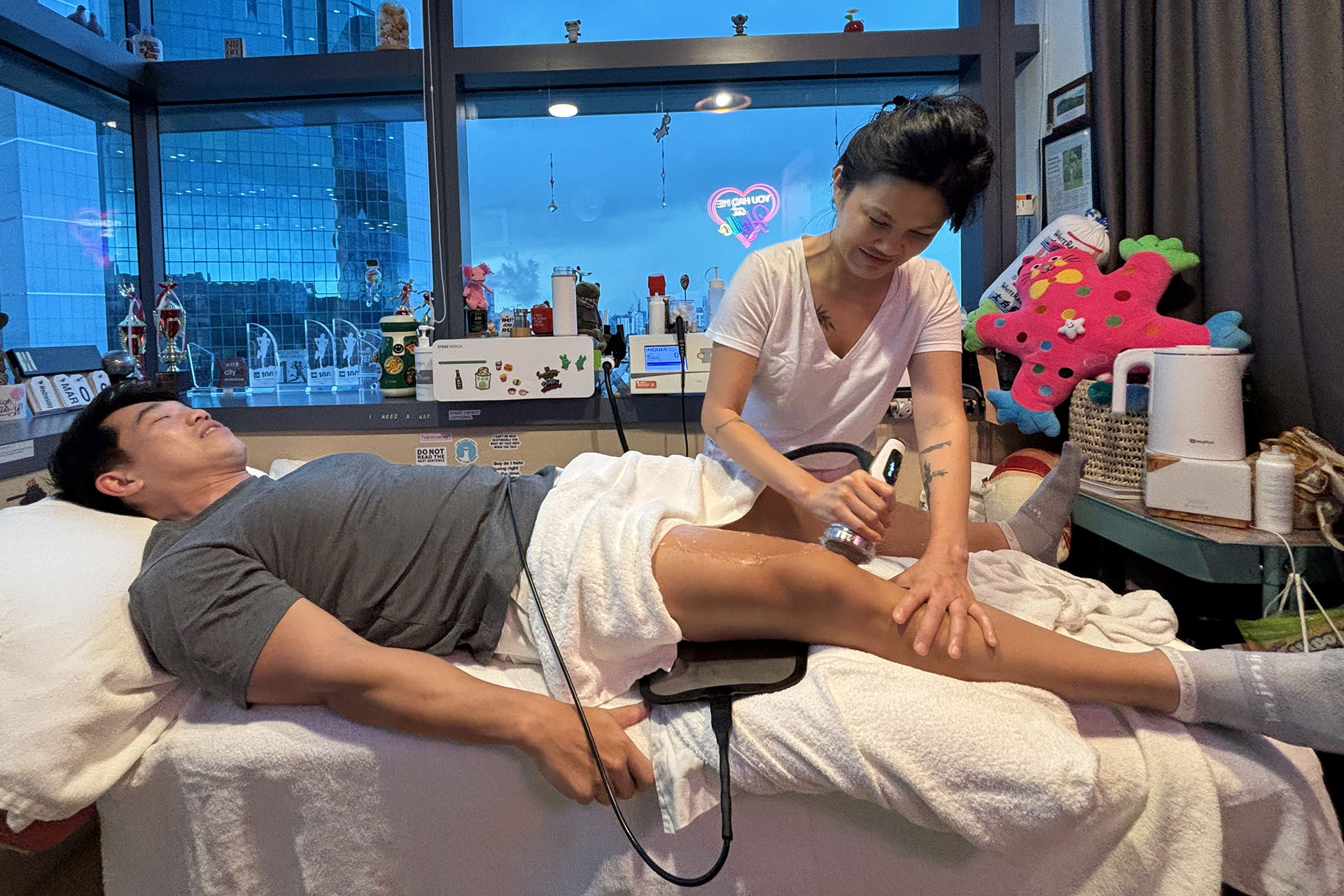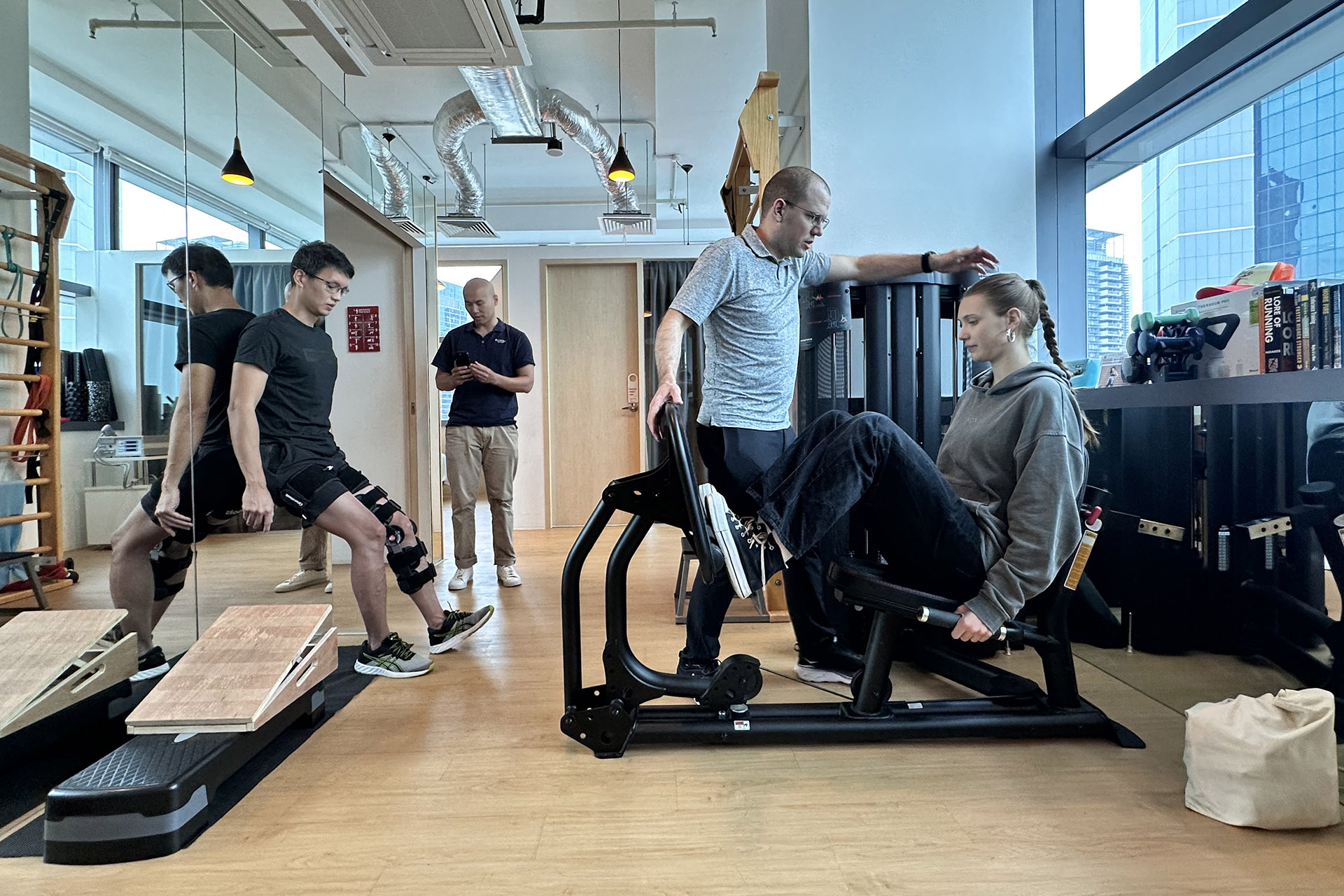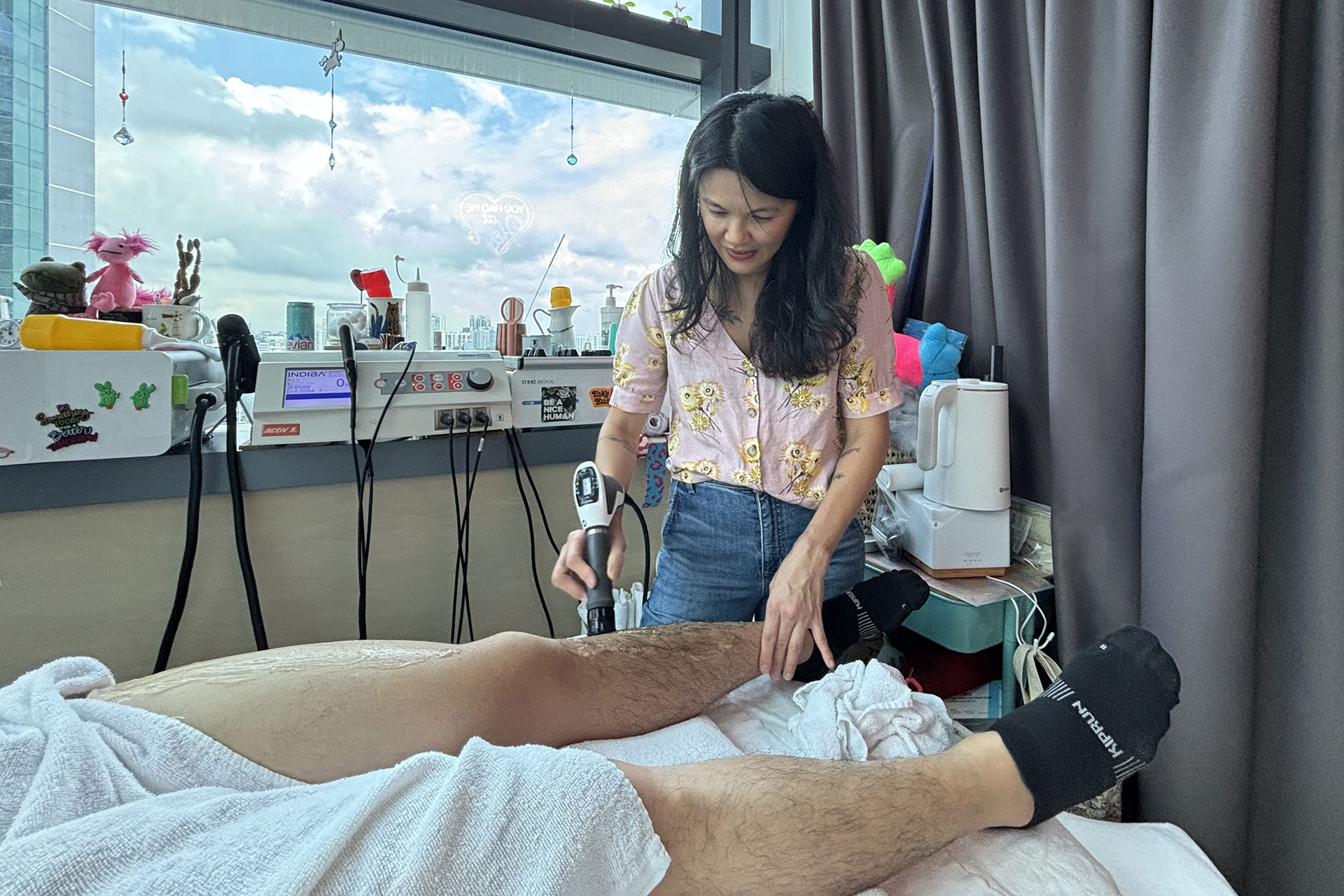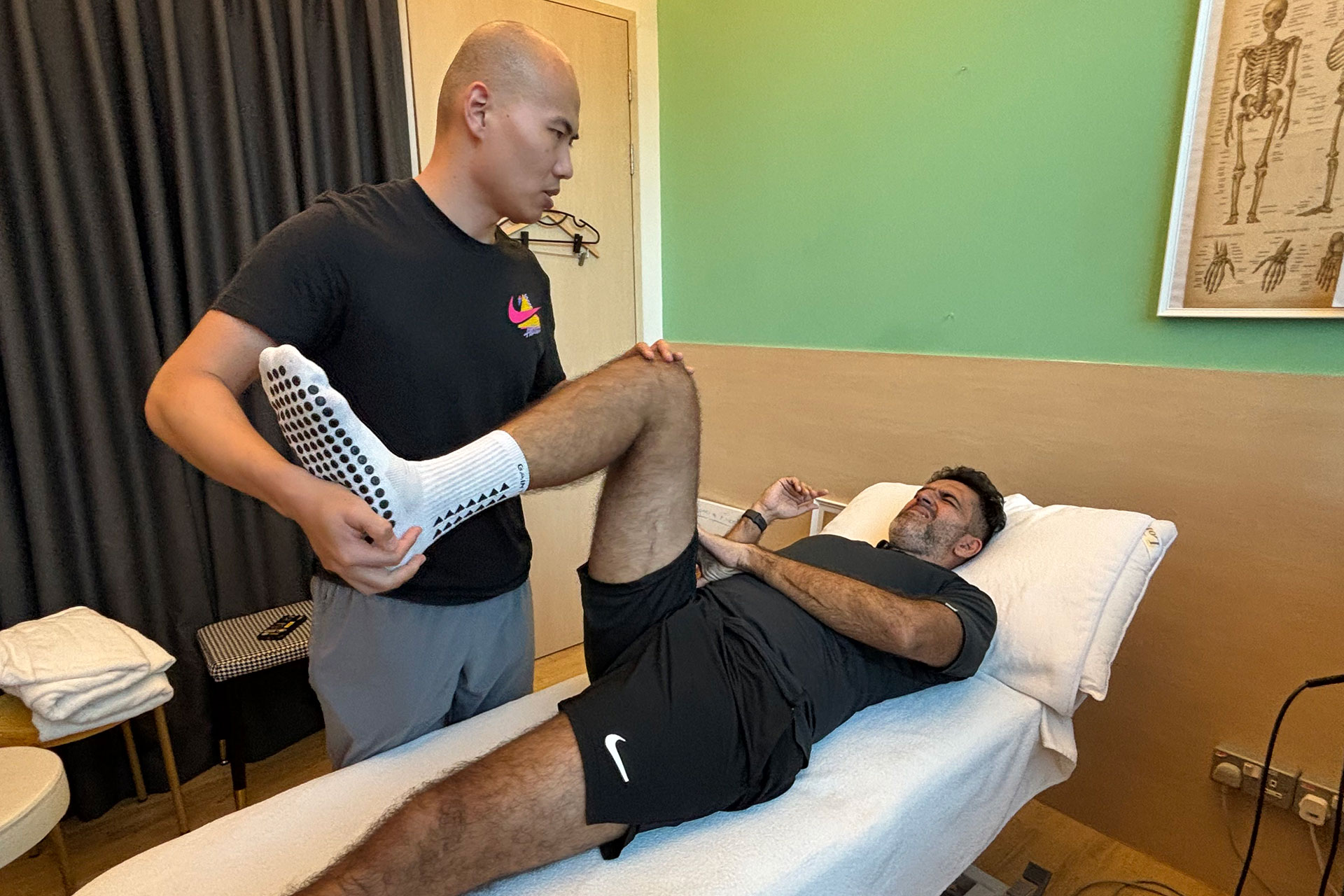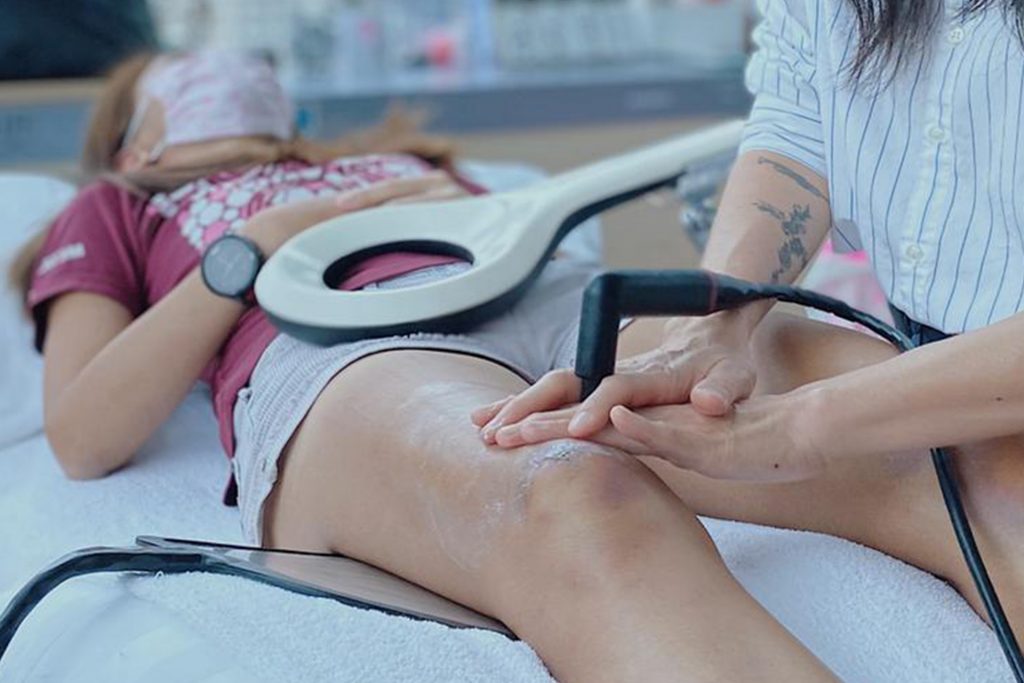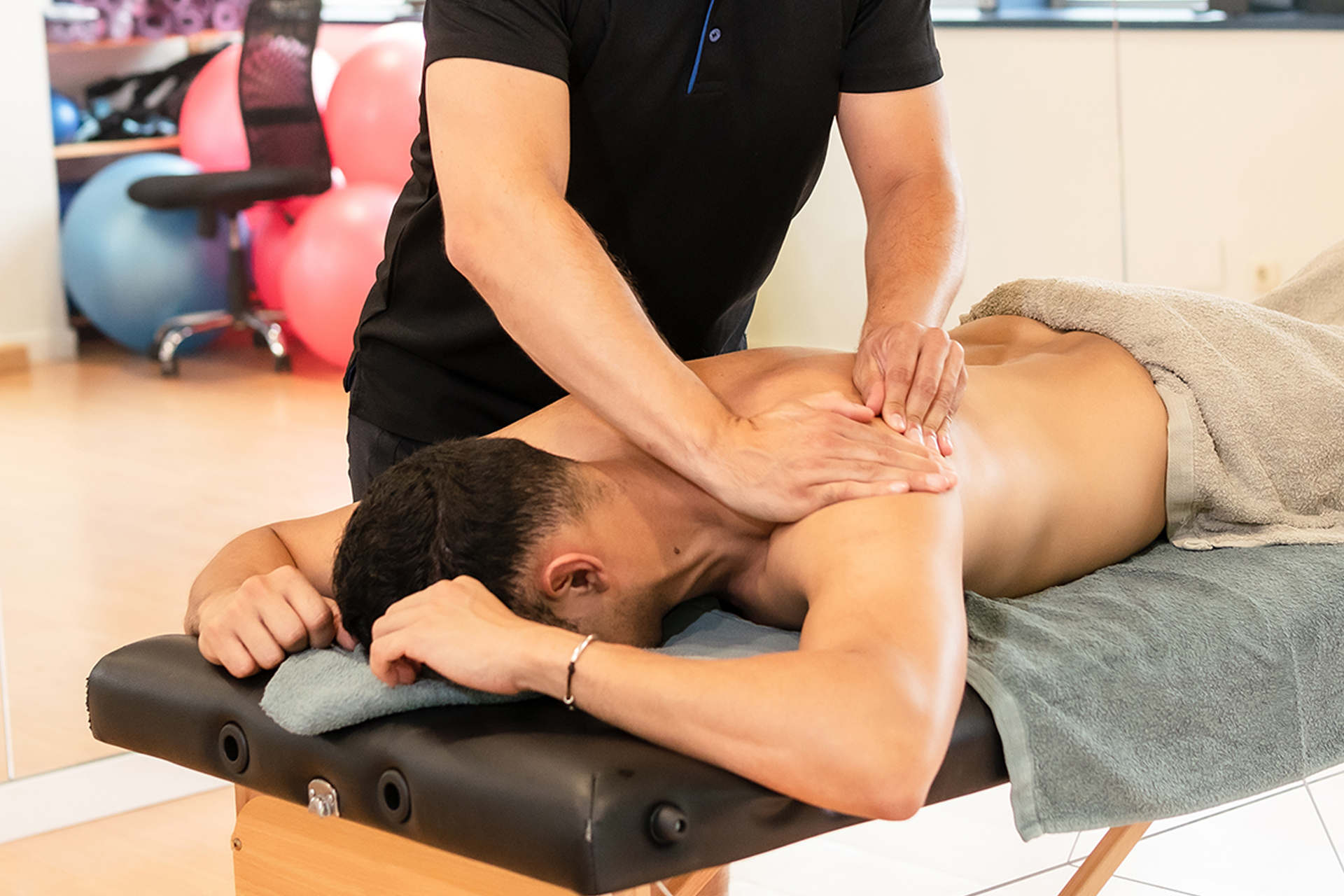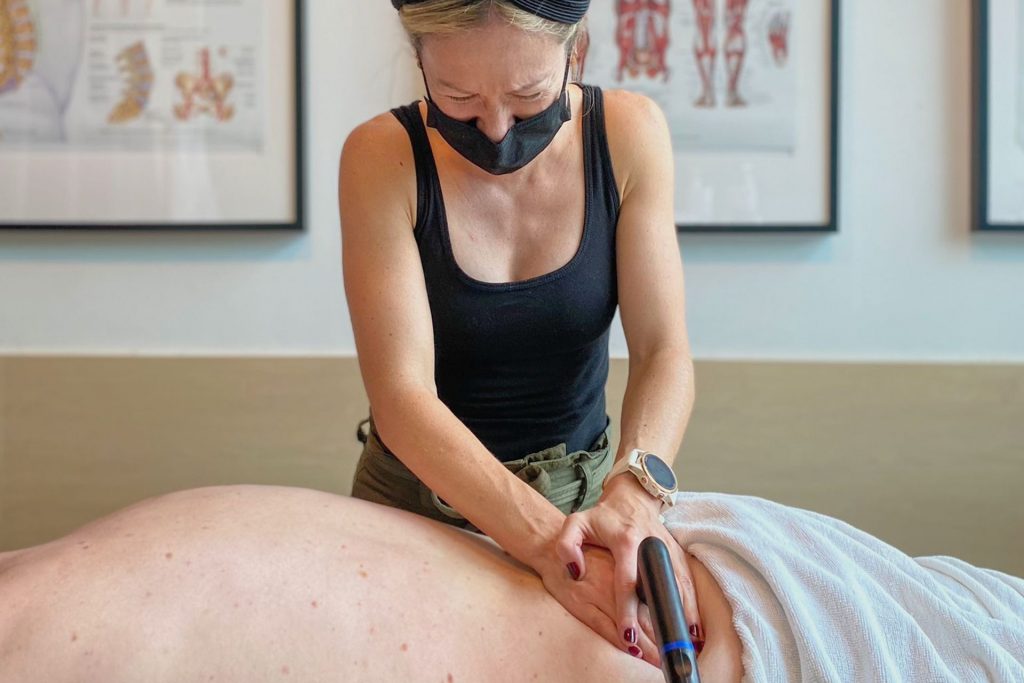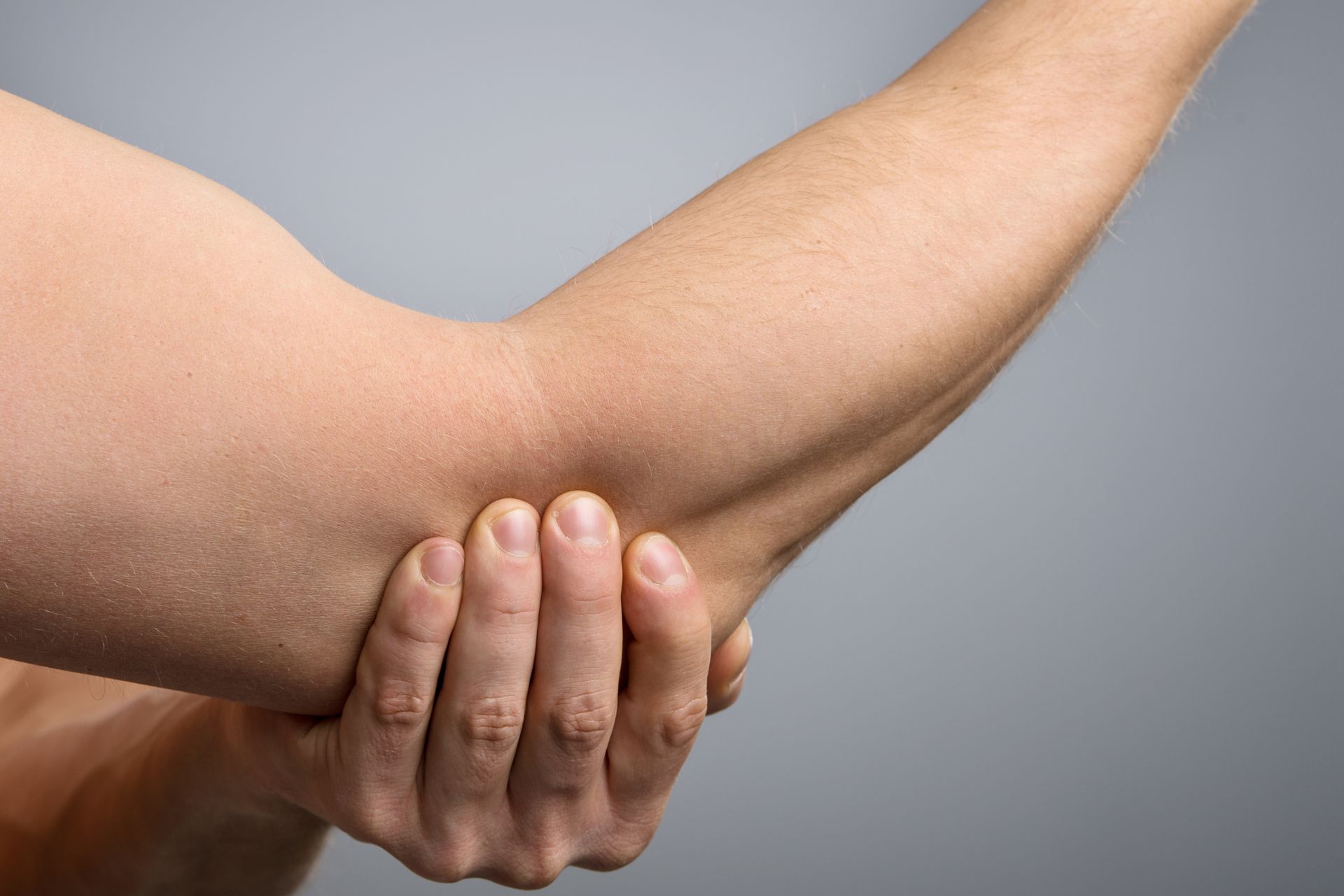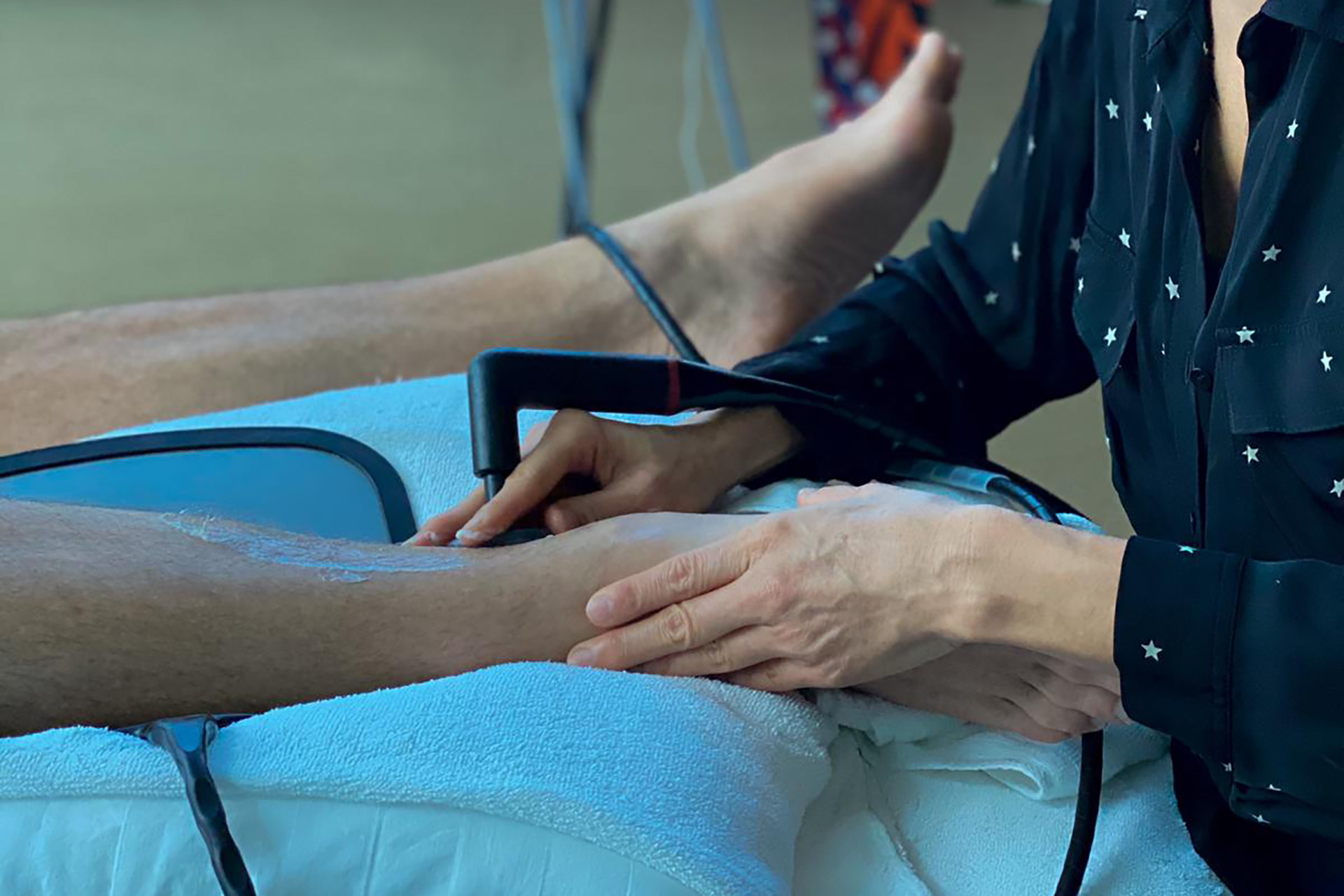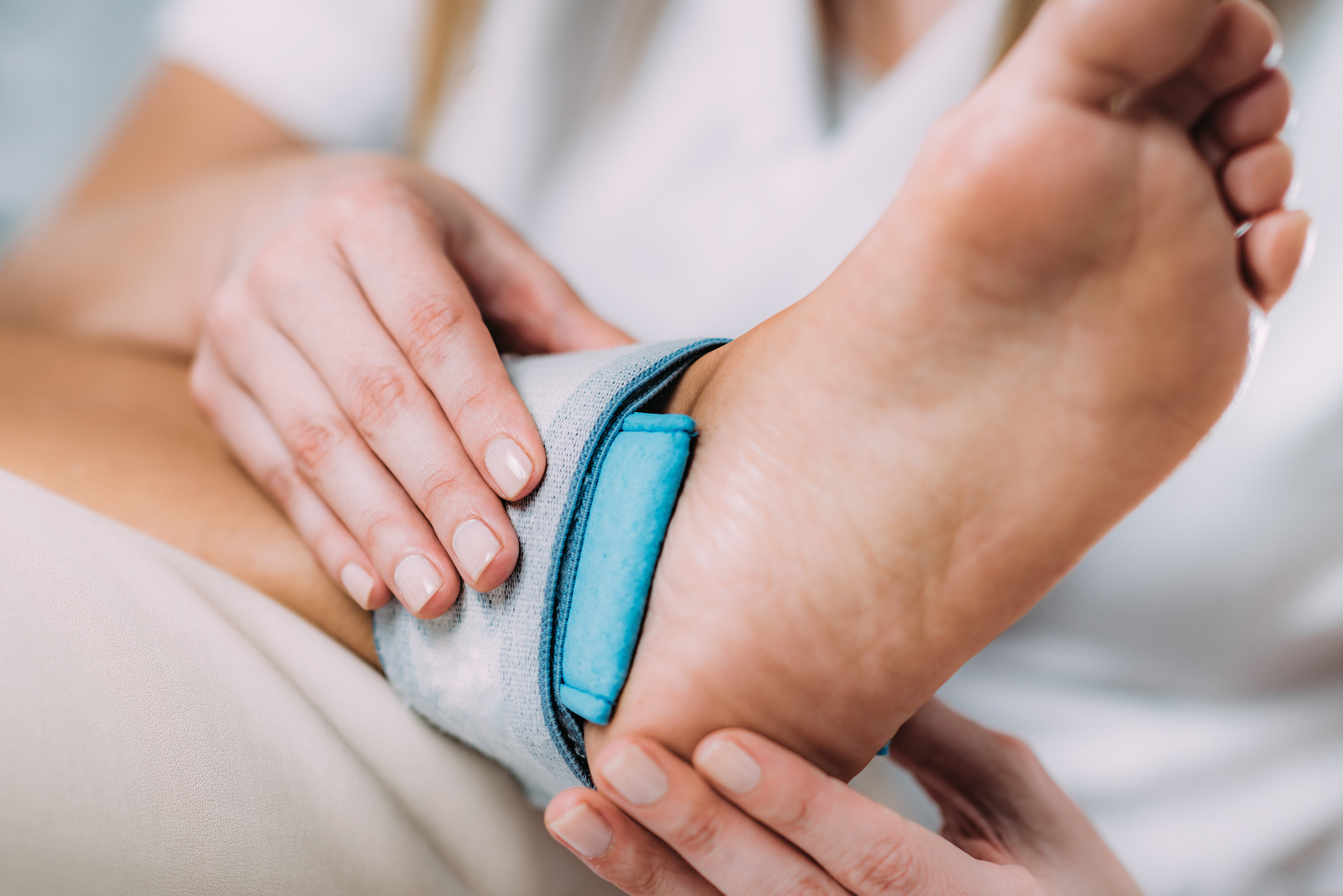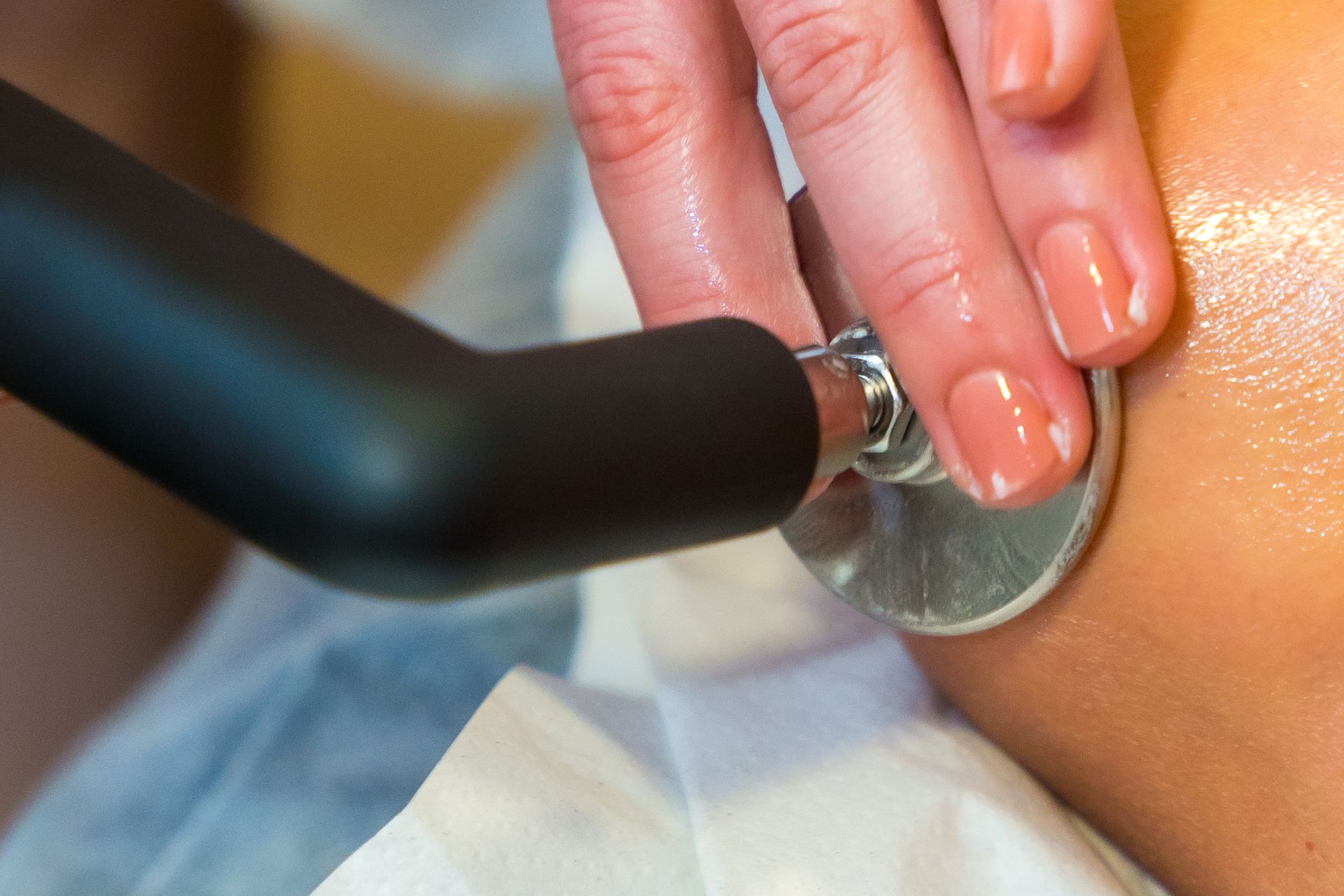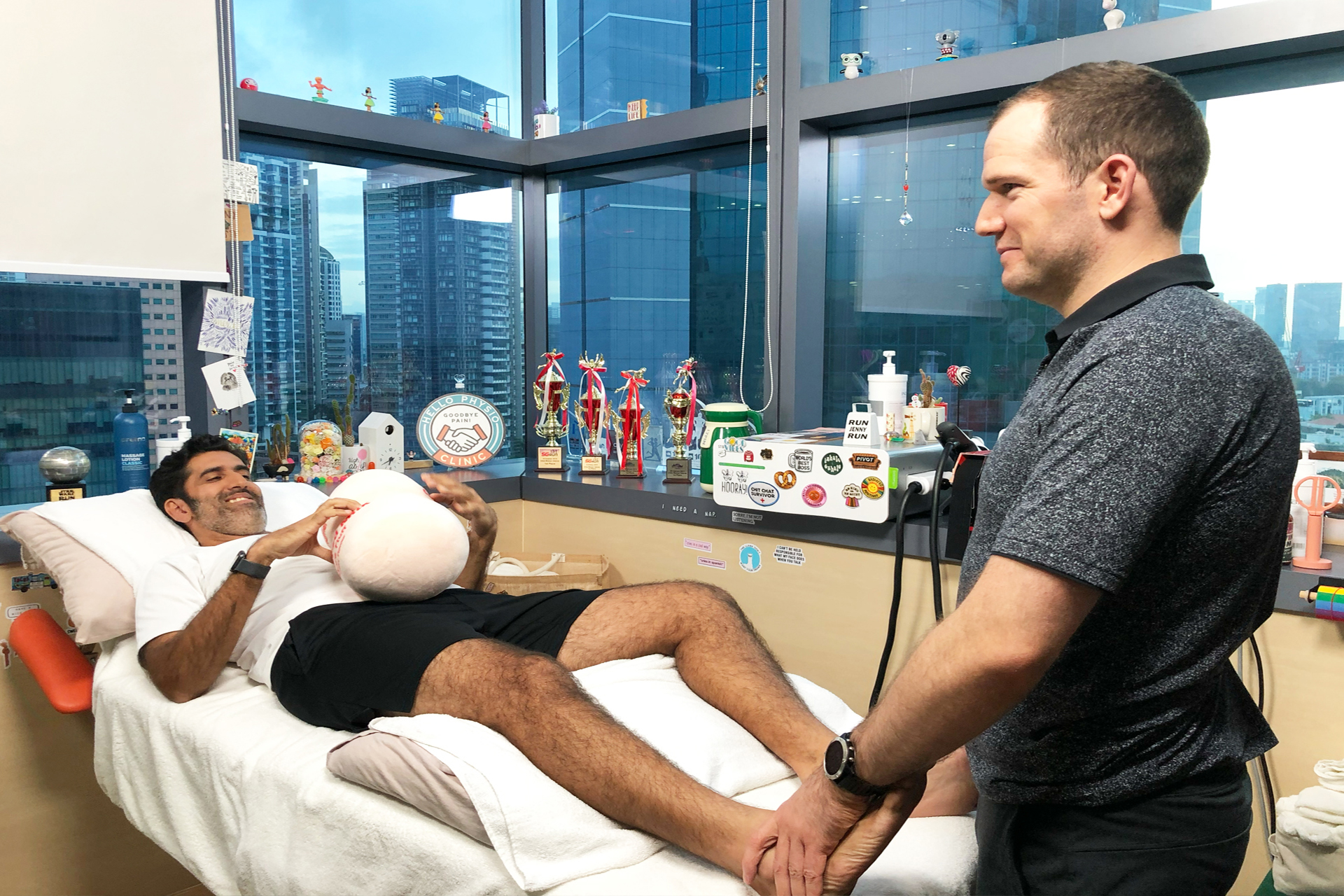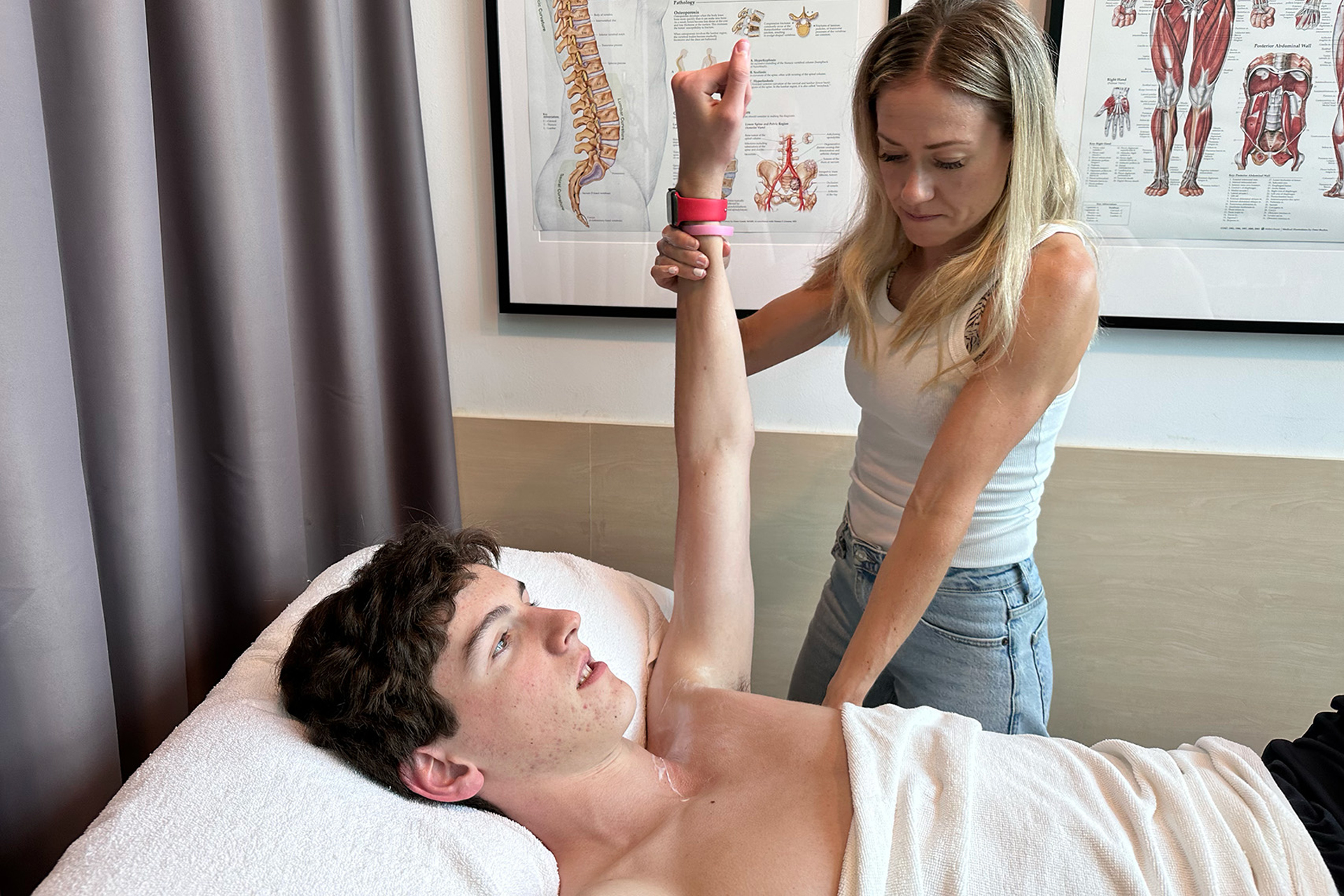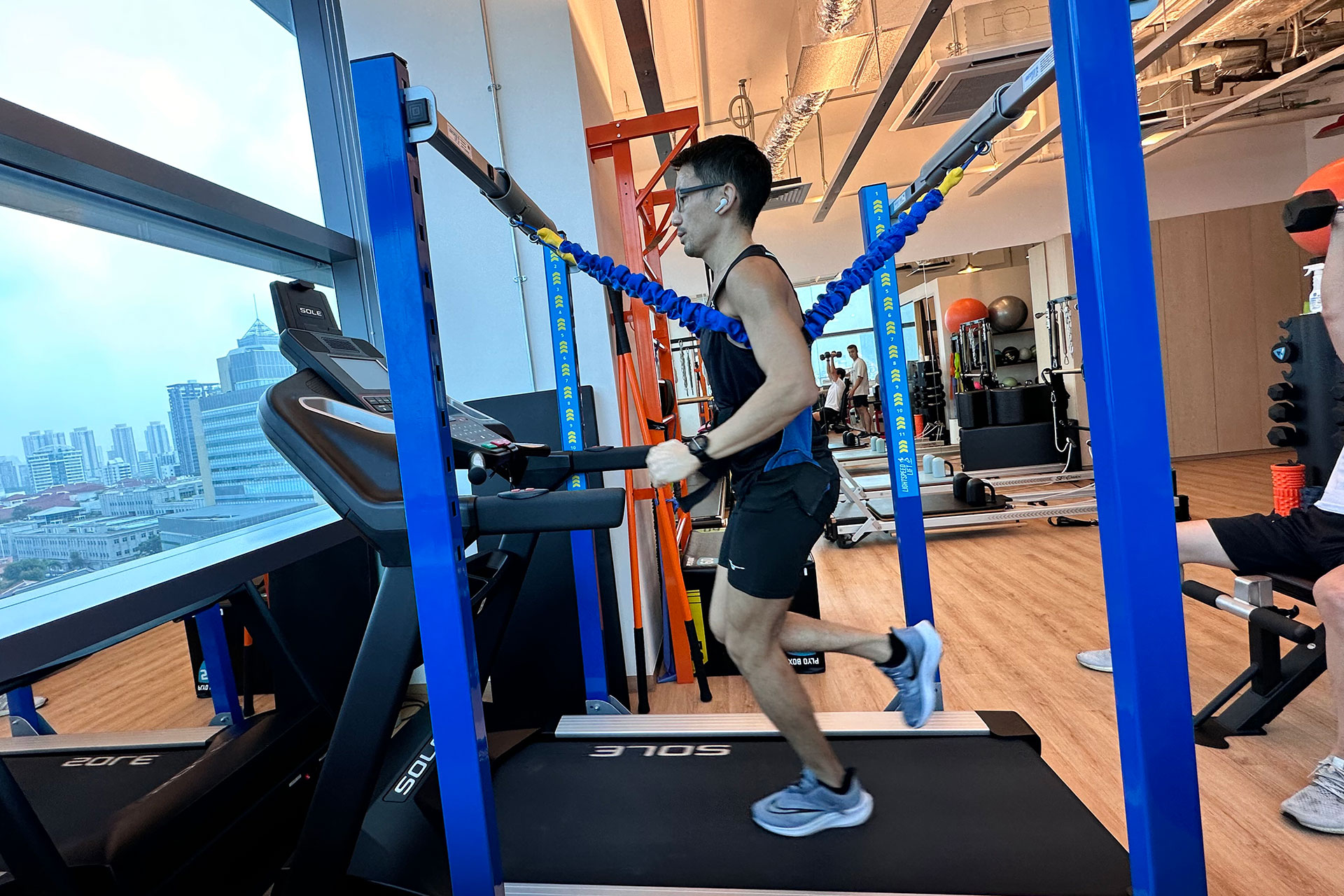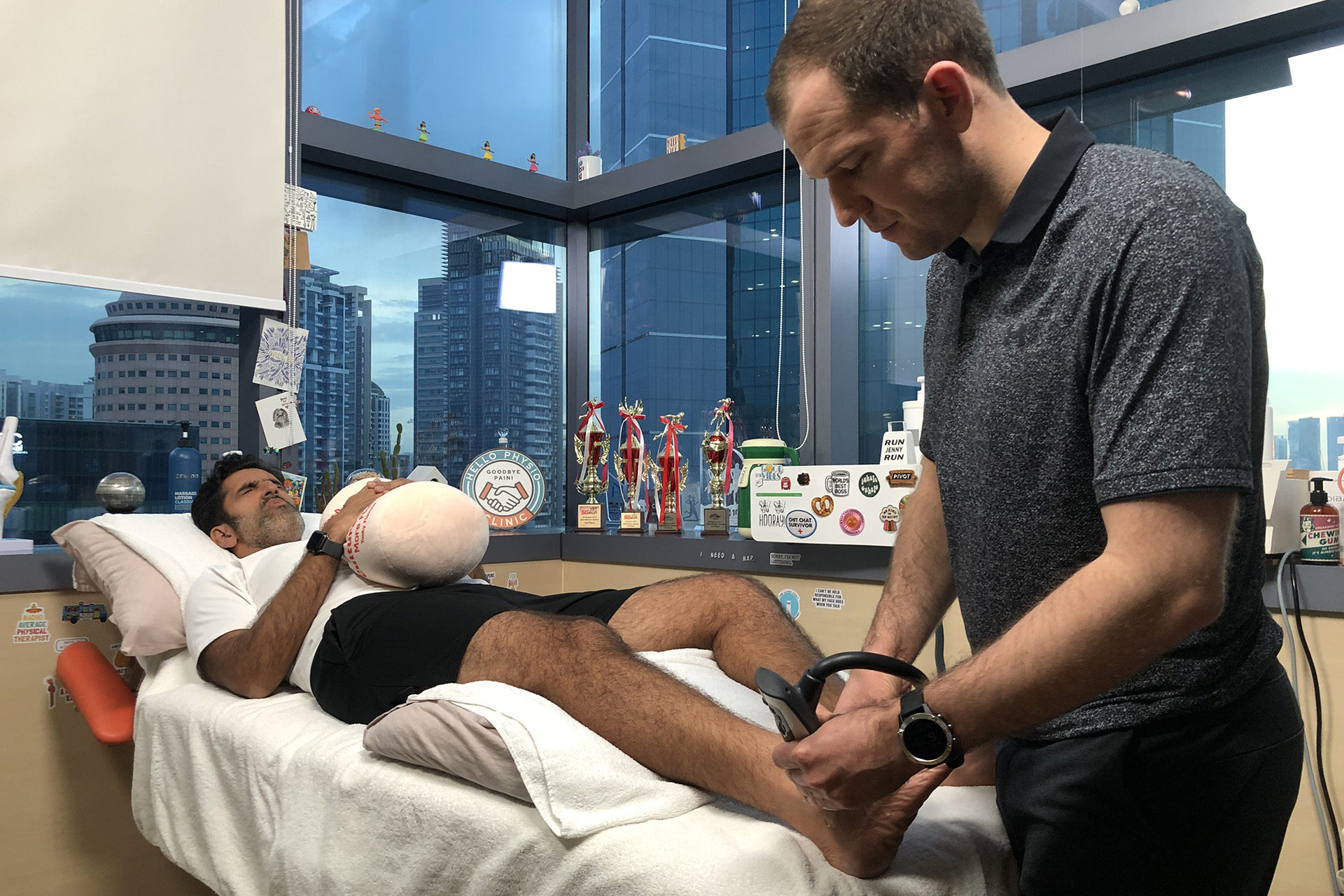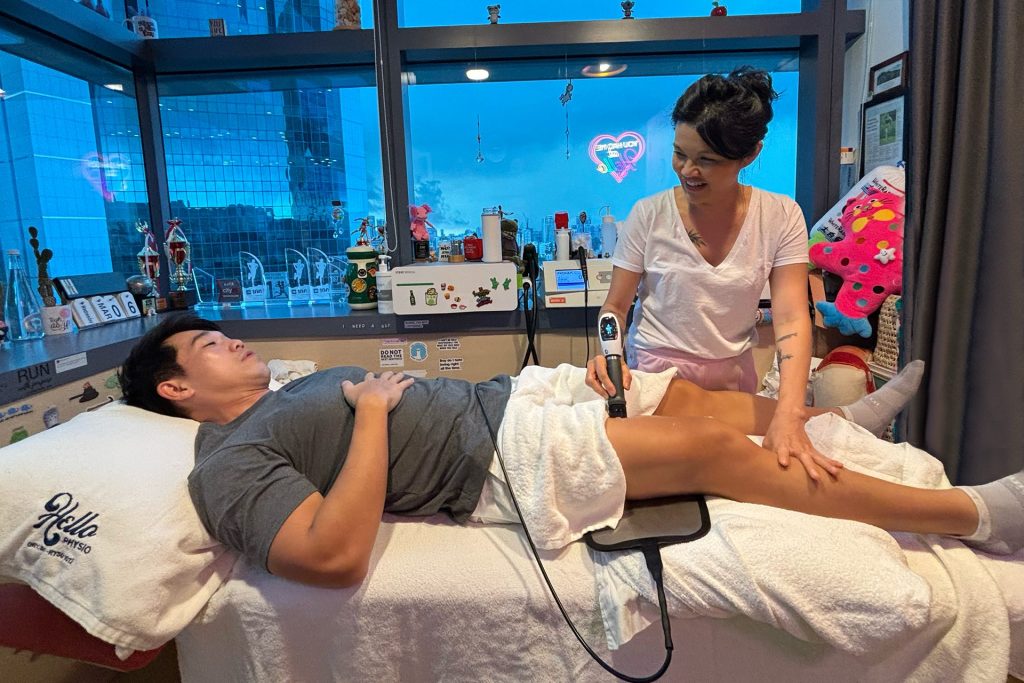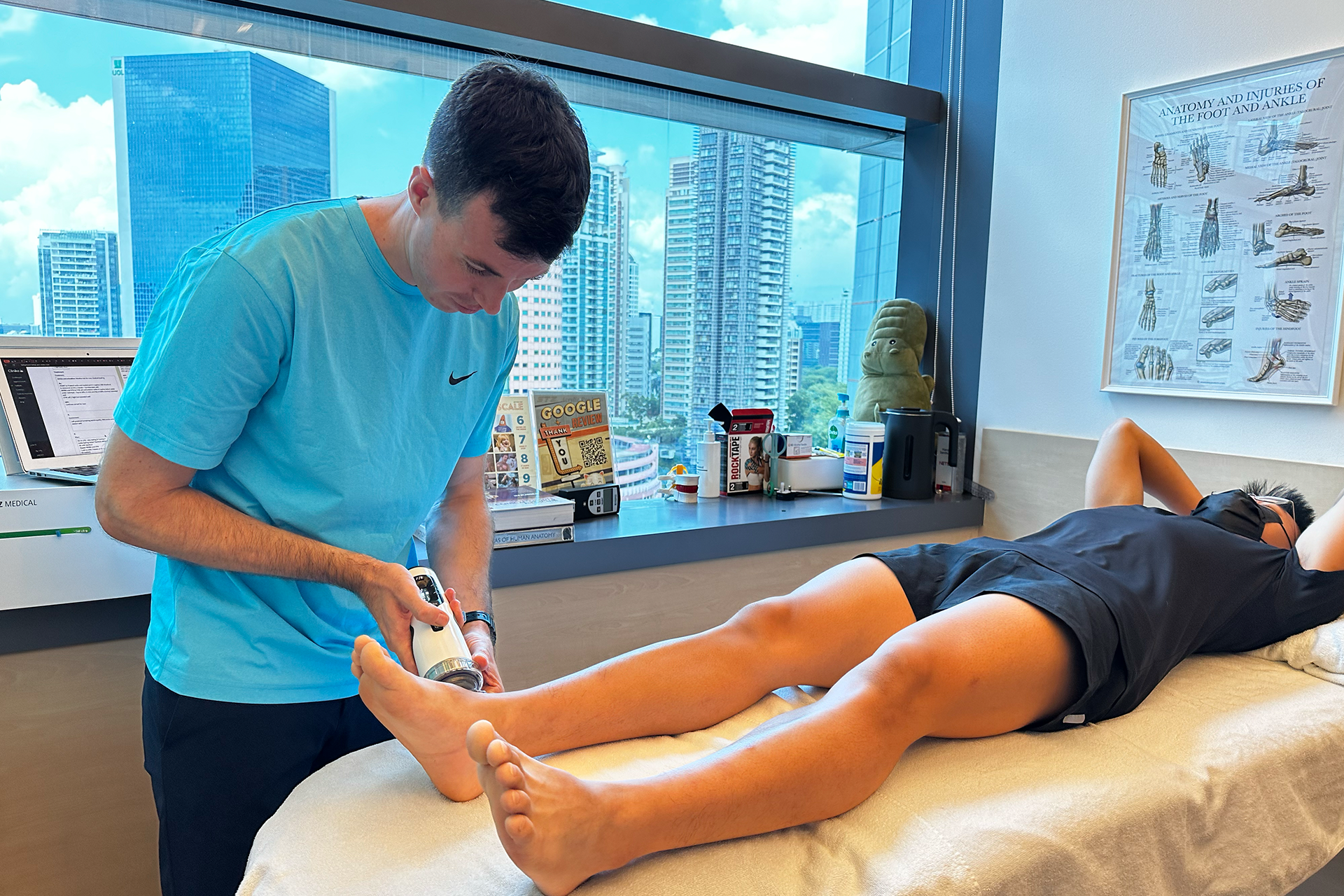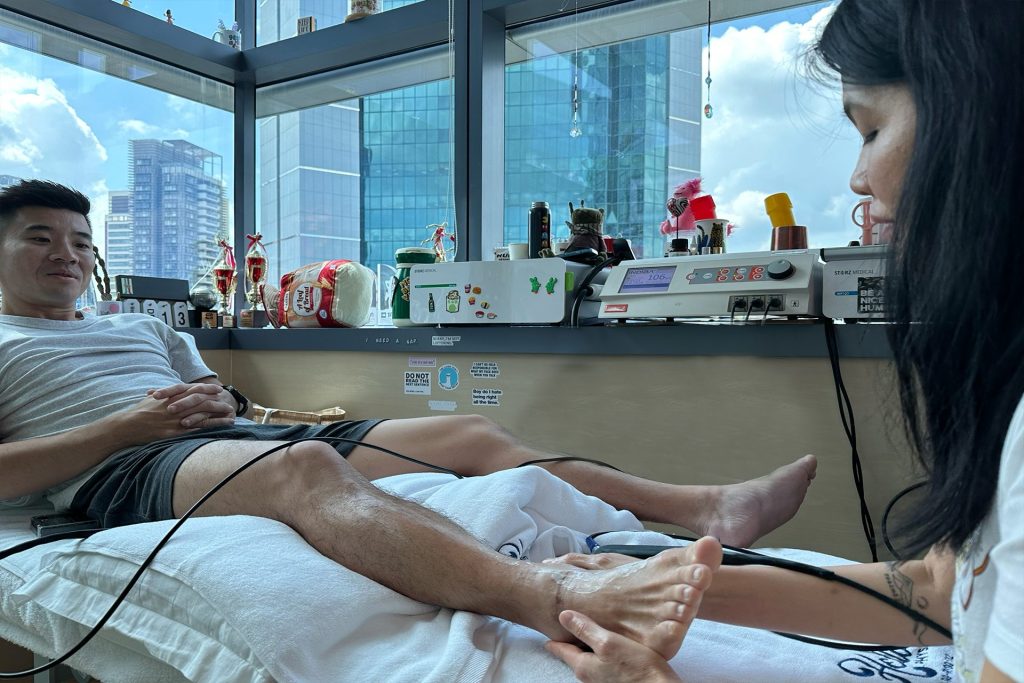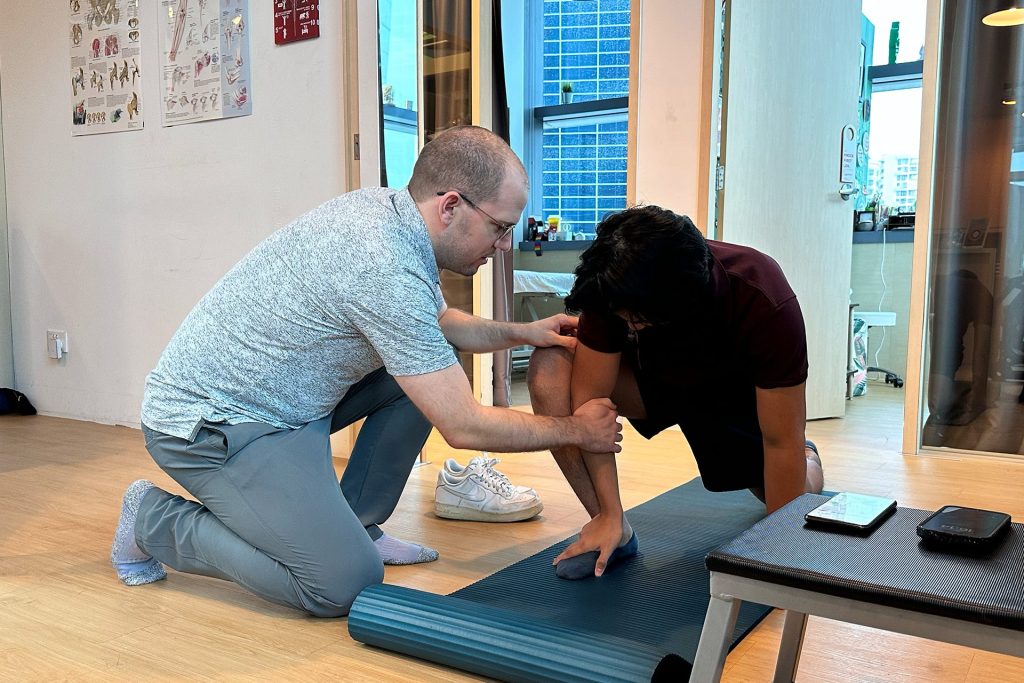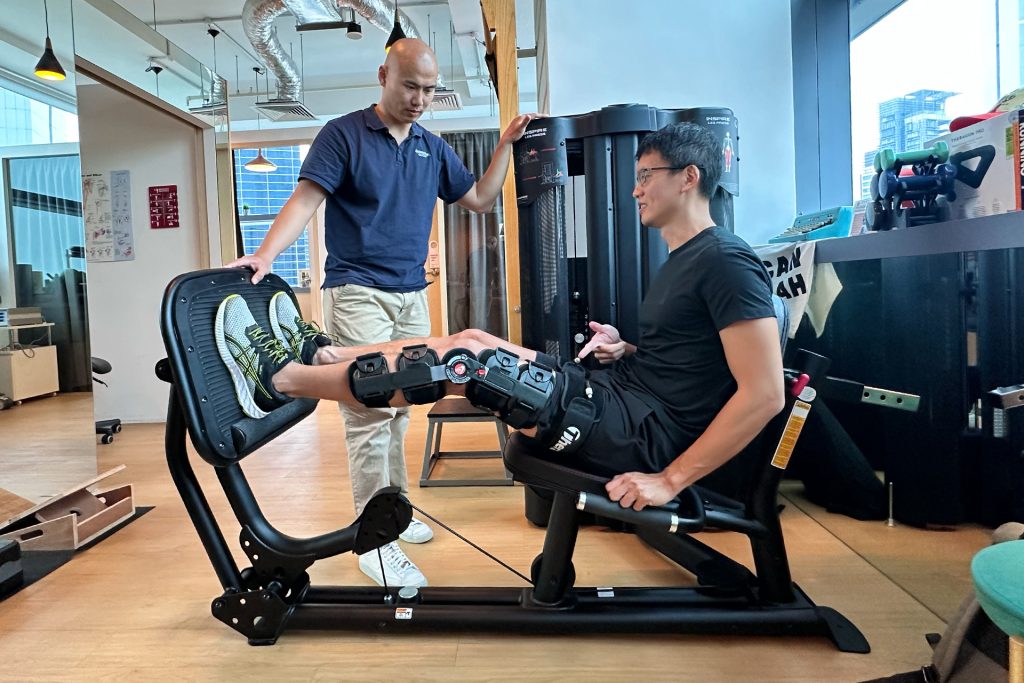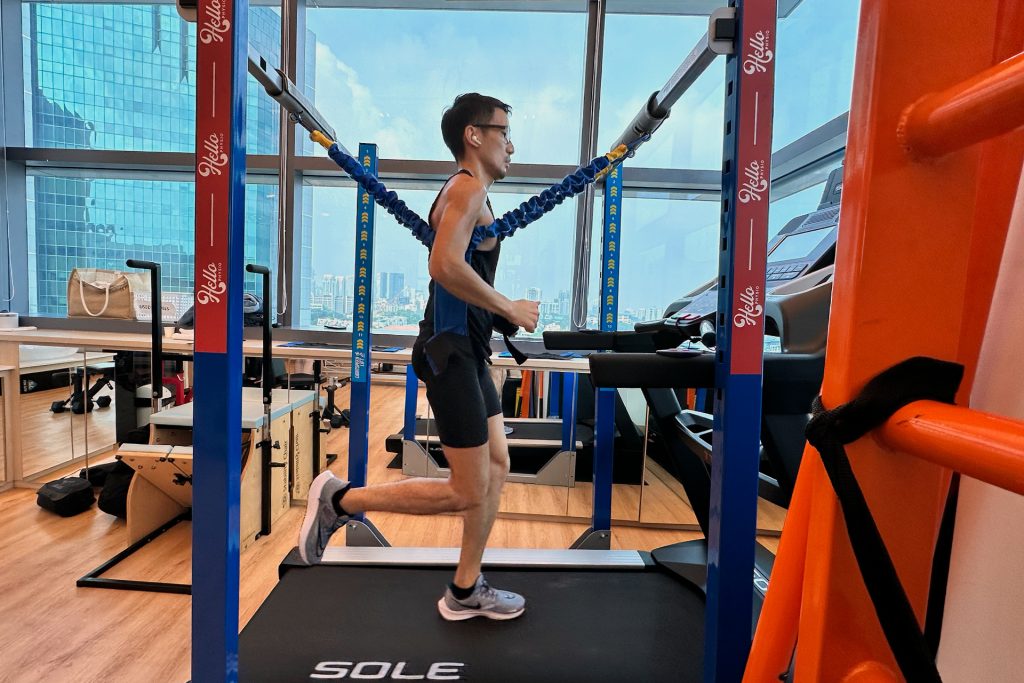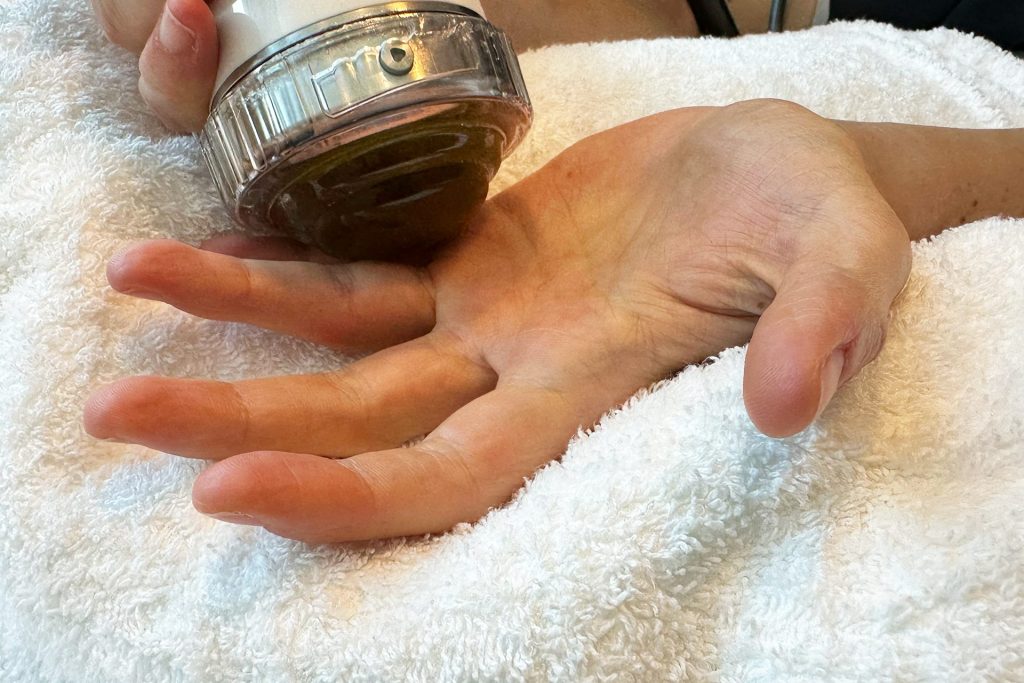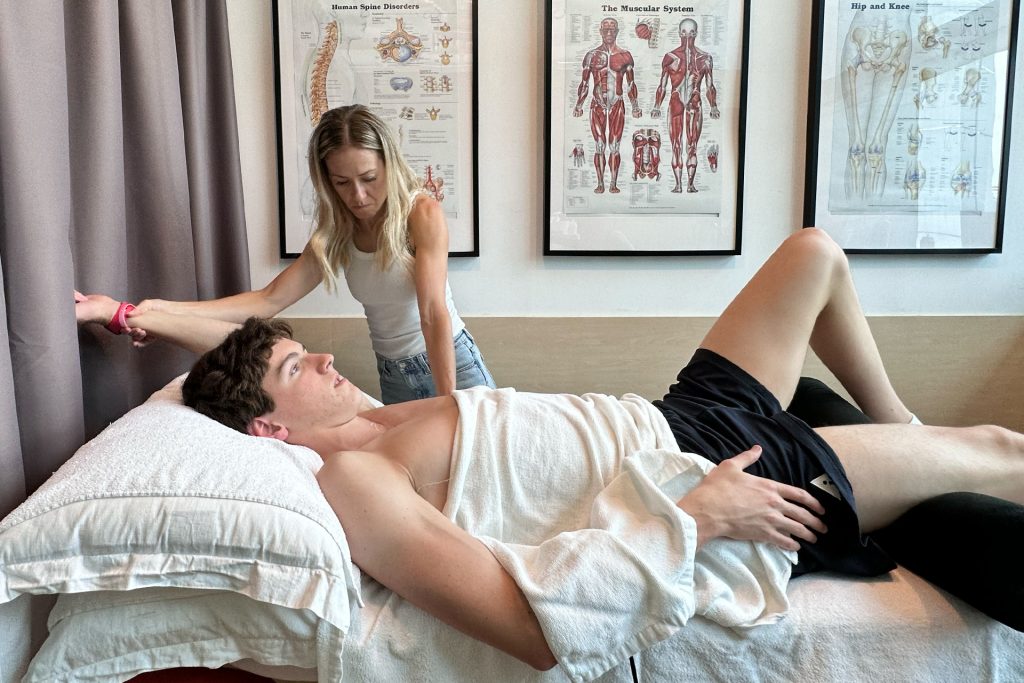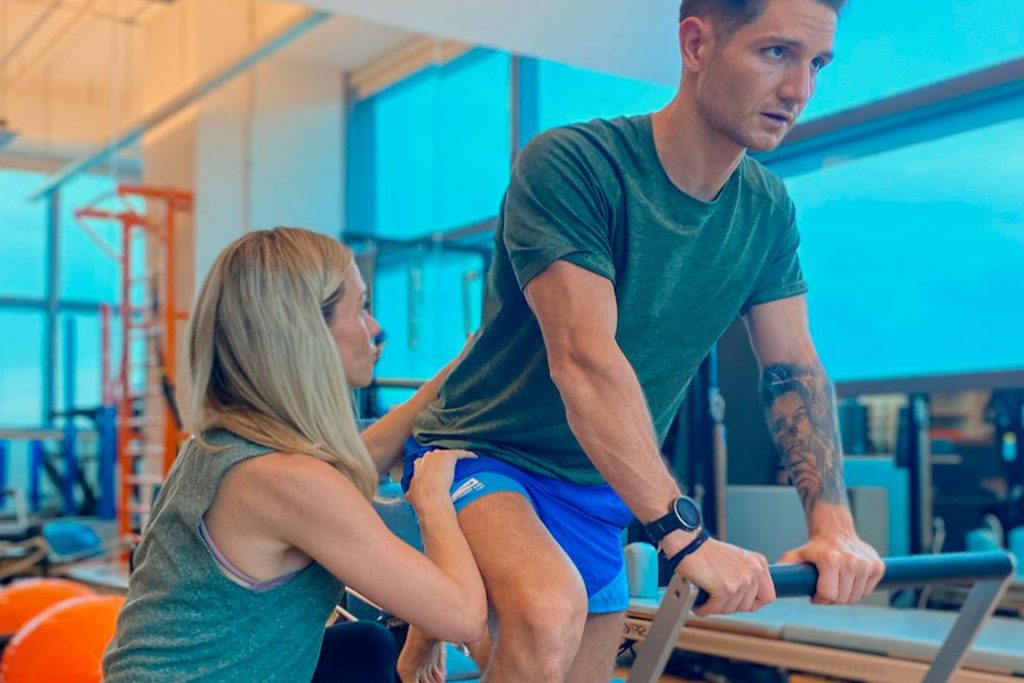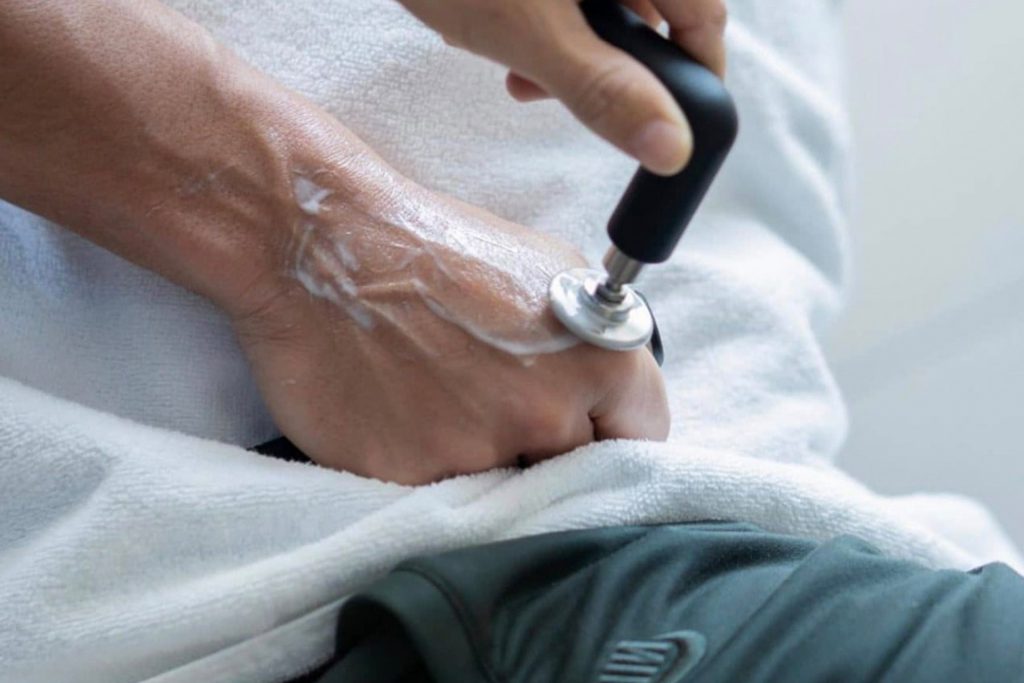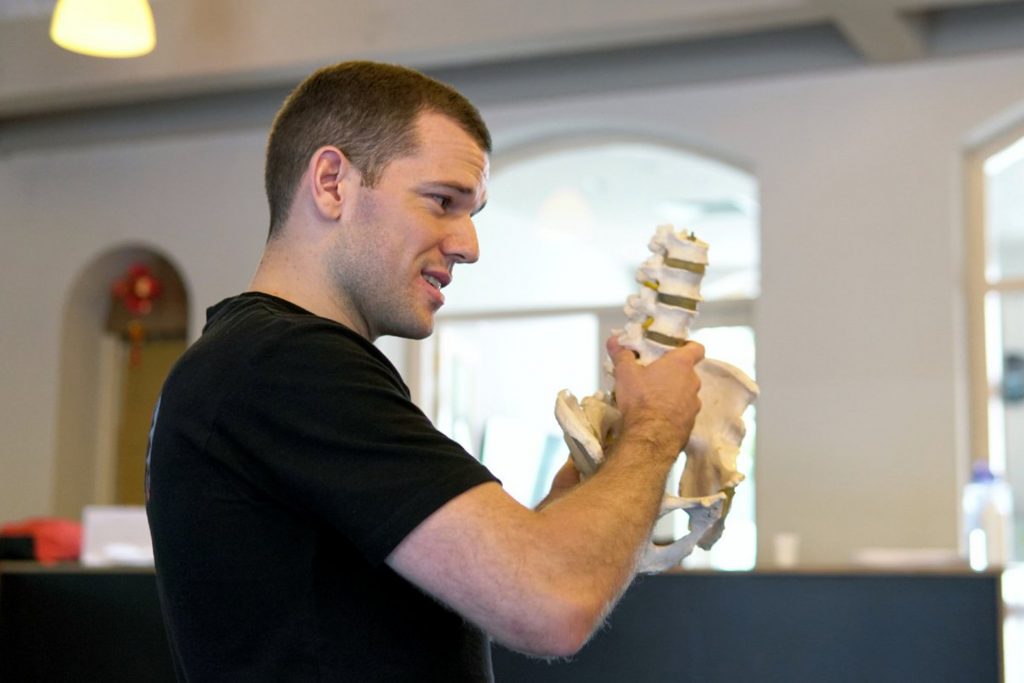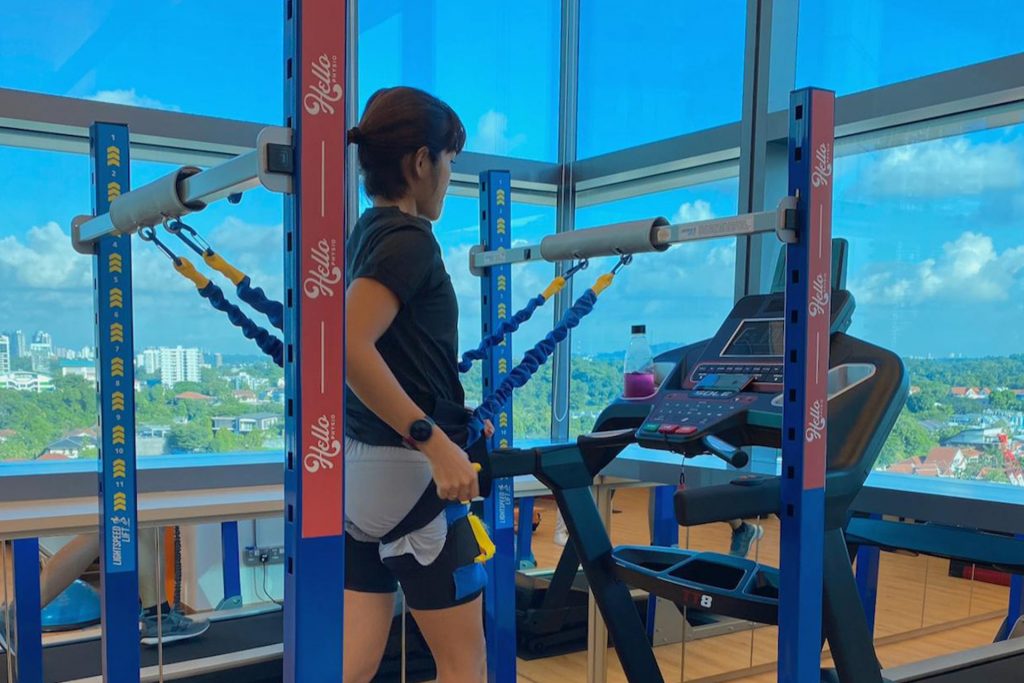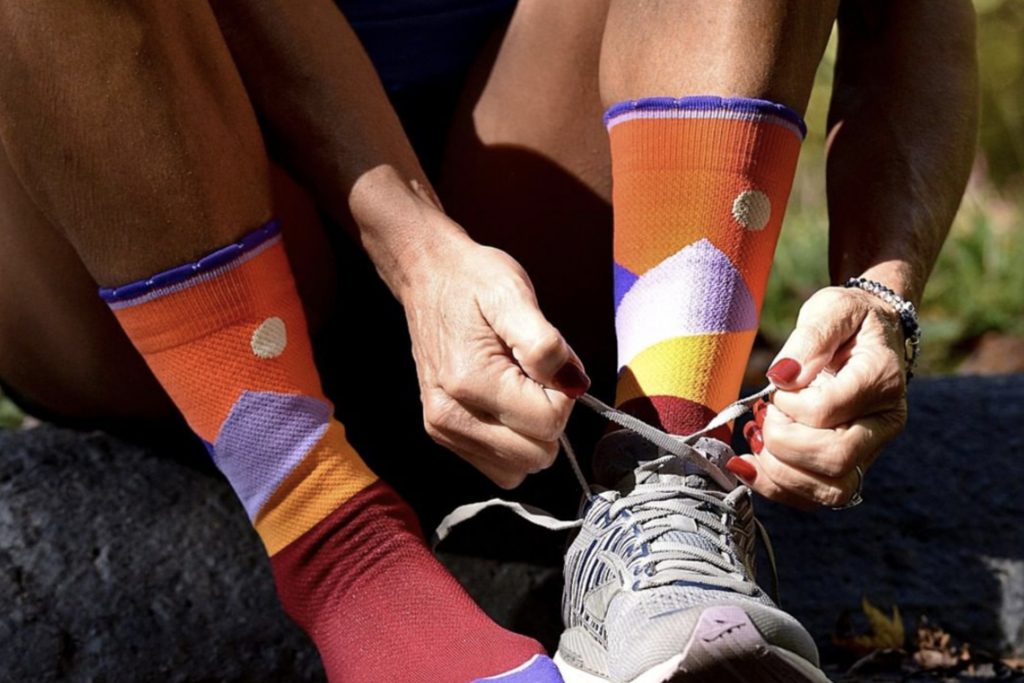Hamstring pain is a common injury that affects athletes, active people, and even those with more sedentary lifestyles. Whether it’s a dull ache, a sharp pull, or a persistent discomfort, hamstring pain can impede you from doing daily activities and it can affect your overall mobility.
What are Hamstring Muscles?
The hamstring muscles are three muscles (biceps femoris, semitendinosus, and semimembranosus) at the back of your thigh that play an important role in various leg movements. Together, they control knee flexion, hip extension, and the speed and direction of knee straightening. Whether walking, running, jumping, or climbing stairs, your hamstring muscles ensure smooth and coordinated body movements. If your hamstrings are causing you pain, your mobility and stability may be compromised.
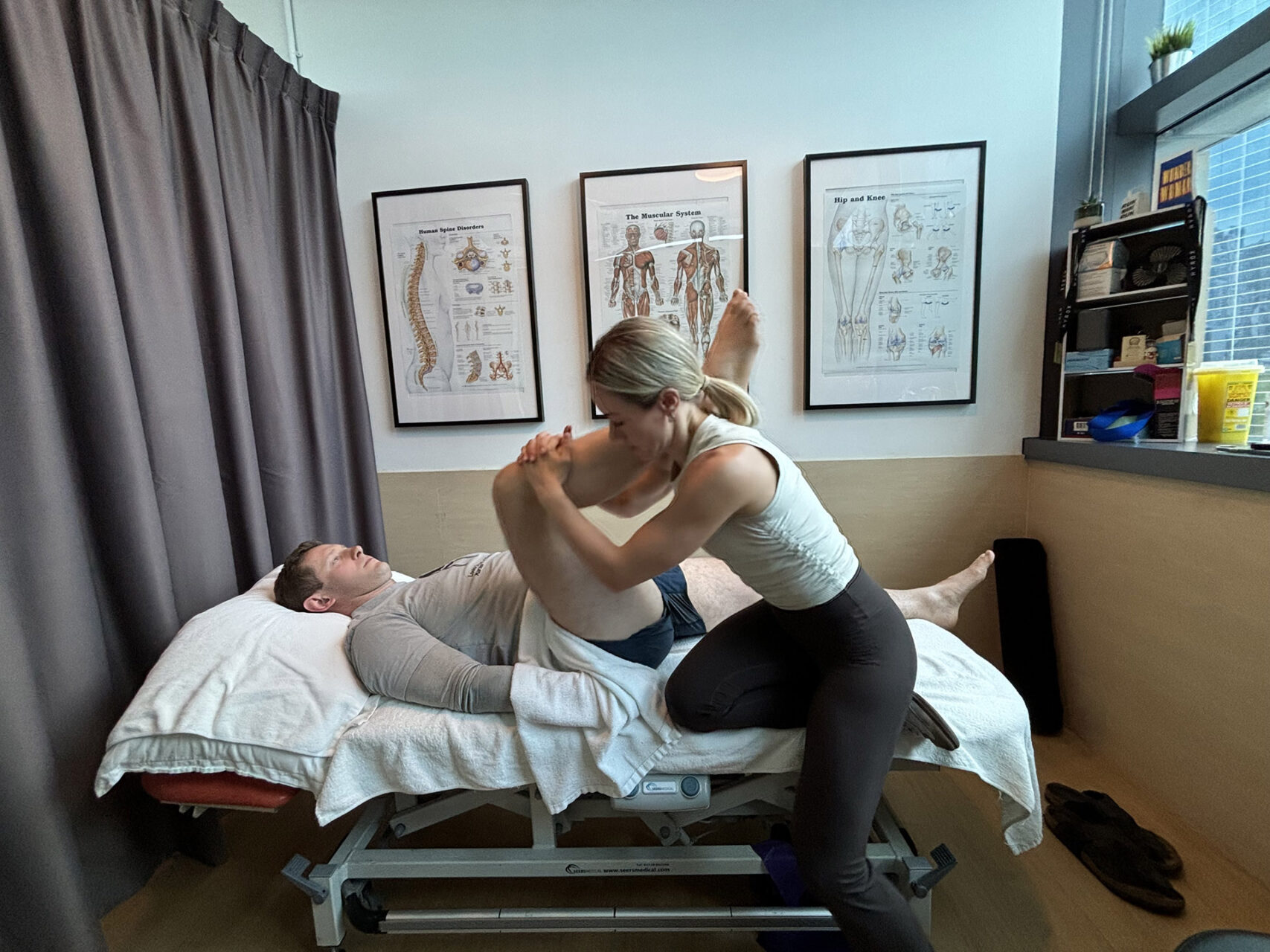
Common Causes of Hamstring Pain
Hamstring pain can come from various conditions, from acute injuries to chronic muscle imbalances. Hamstring injuries can be slight to severe, each with its challenges, causes and symptoms:
- Hamstring strains occur when the hamstring muscles are overstretched or overloaded, which is common in sports that involve sprinting, sudden acceleration, or jumping. Hamstring muscle strain often occurs when the hamstring muscles contract eccentrically during these activities.
- Hamstring tendonitis is the inflammation of the tendons that connect the hamstring muscles to the bone. Hamstring tendonitis is caused by overuse or repetitive strain on the hamstring, resulting in tendon pain and discomfort during movement.
- Hamstring tendon tears are a more severe injury where the tendon is partially or completely torn. This results in severe pain, limited mobility, and often requires more intense treatment.
- Proximal hamstring reattachment is when the hamstring tears away from the bone, requiring surgical reattachment. This type of injury is severe and requires more recovery time.
- Weak or tight hamstring muscles can cause discomfort and increase the risk of injury. Lack of flexibility and strength imbalance between the hamstrings and quadriceps can also cause chronic pain.
- Sciatic nerve irritation or compression can result in nerve-related pain that seems like hamstring tightness.
- Postural issues and sitting habits can cause hamstring pain when sitting, as sustained pressure on the muscles and tendons can cause stiffness and discomfort.
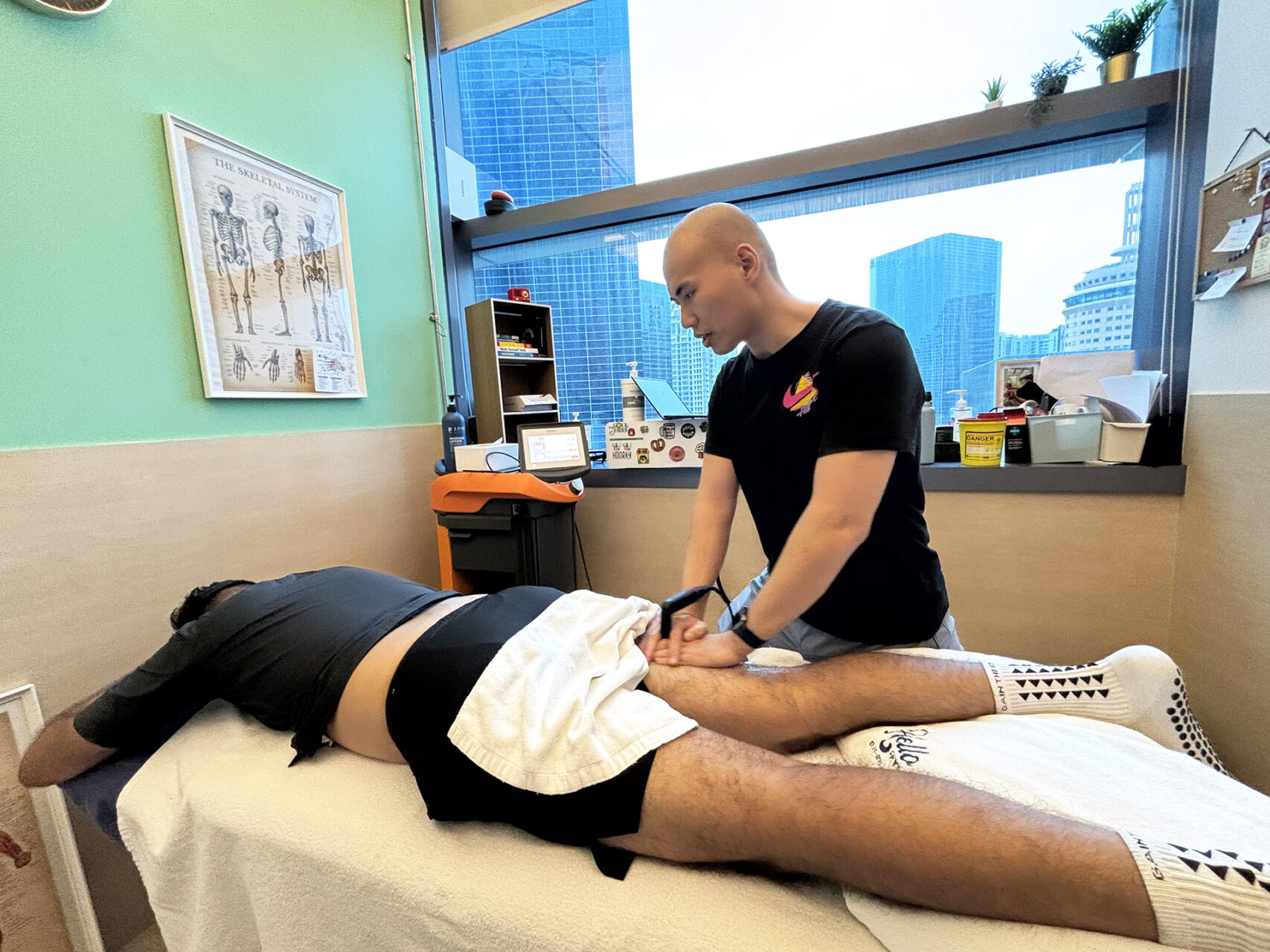
Why Does My Hamstring Pain Feel Worse in the Morning?
Many people experience hamstring pain in the morning. When the body is at rest for an extended period, the hamstring muscles and surrounding tissues can become stiff and cause discomfort upon waking. Stretching and mobility exercises in the morning can help to alleviate this stiffness and improve circulation.
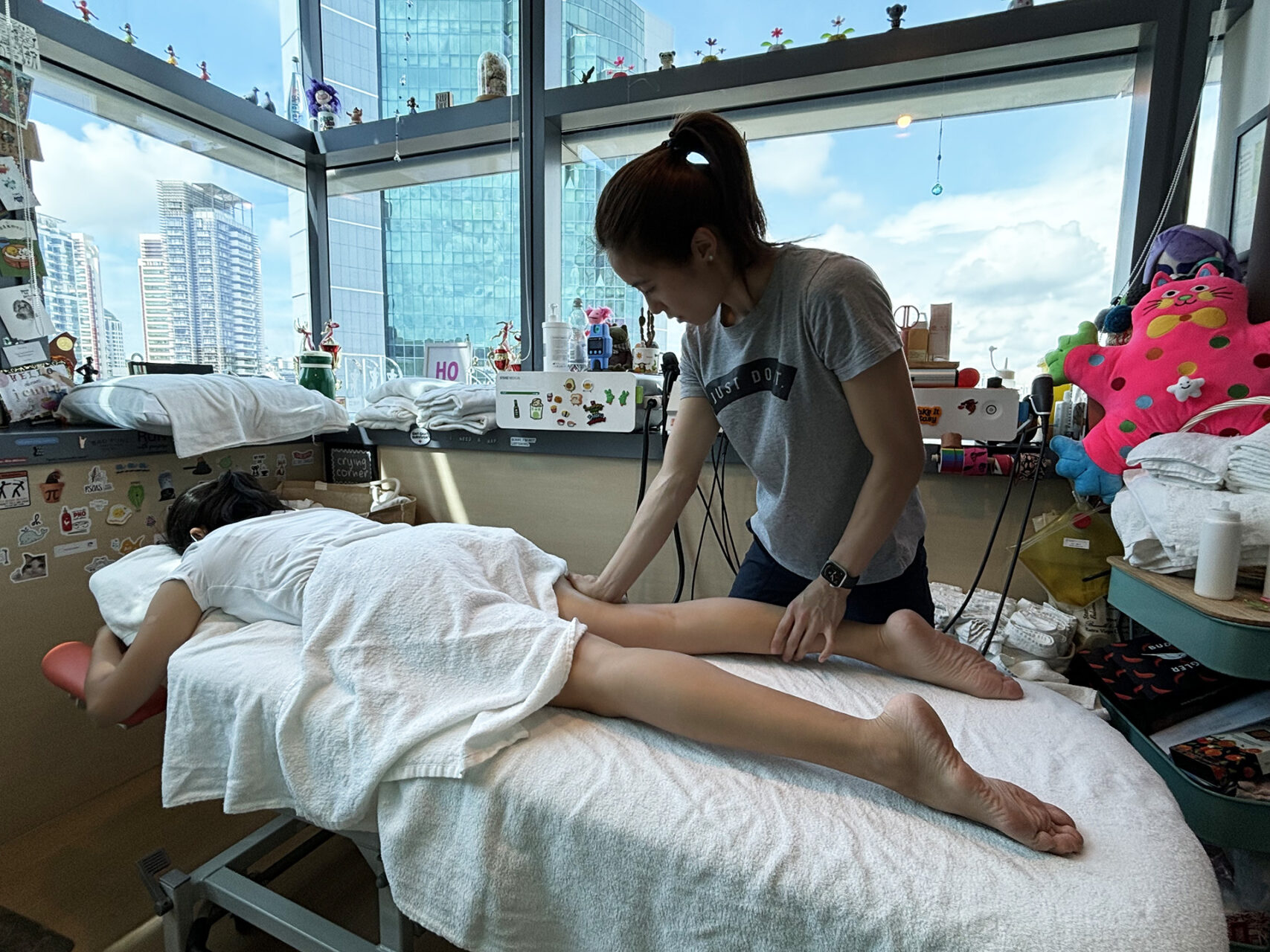
Outer Hamstring Tendonitis
Outer hamstring tendonitis, or proximal hamstring tendinopathy, is characterized by a dull, deep pain or aching in the back of your thigh, often extending into the hamstring muscle.
Outer hamstring pain is caused by hamstring muscle injuries, lateral muscle strain, sciatic nerve involvement, or improper movement mechanics. Activities such as sudden changes in direction, lateral lunges, or improper running form can cause pain along the outer part of the hamstring.
You may experience pain or stiffness in the back of your thigh, especially after exercise or physical activity. This discomfort can make it hard to do daily tasks. The affected area may become swollen or red, indicating inflammation.
Weakness and limited mobility in the affected leg may occur, making it hard to move the leg freely. Muscle spasms or cramping in the hamstring muscles can also be a symptom, adding to the discomfort. You may notice a reduced range of motion in your knee or hip, affecting your ability to do activities that require bending or stretching.
These symptoms develop gradually over time without a specific incident or trauma. In severe cases, the symptoms can be debilitating and affect your daily life and activities. Recognizing these signs early and seeking proper treatment can help manage the condition before it gets worse.
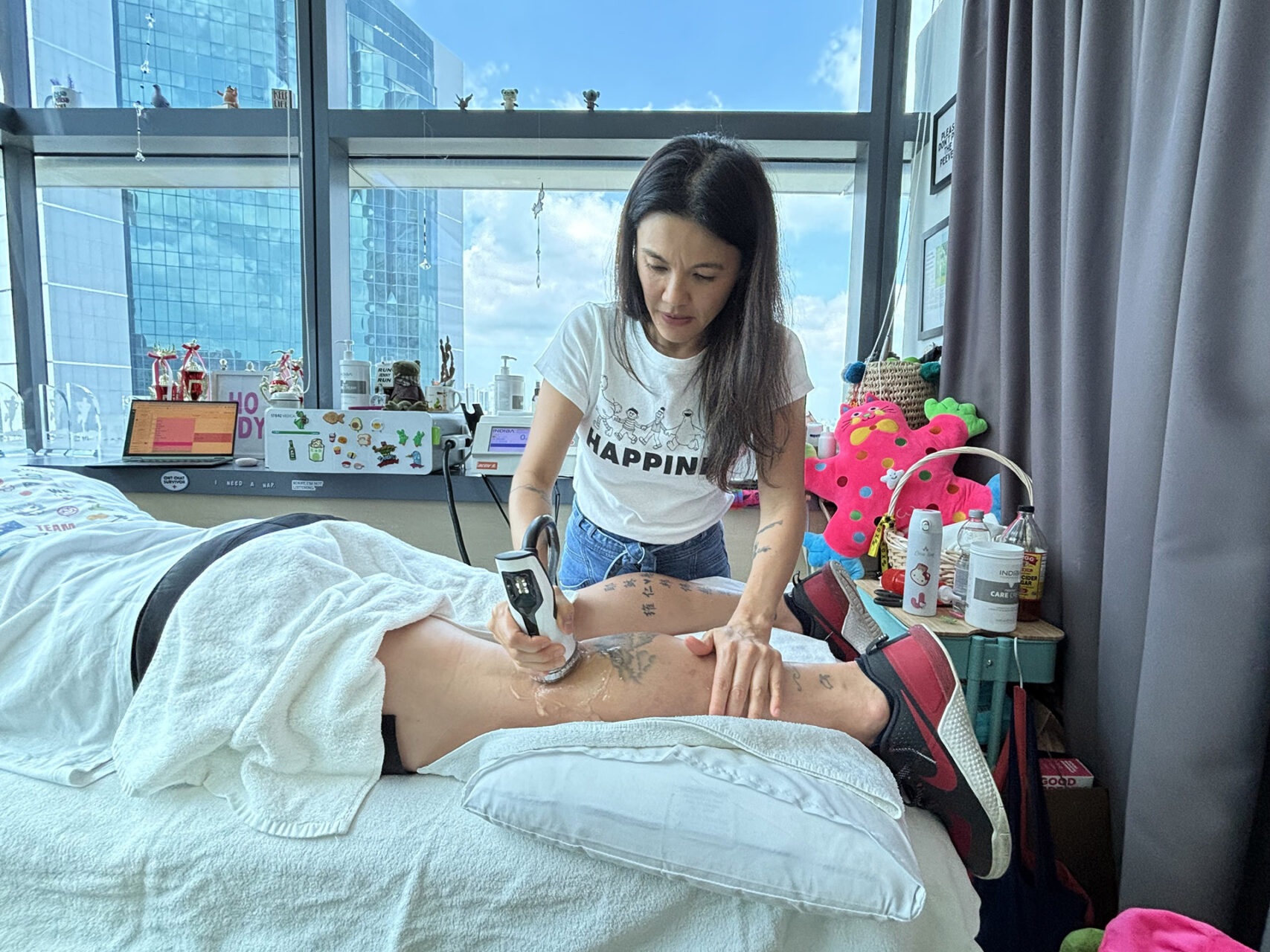
Physiotherapy Treatments for Hamstring Pain Relief
Physiotherapy offers diverse evidence-based treatments to relieve hamstring pain, improve flexibility, and prevent further injuries. At HelloPhysio, our physiotherapists assess each patient’s unique condition and create a customized treatment plan. Some options that may be included in your tailored recovery plan may include:
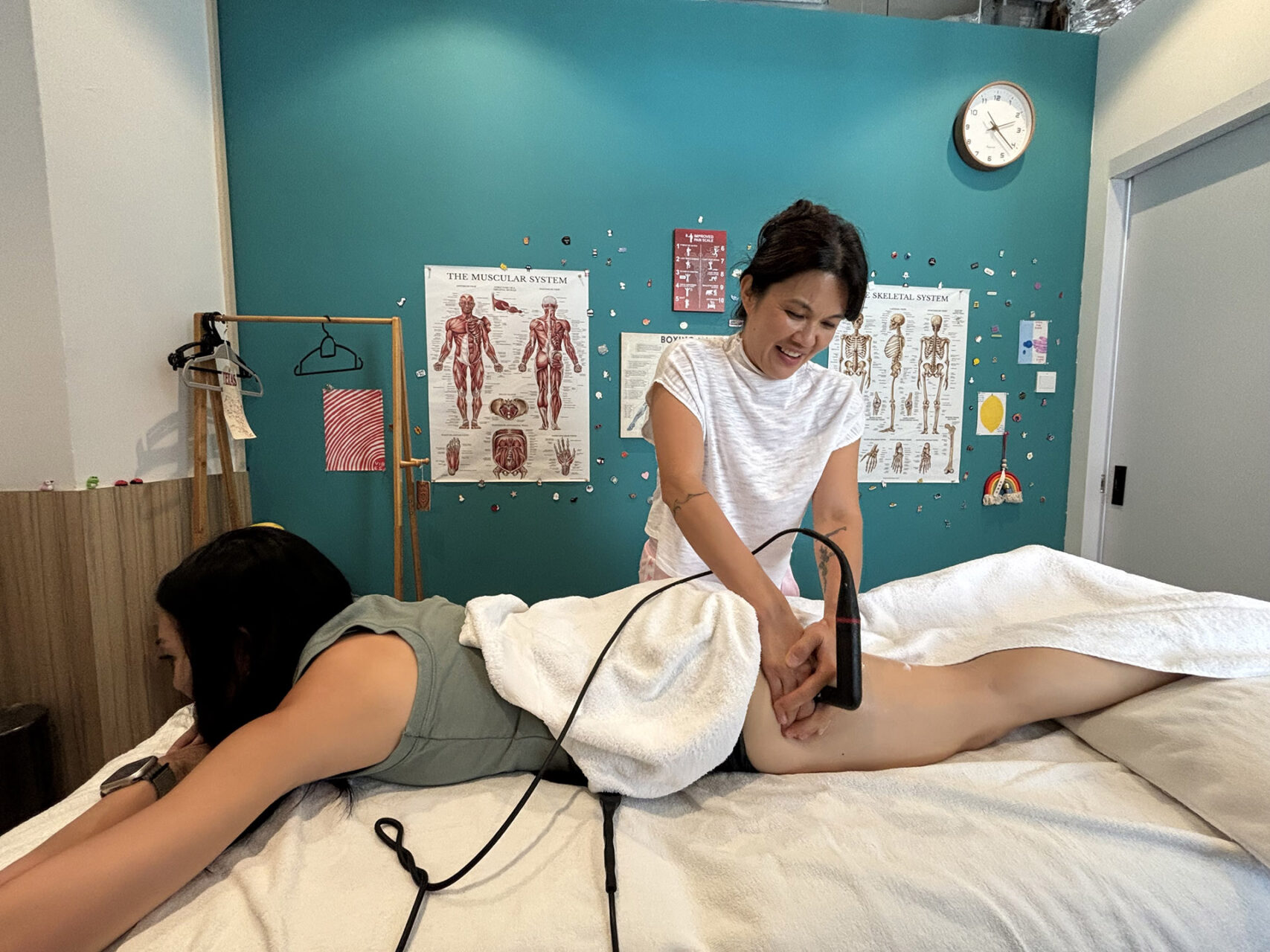
1. INDIBA® Therapy for Deep Tissue Healing
INDIBA is a radiofrequency therapy that accelerates healing by increasing blood circulation, reducing inflammation and enhancing cellular repair. This treatment is particularly effective for chronic hamstring pain, tendinopathy and post-injury recovery. With deep tissue oxygenation and fibroblast stimulation, INDIBA strengthens the hamstring tendons and muscles and reduces re-injury risk.
2. Shockwave Therapy for Pain and Tissue Regeneration
Shockwave Therapy is an advanced treatment that delivers acoustic waves to the affected area, stimulating collagen production, breaking down scar tissue and improving circulation. This treatment benefits individuals with chronic tight hamstring pain or tendon injuries by promoting faster healing and reducing stiffness.
3. Dry Needling for Muscle Release and Pain Reduction
Dry Needling can be a highly effective intervention for hamstring pain or chronic muscle tightness. This technique involves inserting fine needles into trigger points within the hamstring muscles to release tension, improve blood flow, and reduce pain. Dry Needling releases muscle knots and enhances flexibility to move without discomfort.
4. Manual Therapy and Myofascial Release
Manual therapy and myofascial release relieve hamstring tension, improve tissue mobility, and enhance recovery. These techniques target tight areas within the muscle fibers, reducing stiffness and improving range of motion.
5. Strengthening Exercises and Stretching
Strength and flexibility training is crucial in preventing hamstring pain relief and reducing the likelihood of recurring injuries. Physiotherapists incorporate targeted exercises, such as:
- Eccentric Hamstring Curls: Strengthening the hamstring muscles while lengthening them to improve durability and prevent strains. This is particularly important as the hamstring muscles contract eccentrically during activities like sprinting, making these movements likely causes of injury.
- Dynamic Stretching Routines: Leg swings, hip mobility drills, and hamstring stretches to maintain flexibility.
- Core and Hip Stability Exercises: Engage the core and glute muscles to support proper hamstring function and reduce strain on the lower body.
How to Prevent Hamstring Pain and Hamstring Injuries
To prevent hamstring pain and injuries, you need a combination of proper warm-ups, muscle conditioning, and movement awareness. Key preventive measures are:
- Gradual Progression in Training: Avoid sudden increases in exercise intensity or volume to avoid overloading the hamstrings.
- Muscle Balance: To support joint stability, ensure equal strength between the hamstrings, quadriceps, and hip muscles. A physiotherapist can help achieve this level of muscular control.
- Regular Stretching and Mobility Work: Daily stretching and movement exercises to maintain optimal muscle flexibility.
- Postural Awareness and Ergonomics: Adjust sitting positions and postures to reduce strain on the hamstrings, especially for individuals who experience hamstring pain when sitting.
- Use of a Knee Splint: This preventive measure keeps the leg in a neutral position. It is especially useful during the immobilization phase before transitioning to physical therapy to restore range of motion and strength.
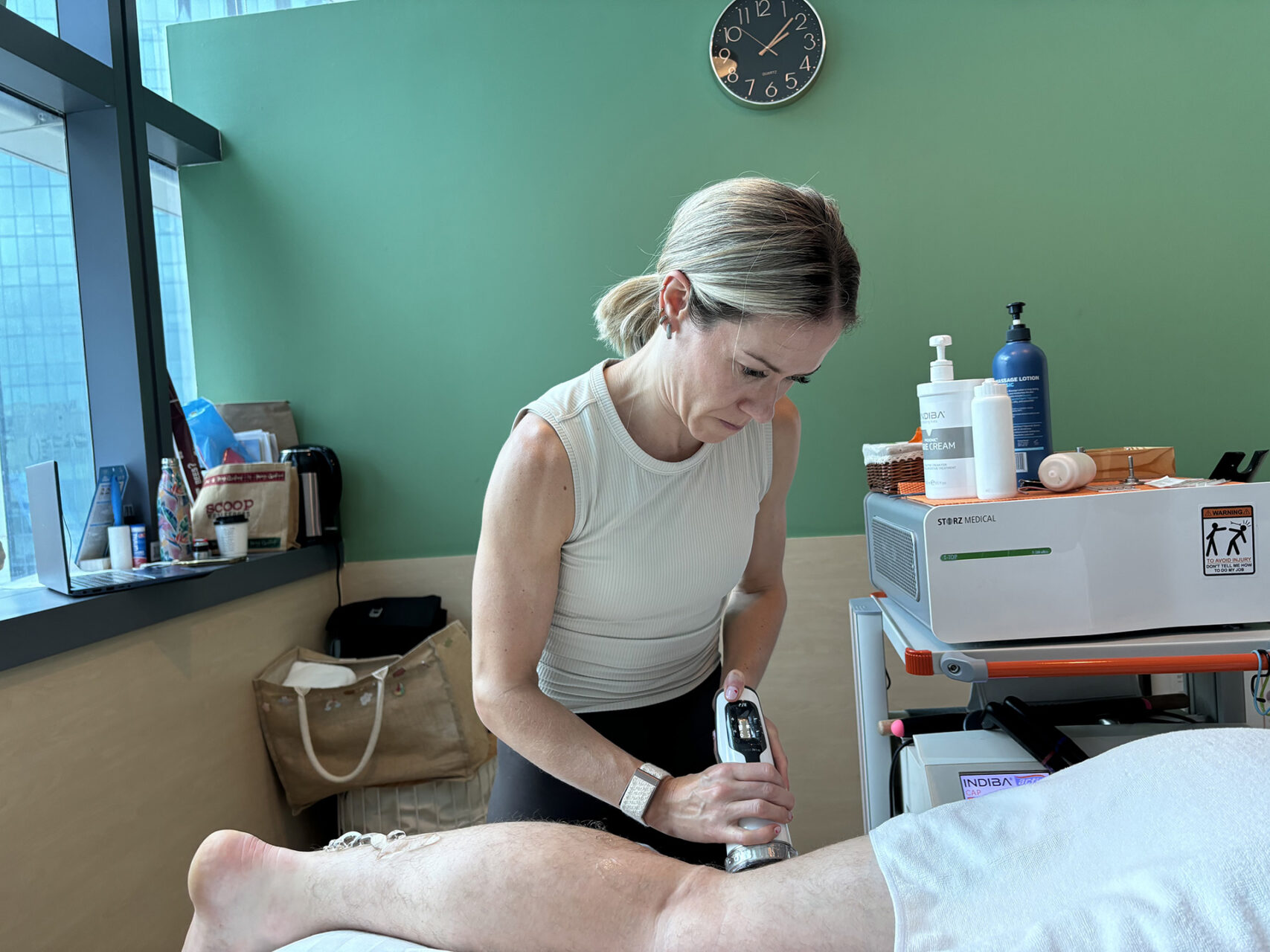
Recover Faster with Physiotherapy
Hamstring pain can be an annoying and limiting condition, but you can recover with the proper physiotherapy approach. Whether it is acute strains, chronic tightness, or tendon injuries, physiotherapy techniques such as INDIBA Therapy, Shockwave Therapy, Dry Needling, and Manual Therapy can provide pain relief and rehabilitation solutions. In cases of severe tendon tears where the tendon is torn away from the bone, surgical intervention is often required, followed by crucial rehabilitation to ensure proper recovery.
If you have hamstring pain, don’t wait for it to worsen. Contact HelloPhysio today to book a consultation and start your journey to recovery, strength and long-term injury prevention.


